
Laos Travel Guide: Complete 10-Day Itinerary
Travel through Laos on an unforgettable 10-day journey. Drive through bright green paddy fields, on empty jungle roads, and only stopping to gaze at the forest-covered cliffs above. Despite sharing a border with Thailand , Cambodia , and Vietnam , Laos is still under the radar as a travel destination. Luckily this gives it serenity and peace, which is the perfect accompaniment to the natural wonders of blue lagoons, epic caves, and crashing waterfalls.
Travelling in Laos: a 10-day Itinerary
Travel in Laos at a slow pace: 10 days allows for relaxation, as well as being able to fit in all the things to see and do. If you have less time and want to do the route faster, it could be easily done in 7-8 days. Here is the day-to-day itinerary to travel in Laos.
* Note that this travel route covers northern Laos.
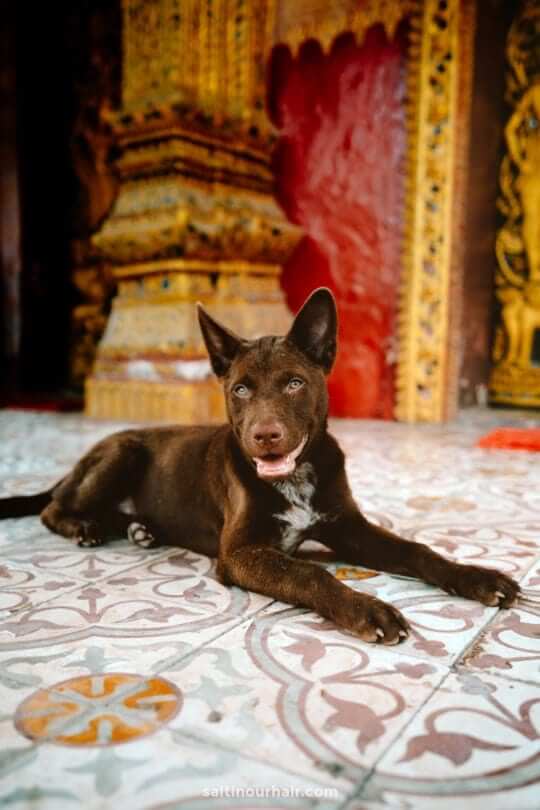
Day 1-4: Luang Prabang
Fly into the enchanting town of Luang Prabang . The town is a UNESCO World Heritage site due to its architectural significance and excellent preservation of spiritual practices and customs.
Read: Things to do in Luang Prabang
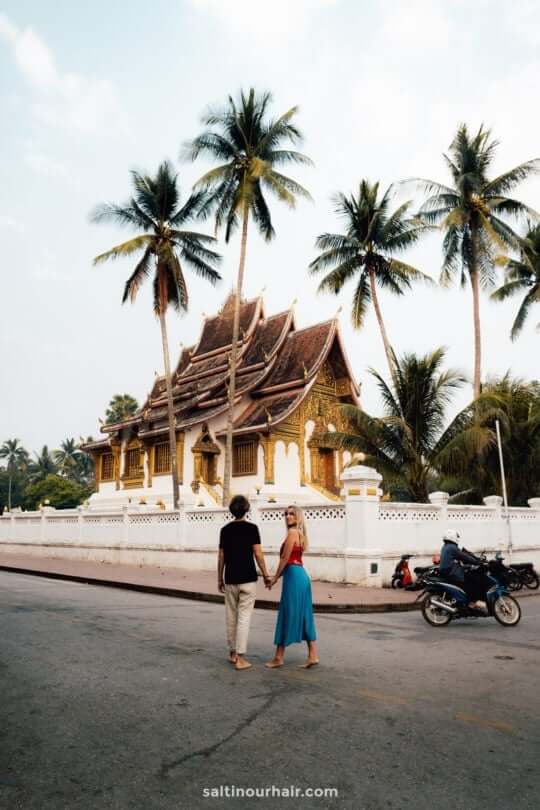
Discover all the stunning gold-detailed temples, surrounded by vibrant purple and pink flowers. The spirituality of the town is at dawn, during the alms-giving ceremony, where orange-robed monks march together through the streets, receiving flowers and food from the town residents.
Hotels in Luang Prabang 😴
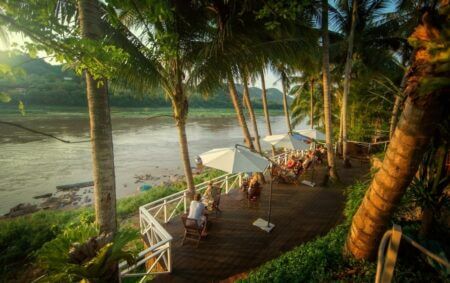
Day 5-8: Vang Vieng
Vang Vieng is a town for adventure lovers. Limestone karsts, providing awesome hikes and panoramic viewpoints, surround the town. Hire a motorbike and drive to one of the many turquoise lagoons and caves nearby.
Read: Vang Vieng – Things to do guide
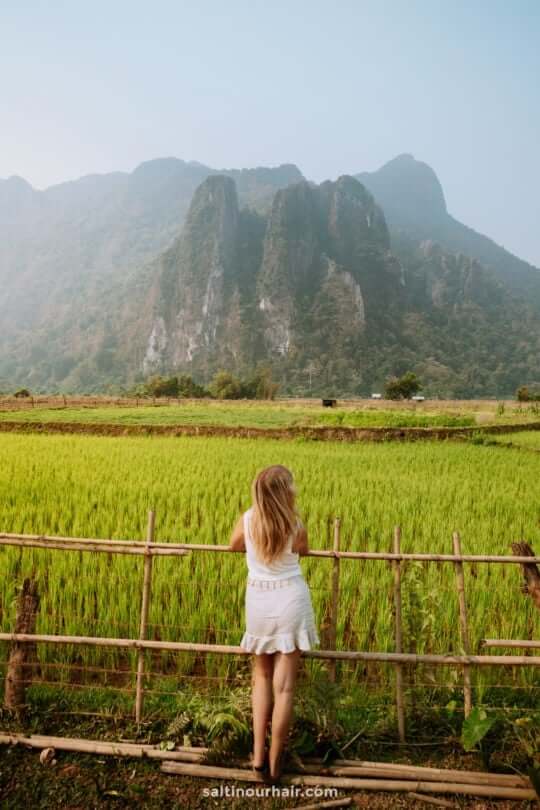
The town, nestled on the banks of the beautiful Nam Song river, provides the perfect water playground for tubing or kayaking. Fill your days with exciting activities and end them by wandering in the stunning paddy fields at sunset.
Hotels in Vang Vieng 😴
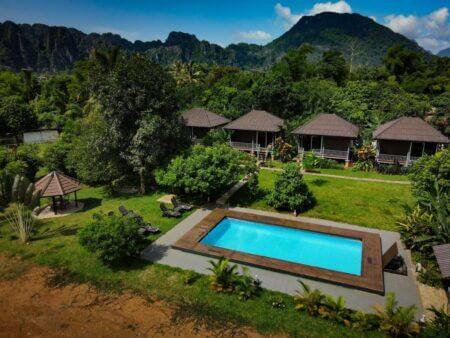
From Luang Prabang to Vang Vieng
The drive by car from Luang Prabang to Vang Vieng takes around 5 hours. Traveling in Laos is a bit difficult as the roads are not (yet) well-developed. There are plenty of shared minivans you can take from the Luang Prabang bus station, leaving either in the morning or the afternoon.
A brand-new train track has opened and now provides a faster travel alternative between destinations.
Find the train or bus timetable and tickets here
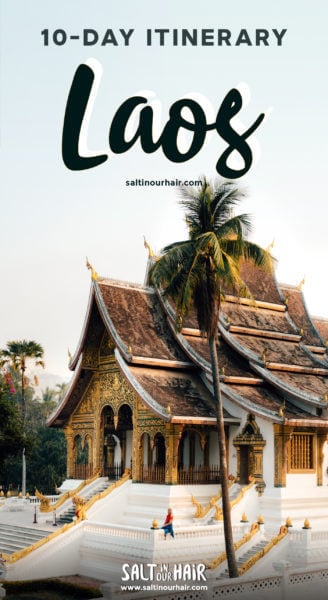
Day 9-10: Vientiane
End your Laos travels in the capital city of Vientiane! Although it has the status of a city, it feels more like a town. As a result, you will only need a day or two to see all the things to do in Vientiane. Home to the grand presidential palace and plenty of impressive temples, the city is the perfect place to get your fix of culture and history.
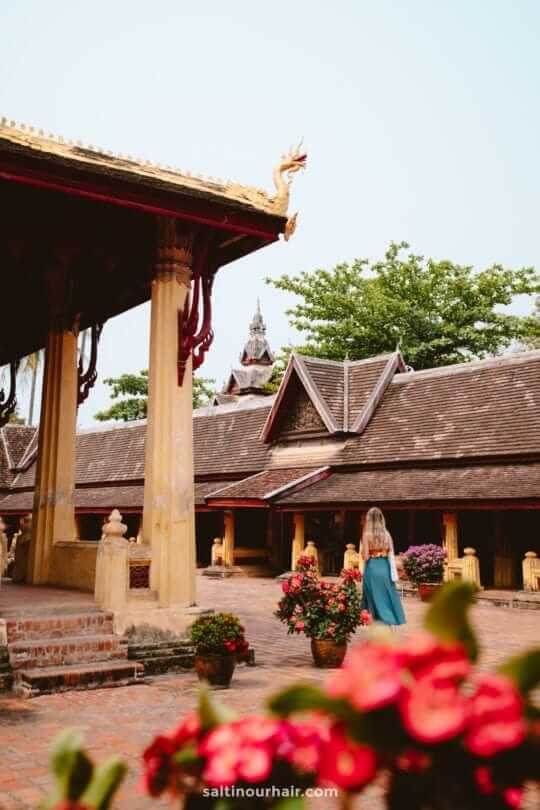
Laos during the war
During the Vietnam war, 2 million tonnes of bombs were dropped on Laos. Still to this day, some remain unexploded, and many Laotians have been hurt or killed as a result.
The COPE visitor center displays artifacts and films to explain the history, and they also work to help rehabilitate victims who have been affected. A very powerful experience and an essential visit in order to better understand the history of this resilient country.
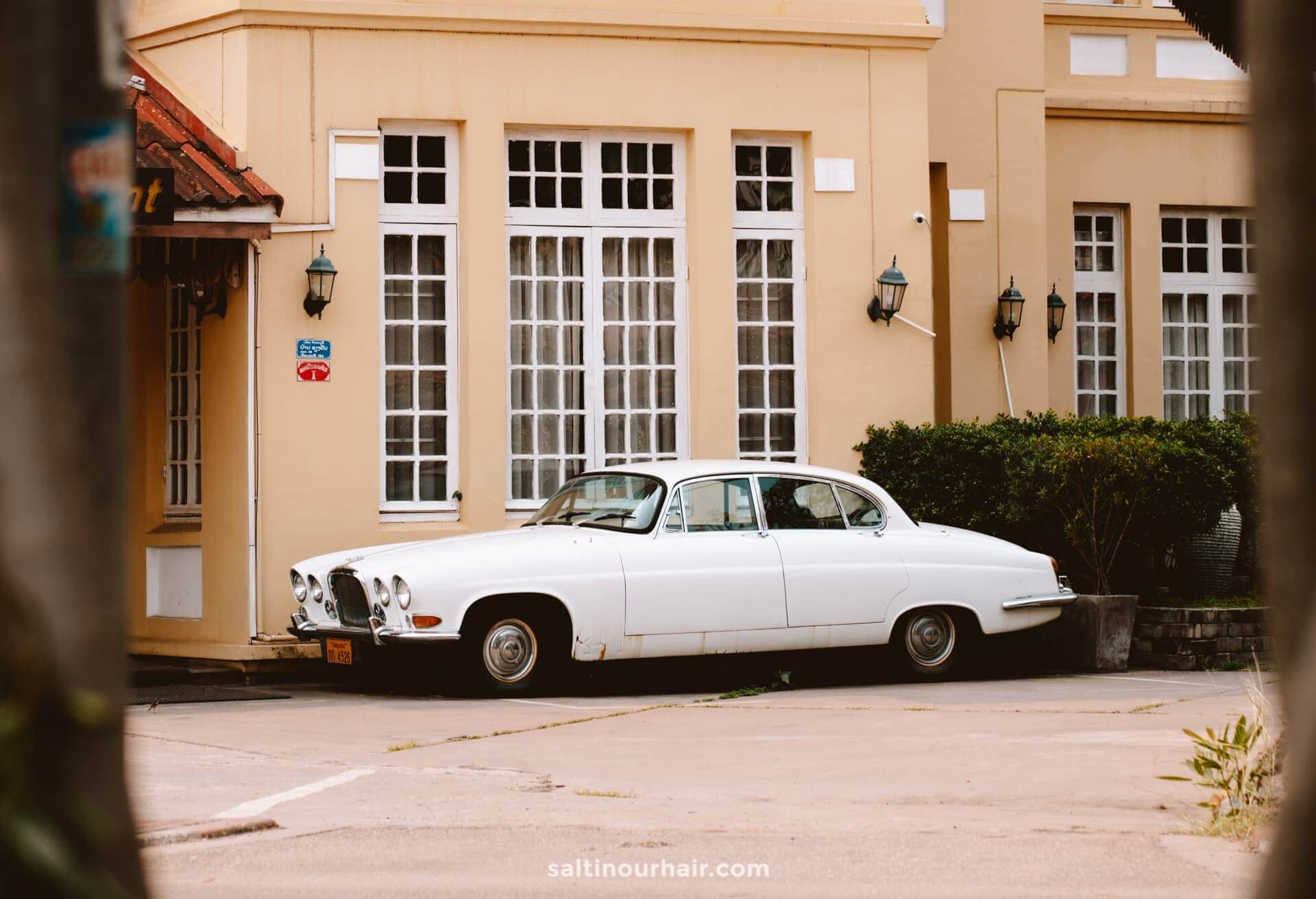
Buddha Park, Vientiane
If you have time, take the morning to travel 25km outside of the city to the incredible Buddha Park. Here you will find a park filled with over 200 giant buddha statues, all with a slightly weird and wonderful look about them. It is a 40-minute bus journey but worth it to see a more unusual attraction.
Hotels in Vientiane 😴

From Vang Vieng to Vientiane
The journey to Vientiane takes approximately 1-2 hours by minibus on the new highway. You can also opt for traveling by the new train; this takes around 2 hours to the city center.
Tip: There is also an international airport in Vientiane, so depending on whether your flight arrives into Vientiane or Luang Prabang, you can reverse this itinerary.

Costs of Traveling in Laos
The cost of travel in Laos is very cheap. This is mainly because all activities are centered around nature. For example hiking to cliff points, exploring caves, or swimming in lagoons or waterfalls. Entrance to caves, lagoons, and also to cross bridges are not normally more than 1-2 USD. On a budget, travelers can expect to spend about 10-20 USD a day. If you’re able to spend a bit more you can stay in more high-end accommodation for a very reasonable price.
Travel on a budget in Laos, from $180 − $270 USD weekly per person, mid-range $300 − $950 USD, and high-end from $930 − $1640 USD. However, costs depend on factors like accommodation, transportation, and activities. We did not include flights. Check flight prices here
- Hotels: $15 − $200 USD Check available hotels
- Hostels: $7 − $25 USD Check available hostels
- Transport: $5 − $10 USD Book public transport
- Food: $5 − $15 USD
- Activities: $5 − $10 USD See tickets & tours
- Sim: $1 − $3 USD Get an eSIM or SIM here
- Travel Insurance: $2 − $6 USD Get Travel Insurance
How to Get Around Laos
The infrastructure in Laos is not yet well developed. Roads are often dirt or unfinished which can make bus journeys slow, especially in the wet season when the roads can flood. Although this makes traveling in Laos more difficult, it is also what gives Laos its charm!
The new train between destinations is very convenient and fast but is also a lot more expensive if you are traveling on a budget.
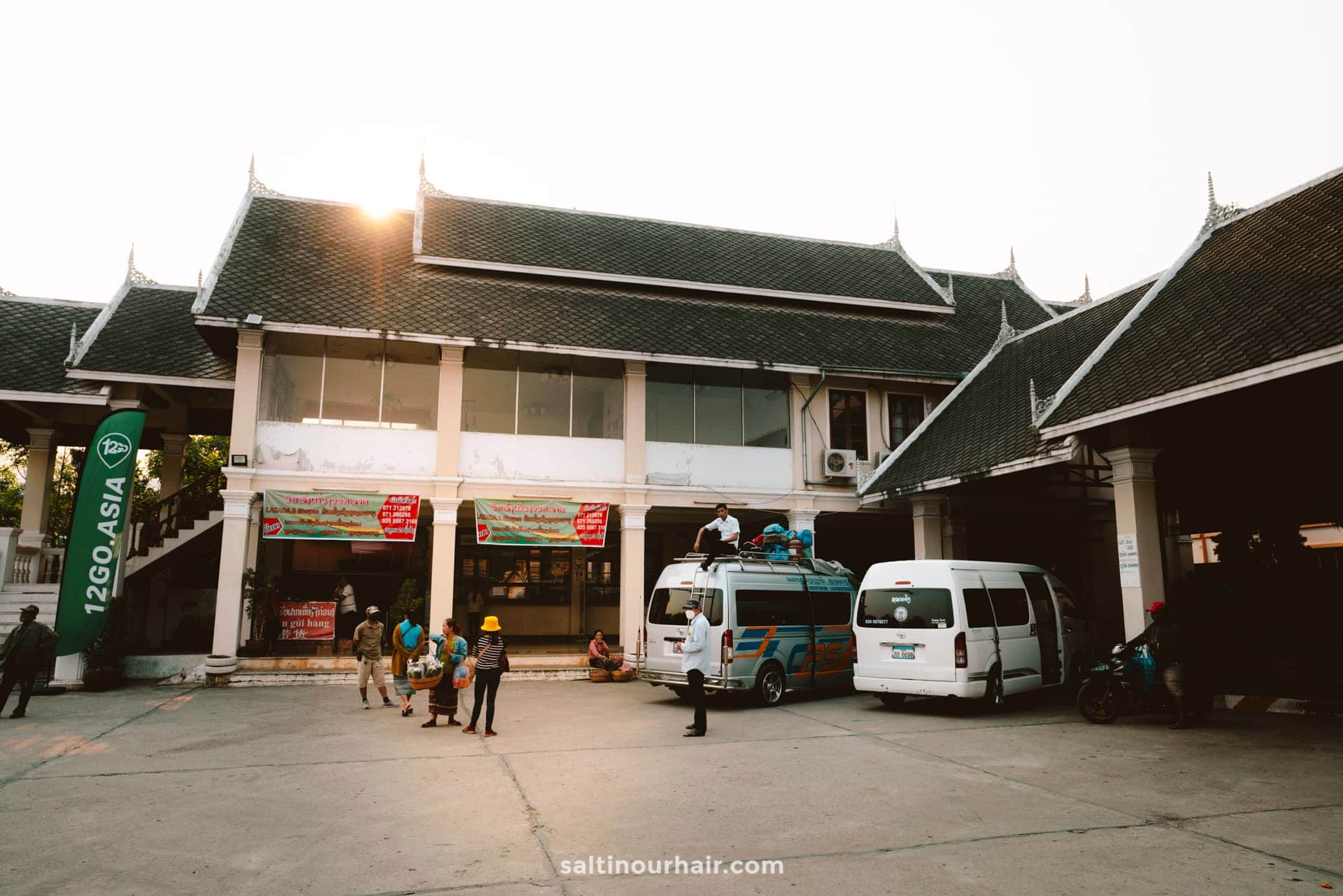
You can travel through Laos by train or bus. Once at your destination, it is very easy to get around, either on foot or by hiring a motorbike. Songthaews are also widely available- a pick-up truck-style taxi.
Tickets: Book your train or bus tickets and flight tickets here.
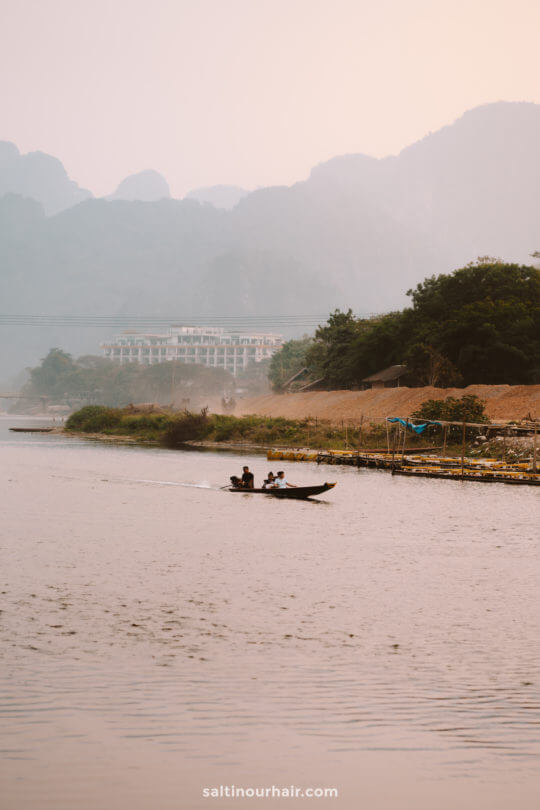
Best Time to Visit Laos
To see the lagoons at their most turquoise blue, visit in the dry months between October to March. Keep in mind that October- February is the cooler part of the dry season. After this, temperatures can be hot, and the farmers start burning season in the fields which can cause the sky to be hazy and smoky.
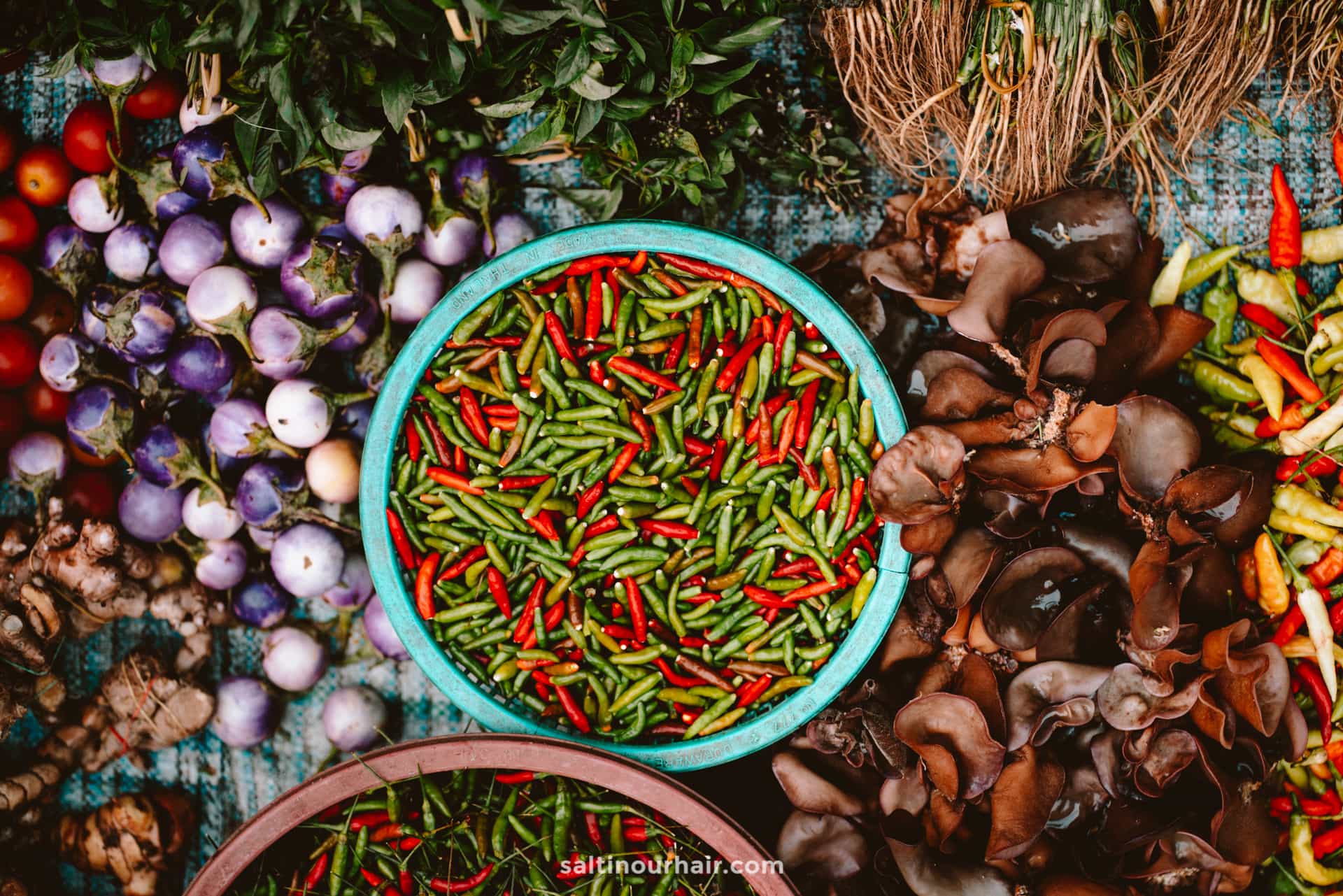
October is a beautiful month to travel to Laos. This is just after the rainy season ends, when the rice fields will still be lush and green, the waterfalls will be running and the lagoons will be starting to look bluer.
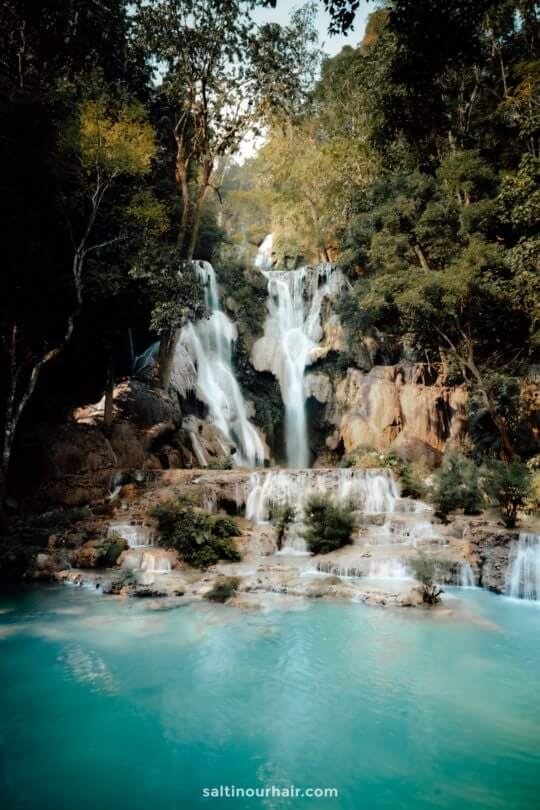
Seasons in Laos
Laos has very different seasons, which can be difficult to navigate. You should choose which time of year you visit based on what you want to see. For instance:
Dry Season : if you are hoping for cooler temperatures, it’s a good idea to visit between October to March. However, at this time, it is likely the waterfalls may be dry and rice won’t be growing. Keep in mind that in March/April farmers begin burning season, which may create smoke that can cause problems for allergy sufferers.
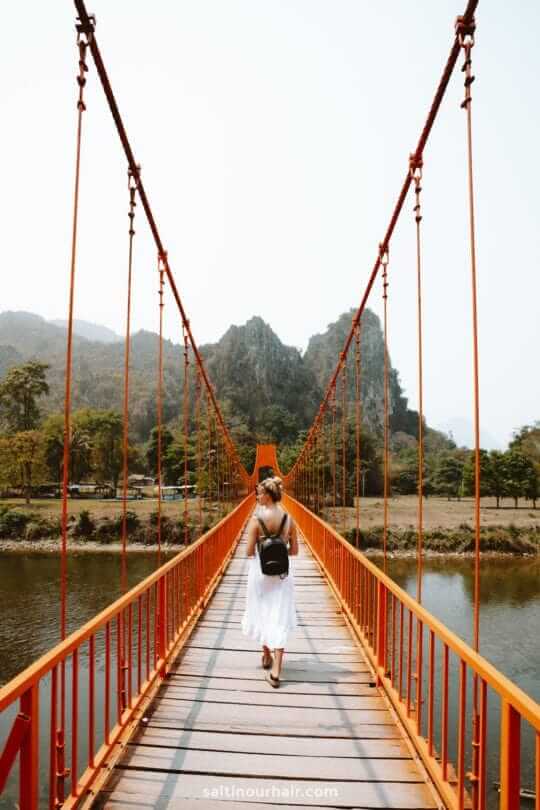
Rainy season : is from March-October and Laos sees it’s hottest temperatures in the first few months of the season. It can also be difficult to travel due to the rain and sometimes dangerous. The rice paddies will be green and luscious though, and it is the best time to see the waterfalls.
Tip: A good month to visit is October because it’s at the start of the dry season. The countryside will still be green and lush from the rainy season which has just ended.
Do I Need a Visa to Travel to Laos?
To travel to Laos, you will need to apply for an e-visa. The e-visa permits travelers to stay in Laos for 30 days and normally costs between 45 USD to 60 USD, depending on your country of residence. It is valid for single entry only to 5 different entry points in Laos and is valid for 60 days after receiving the approval letter.
Easily order your visa online here
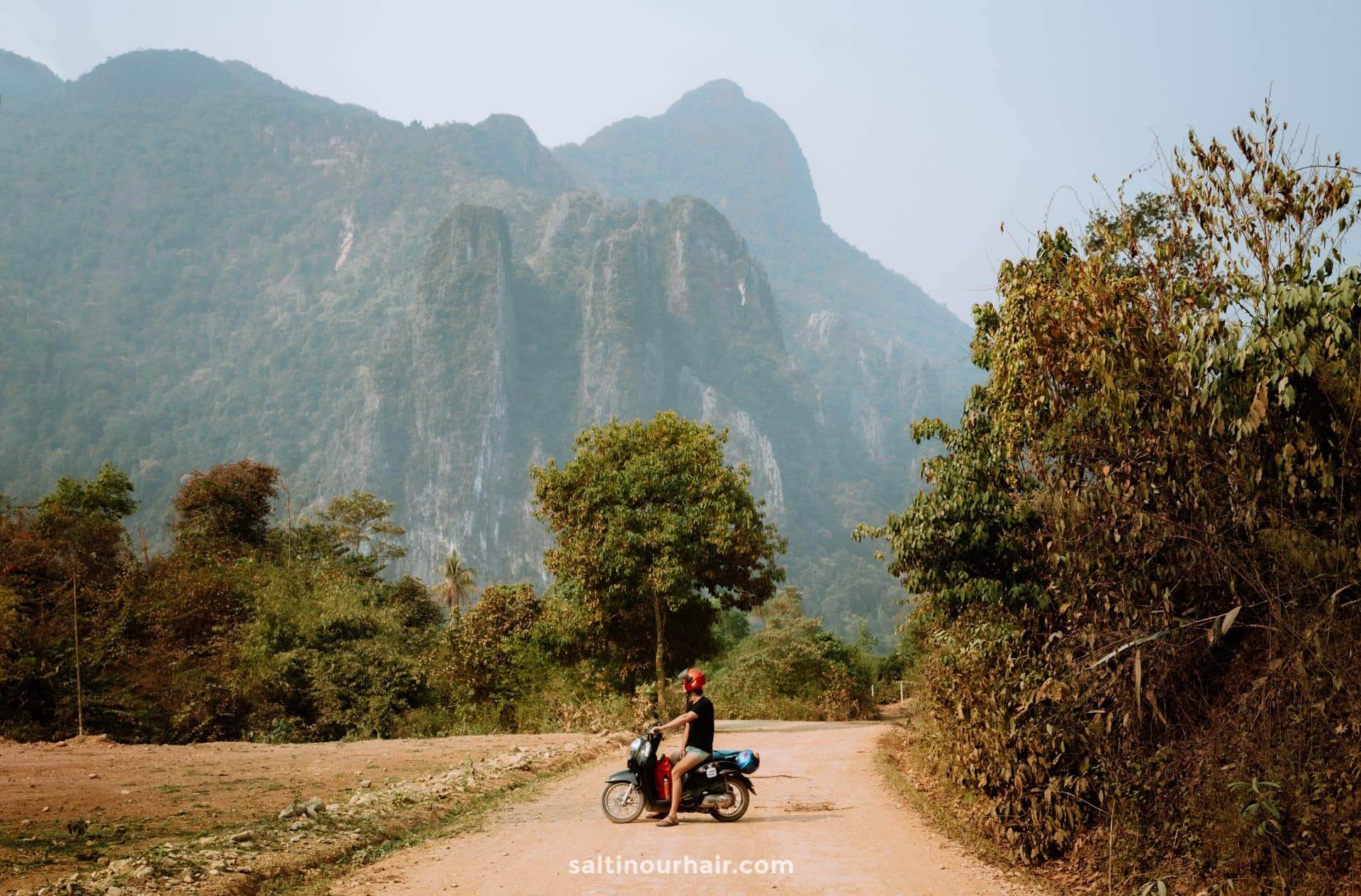
Safety in Laos
Laos is very safe to travel in, and people are exceptionally friendly. Crime is very low, although some minor theft does occur. For this reason, it is good to carry your valuables with you, especially when you’re traveling on buses, as there have been cases of tourists having things taken from their bags.
Travel Insurance Don't forget a travel insurance for your Laos trip! Heymondo covers medical emergencies, theft, delays, cancellations, lost luggage, and more, with 24/7 worldwide assistance and medical chat. As a Salt in our Hair reader, we've got you 5% off! Check Heymondo here
Due to Laos’ history, there are still unexploded bombs in the countryside. Because of this, it is absolutely essential to always stay on the path when hiking. If you are trekking, it is essential to go with a guide.
Here’s how to: find the right travel insurance
By purchasing through our links, you support us at no additional cost. Thank you for your support. ♥️
- Find Hotels via Booking.com
- Find a Rental Car via Sunny Cars
- Find Flights to Laos via Skyscanner
- Get a Travel Insurance via Heymondo
- Book Tours & Attractions via GetYourGuide
- Book a Bus/Train/Transfer via 12Go
9 Best Things To Do in Vang Vieng, Laos
11 best things to do in luang prabang.
Looking for more travel information? Plan a chat with us for personalised travel advice or get an answer from the Salt in our Hair Travel Community on Facebook.
Thank you so much for your detailed itinerary. I will probably follow it for my first visit to Laos. The inclusion of train details was really helpful as were the things to do in each place. Once again many thanks
Your email address will not be published. Required fields are marked *
Notify me when new comments are added.
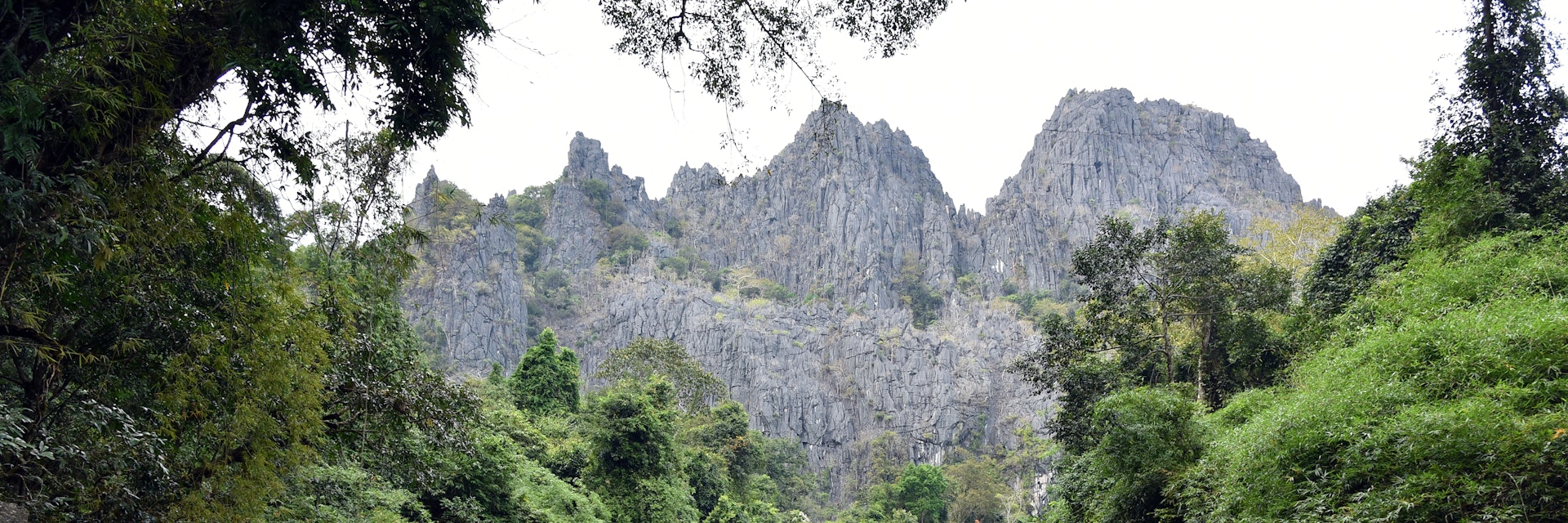
©Vincent Jary/Getty Images
Vivid nature, voluptuous landscapes and a vibrant culture collide with a painful past and optimistic future to make Laos an enigmatic experience for the adventurous.
Attractions
Must-see attractions.
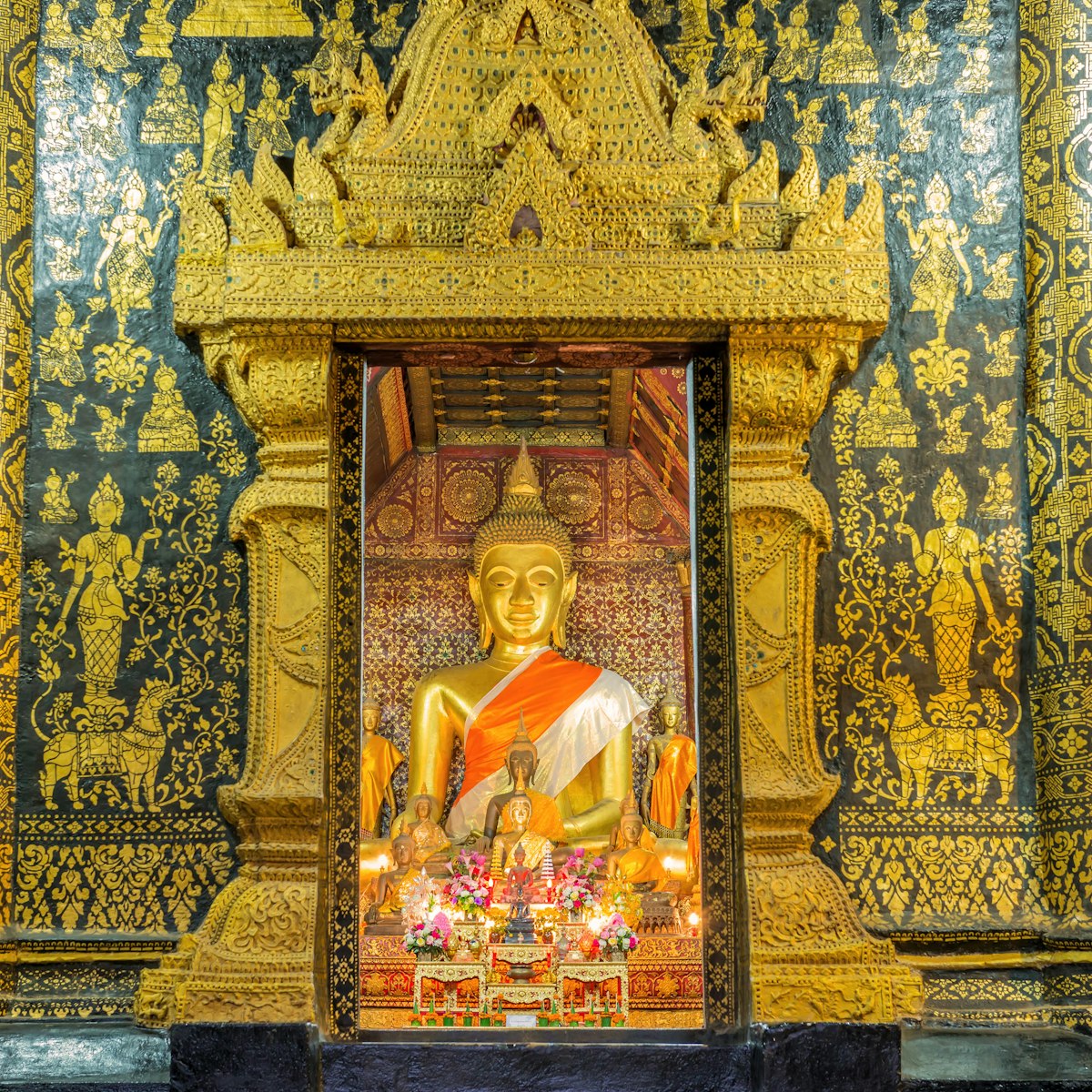
Wat Xieng Thong
Luang Prabang
Luang Prabang's best-known monastery is centred on a 1560 sǐm (ordination hall). Its roofs sweep low to the ground and there's a stunning 'tree of life'…

Vieng Xai Caves
Northern Laos
Joining a truly fascinating 18-point tour is the only way to see Vieng Xai's seven most important war-shelter cave complexes, set in beautiful gardens…
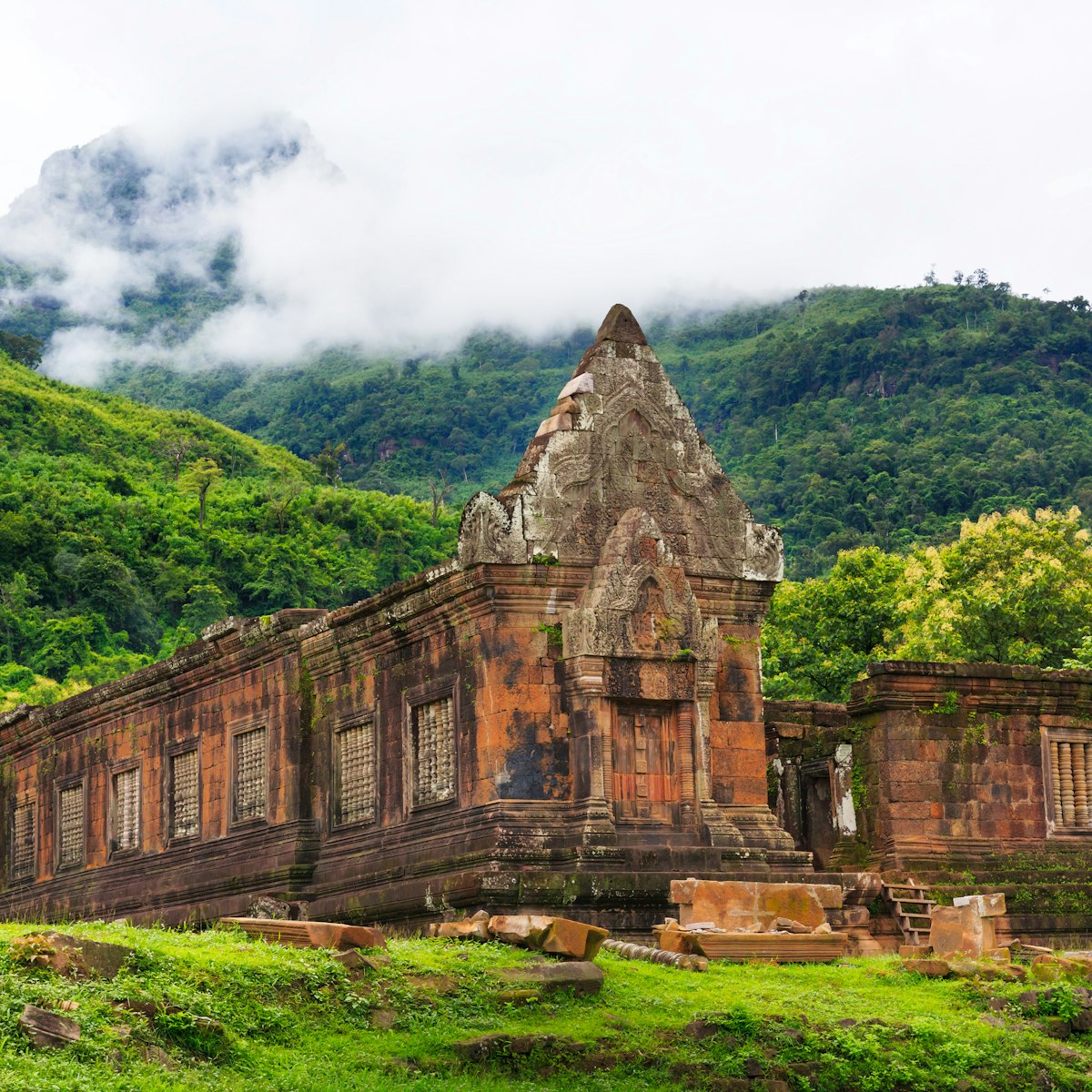
Wat Phu Champasak
Southern Laos
Bucolic Wat Phu sits in graceful decrepitude, and while it lacks the arresting enormity of Angkor in Cambodia, given its few visitors and more dramatic…
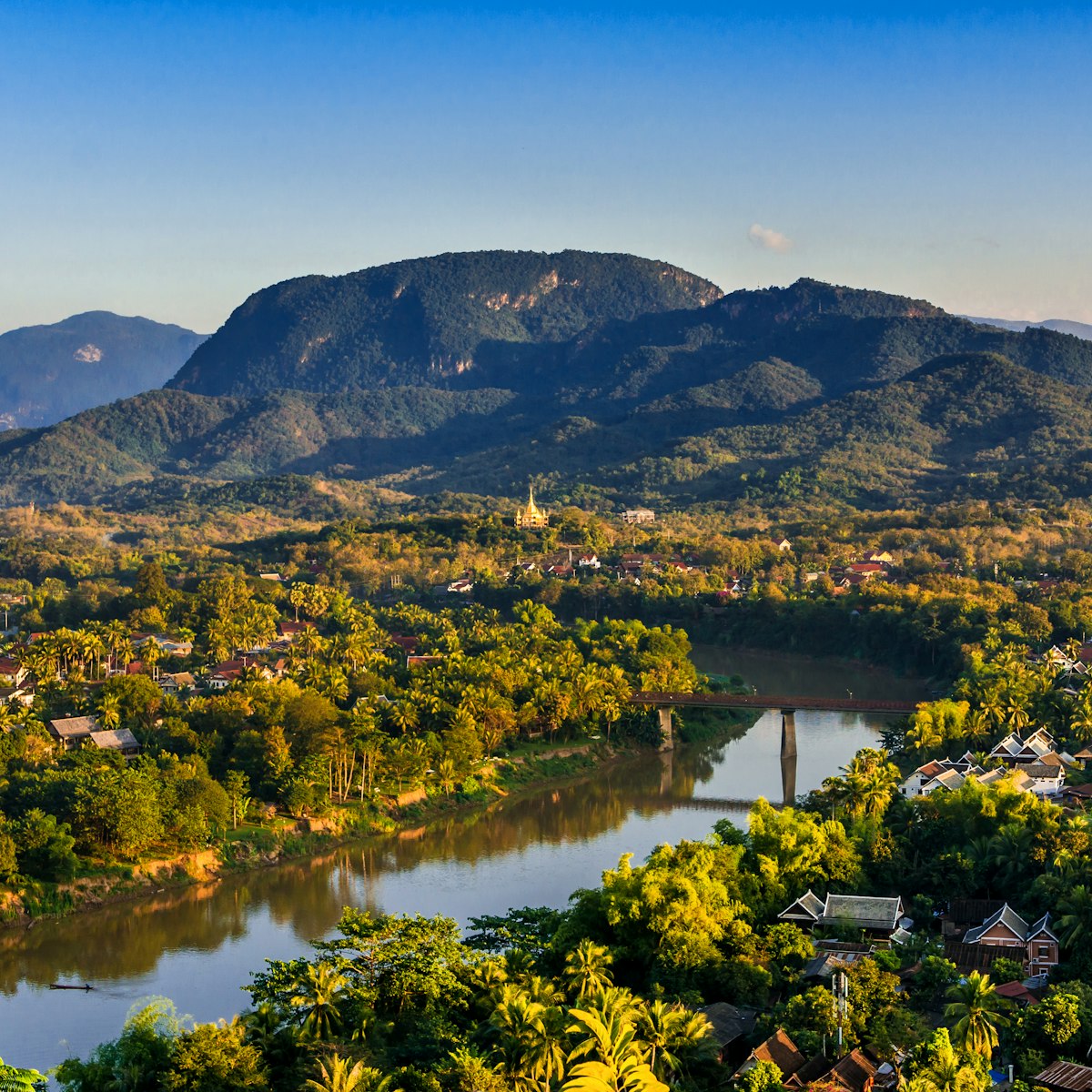
Dominating the old city centre and a favourite with sunset junkies, the 100m-tall Phu Si (prepare your legs for a steep 329-step ascent) is crowned by a…
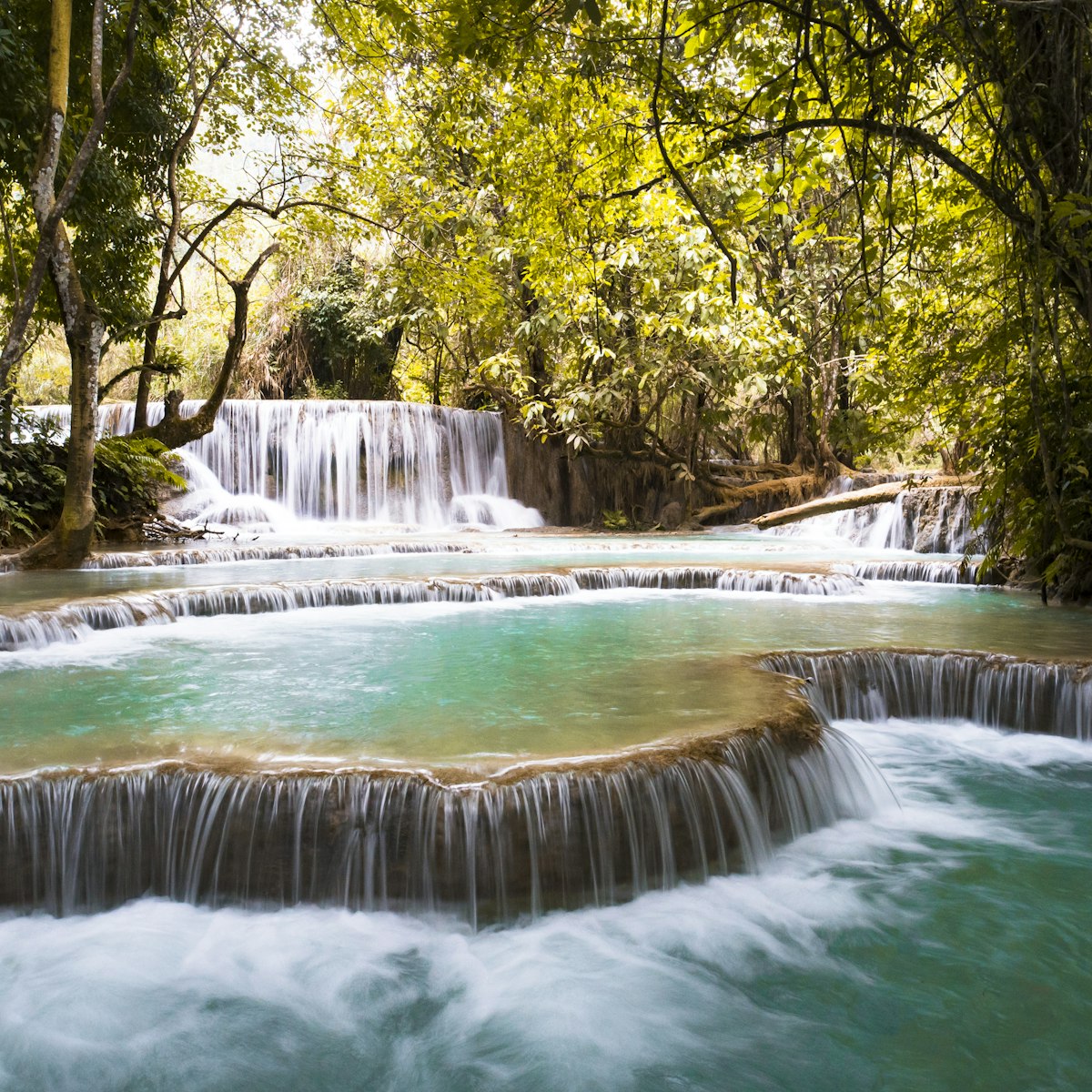
Tat Kuang Si
Thirty kilometres southwest of Luang Prabang, Tat Kuang Si is a many-tiered waterfall tumbling over limestone formations into a series of cool, swimmable…
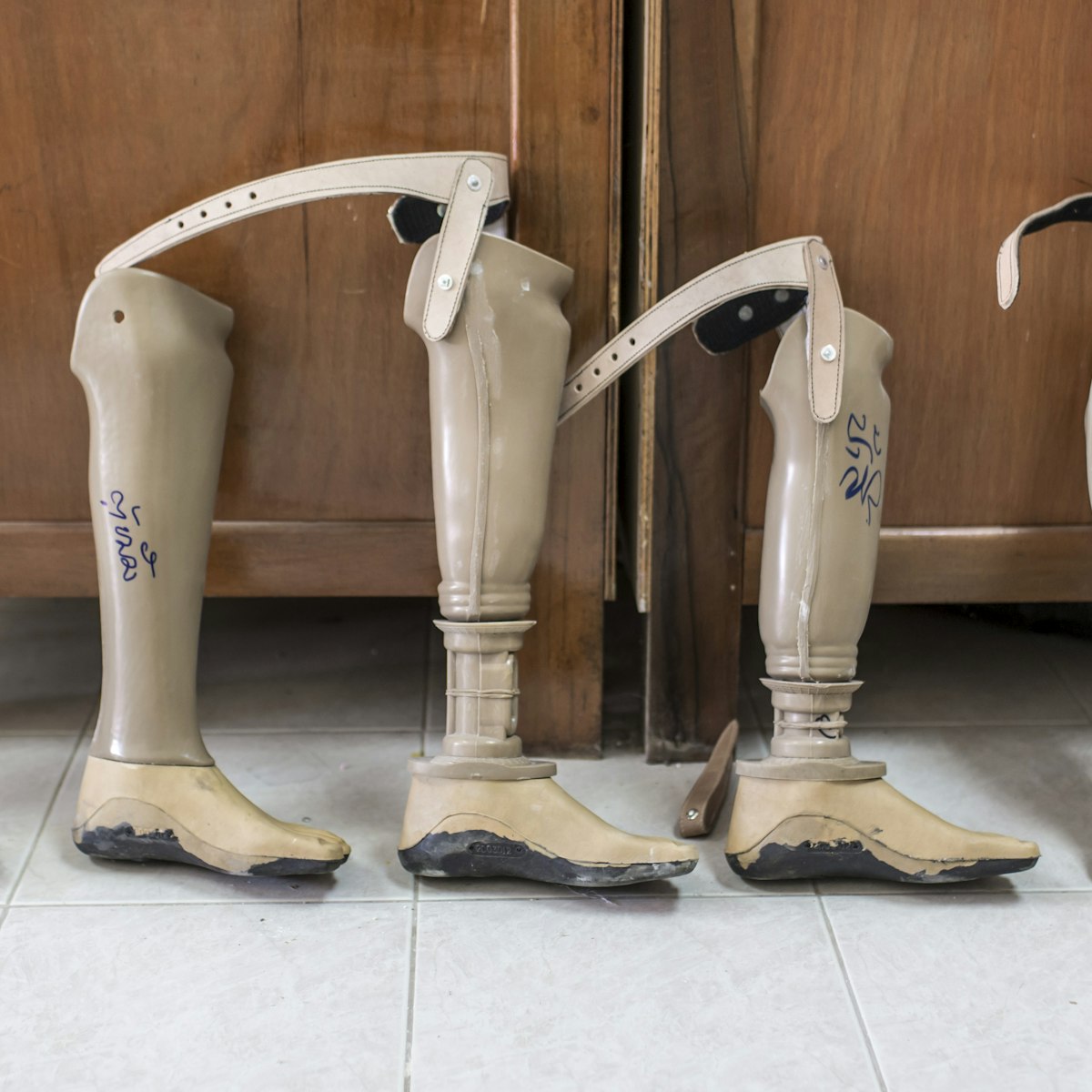
COPE Visitor Centre
Laos has the dubious distinction of being the most bombed country on earth, and although the American War in neighbouring Vietnam ended more than 40 years…
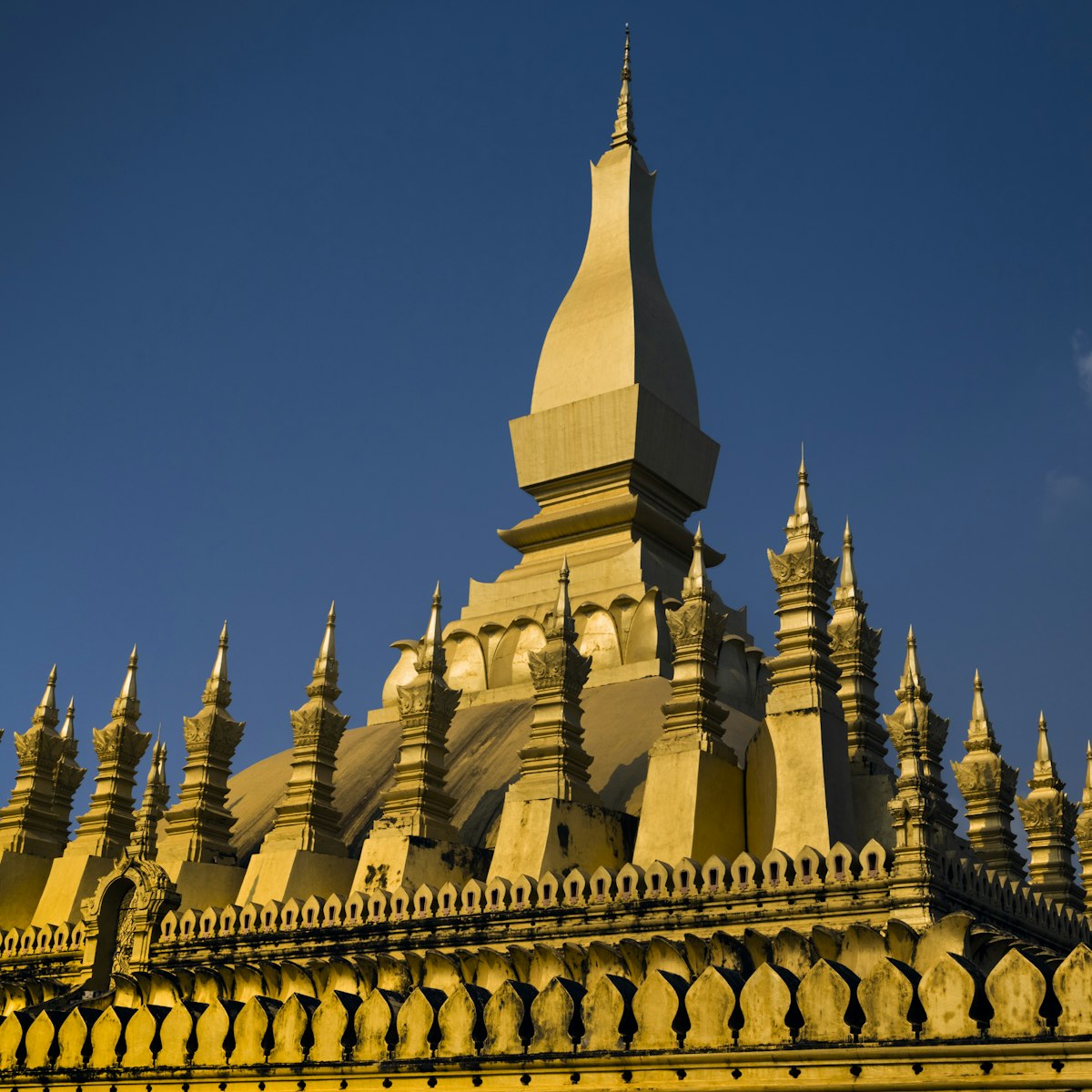
Pha That Luang
Svelte and golden Pha That Luang, located about 4km northeast of the city centre, is the most important national monument in Laos – a symbol of Buddhist…

Khon Phapheng Falls
Si Phan Don
More a glorified set of rapids than a waterfall, but oh, how glorious it is. The largest and by far the most awesome waterfall anywhere along the Mekong,…
Latest stories from Laos
Filter by interest:
- All Interests
- Adventure Travel
- Art & Culture
- Beaches, Coasts & Islands
- Food & Drink
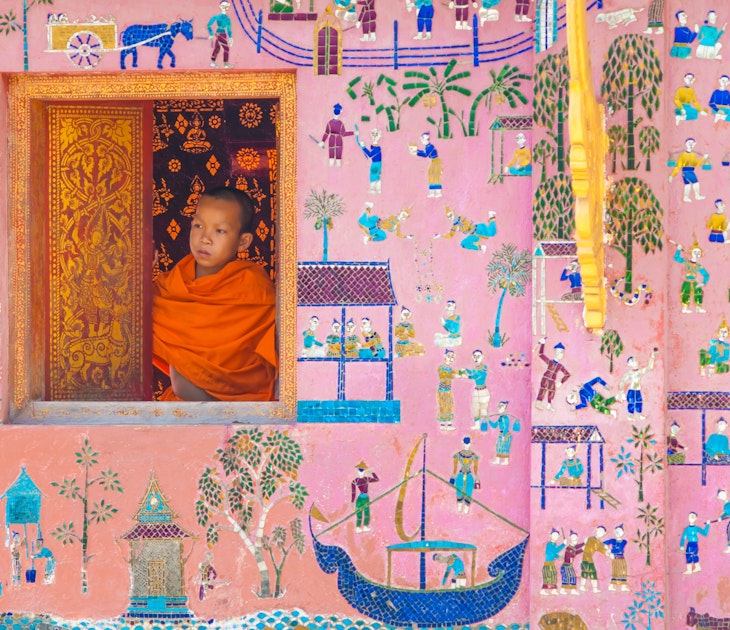
May 12, 2022 • 2 min read
It's one of Southeast Asia's most isolated countries but after more than two years of border closures, Laos has opened up to all international tourists…
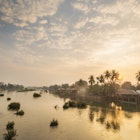
Aug 25, 2017 • 11 min read
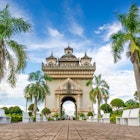
Sep 2, 2016 • 4 min read
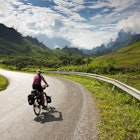
Jan 29, 2016 • 4 min read
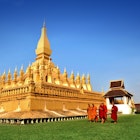
Jan 14, 2016 • 5 min read
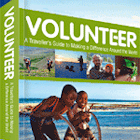
Apr 25, 2013 • 5 min read
in partnership with getyourguide
Book popular activities in Laos
Purchase our award-winning guidebooks.
Get to the heart of Laos with one of our in-depth, award-winning guidebooks, covering maps, itineraries, and expert guidance.
Laos and beyond
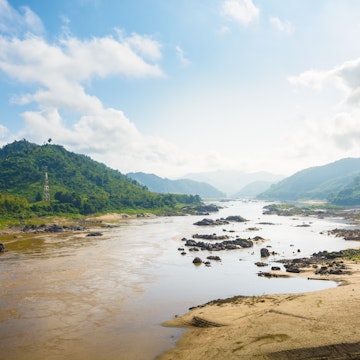
Nomadic Matt's Travel Site
Travel Better, Cheaper, Longer
Laos Travel Guide
Last Updated: April 29, 2024
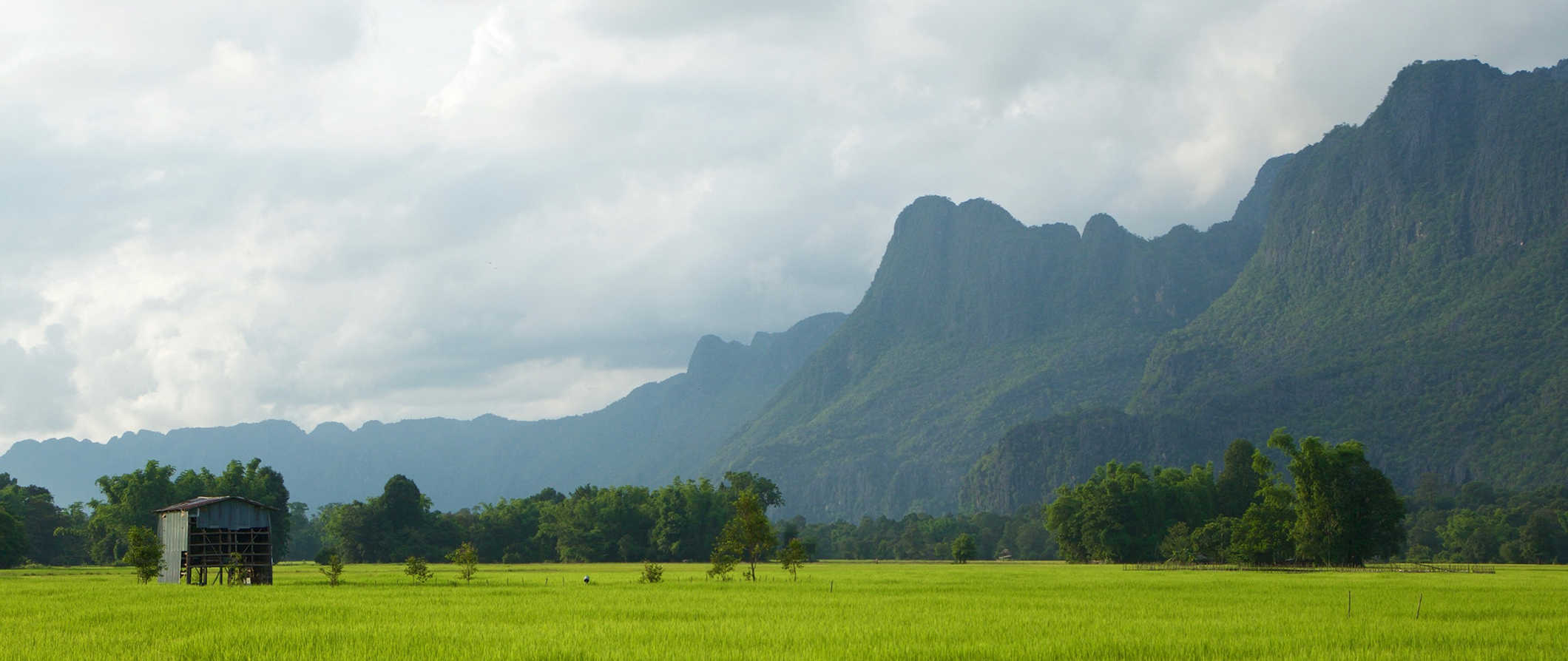
Laos is a landlocked country steeped in nature, food, history, and Buddhism. The country is wrapped in a mountainous landscape, making it one of the most beautiful places in all of Southeast Asia .
While it lacks the beautiful beaches of neighboring countries, adventure travel is big here. You can go zip-lining, kayaking, hiking, and cave tubing all in one day.
I loved my time there and, while the country is no longer a “secret,” it’s still a lot less visited than its neighbors.
From the bustling night markets and stunning waterfalls of Luang Prabang to the epic mountain sunsets in Vang Vieng , I’m always amazed that more people don’t make the journey to this beautiful country.
This travel guide to Laos can help you plan your trip, save money, and make the most of your time in this stunning country.
Table of Contents
- Things to See and Do
- Typical Costs
- Suggested Budget
- Money-Saving Tips
- Where to Stay
- How to Get Around
- How to Stay Safe
- Best Places to Book Your Trip
- Related Blogs on Laos
Click Here for City Guides
Top 5 things to see and do in laos.
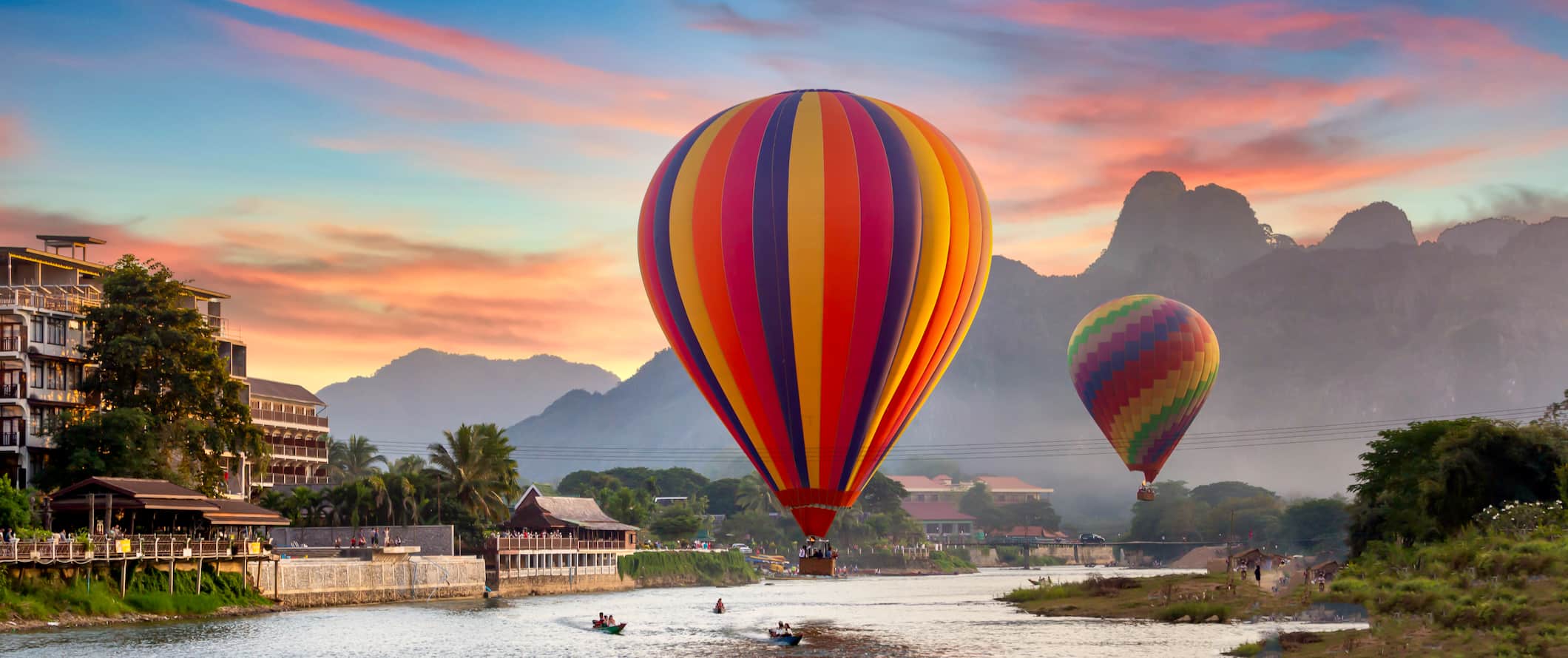
1. Visit Vang Vieng
Backpackers “discovered” this little town in the late 1990s. It didn’t take long to develop into a crazy, hedonistic city. There’s still a party scene but now it’s focused on a handful of bars. It’s definitely not like the old days but I think that’s a good thing. Nowadays, things have calmed down and the center of Vang Vieng is thriving, with boutique hotels and high-end restaurants replacing some of the party-laden backpacker bars that used to pack the waterfront. The town has also become a hub for outdoor adventure, jungle hikes, and lazy days on the river. It’s worth spending a few days here.
2. Explore the 4,000 Islands
Located in Southern Laos, the 4,000 Islands (also known as ‘Si Phan Don’ in Lao) is an area of tiny, largely uninhabited islands in the Mekong River in Champasak Province near the Cambodian border. They are popular with backpackers and the vibe is laid-back and chill. Accommodation is only available on three of the islands: Don Khong, Don Kon, and Don Det. What’s available is cheap and you can spend a few days here reading in hammocks and slowly exploring by bike. Other than that, there’s really not much to do here besides chill in the river and relax at night. To reach the islands you need to take a boat from Pakse.
3. Relax in Luang Prabang
Luang Prabang is a slow-paced city. There is not much to do here other than enjoy epic sunsets over the Mekong River, wander the streets filled with colonial French architecture, spend time at the incredible Kuang Si Waterfalls, and shop at the bustling night market. You can also take a river tour, or explore some of the dozens of temples in town. Every morning at sunrise, the monks walk through the main streets receiving alms from the local residents. I went for two days but actually stayed for a week because I enjoyed it so much!
4. Trek to the Kuang Si Falls
This gorgeous waterfall near Luang Prabang is breathtaking. Turquoise waters flow over rock ledges into dramatic tiered limestone pools perfect for swimming. You can float about in some of these natural infinity pools or jump from trees into others. It’s a really cool place to visit. Admission is 20,000 LAK, and a shared tuk-tuk from Luang Prabang costs 30,000-40,000 LAK per person.
5. See the Plain of Jars
The UNESCO-recognized Plain of Jars has thousands of stone jars scattered around three different sites. Believed to be part of the burial practices from the Iron Age, this is one of the biggest and most important prehistoric sites in Southeast Asia. Legend has it that the jars were made by a race of giants to store alcohol. Take care not to stray too far from the cleared areas as there are still some landmines in the area. There are eight sites open for visiting: sites 1, 2, and 3 are all close to each other at Phonsavan so they are easy to visit together. Admission to Site 1 (with the best-preserved jars) is 15,000 LAK while entry to Sites 2 and 3 is 10,000 LAK.
Other Things to See and Do in Laos
1. explore the vieng xai cave city.
Located close to Sam Nua (near the Vietnamese border), Vieng Xai Cave City served as living quarters for Laotian soldiers during the 1960s. You can see the living quarters as they were; the Kaysone Phomvihane Cave even has a working air-circulation pump. Guided tours are found at the Vieng Xai Caves Visitor Centre. Admission is 60,000 LAK and includes an audio tour. The bus there is 20,000 LAK while a tuk-tuk is 150,000 LAK.
2. Try the Gibbon Experience
This is one of the best activities in Laos. It’s a series of zip lines connecting the world’s highest treehouses in Bokeo Forest, where you can stay for one or two nights. You’re completely off the grid there, surrounded by gibbons, and it has some intense nature hikes. The three-day, two-night “Classic” package costs around 5,600,000 LAK per person.
3. See the Great Stupa (Pha That Luang)
The Great Stupa in Vientiane is a 45-meter (148-foot) gold-covered stupa (a dome-shaped Buddhist shrine). It’s considered the greatest monument in the country. Its exterior looks like a fortress with high walls, but the inside has numerous Buddhist, floral, and animal imagery throughout. You can admire the stupa from outside for free.
4. Head to Vientiane
The capital and largest city in Laos is full of important national monuments and temples, like the Great Stupa and the Sisaket Temple. While there, be sure to check out Buddha Park, a sculpture garden full of giant Buddha statues. It’s the most cosmopolitan city in the country, and there’s an up-and-coming foodie scene there as well. It’s worth spending a few days here exploring.
5. Visit the Elephant Conservation Center
Located in Sainyabuli, the ECC was launched in 2011 by a team of elephant specialists working towards protecting the elephant population in Laos. It’s the best way to see elephants in a responsible way that doesn’t harm them or involve exploitation. You can stay for one, two, or three nights and prices start at 3,800,000 LAK. A 7-day volunteering session costs around 8,500,000 LAK.
6. Take the slow boat on the Mekong
Drift down the Mekong River on a long, narrow boat with comfortable seating, home-cooked meals, and a unique view of the countryside. You can find a ride typically from the border at Huay-Xai that drops you off in Luang Prabang. Slow boats take two to three days. Prices vary depending on the quality of your tour company. There’s also a public boat that leaves daily at 11am.
7. Trek through Phou Hin Poun Conservation Area
Mountains, a limestone forest, rivers full of rapids, and caves await you in the protected Phou Hin Poun area of Laos. The entire area is filled with unique species of flora and fauna, including macaques, tigers, and gibbons. (Yes, tigers.) It’s a stunning area for guided treks, which usually last a couple of days. Your accommodation can help you book a guide on arrival.
8. Get outdoors in Nong Kiew (Muang Ngoi)
Life in this quaint village on the Nam Ou River is slow and peaceful, but Nong Kiew is a popular draw for outdoor lovers. The towering limestone cliffs are ideal for experienced climbers, and there are many hiking trails leading to nearby waterfalls and caves. To get there, take a bus from Luang Prabang to Pak Mong and then a tuk-tuk the rest of the way.
9. Chat with a monk
On the first Sunday of every month, monks gather at the Sangha College in Vientiane to chat with tourists. You’re able to ask them about their practice and daily life, and in return, they can practice their English. It’s a fun and eye-opening way to learn about the culture and the religion from someone whose daily life is much different than yours.
10. Visit the Buddha Caves
The Buddha Caves (Pak Ou Caves) hold over 6,000 Buddha statues that the locals still use for worship. There are standing Buddhas, sitting Buddhas, reclining Buddhas — you name it! To get there you take a scenic 25-kilometer (16-mile) boat trip up the Mekong River or you can take a songthaew (a truck converted into a shared taxi). From there, you’re able to explore the two main caves on foot. It’s about 20,000 LAK to enter the caves, and a shared boat costs 65,000 LAK round-trip (the boat takes two hours there and one hour to get back).
11. Take a Lao cooking class
Take a cooking class to learn how to make traditional dishes like laap (salad with minced meat and spices), orh (spicy stew), and mok pa (steamed fish in banana leaf). Most classes include a visit to the market and include several dishes, ending with everyone feasting on the food they have just cooked. Prices vary but expect to pay between 250,000-400,000 LAK for a class. If you’re in Vientiane, I recommend taking Madam Phasouk’s class. She’s an amazing cook and her private classes are 150,000 LAK, which includes making 3-4 dishes.
For more information on specific destinations in Laos, check out these guides:
- Luang Prabang Travel Guide
- Vang Vieng Travel Guide
- Vientiane Travel Guide
Laos Travel Costs
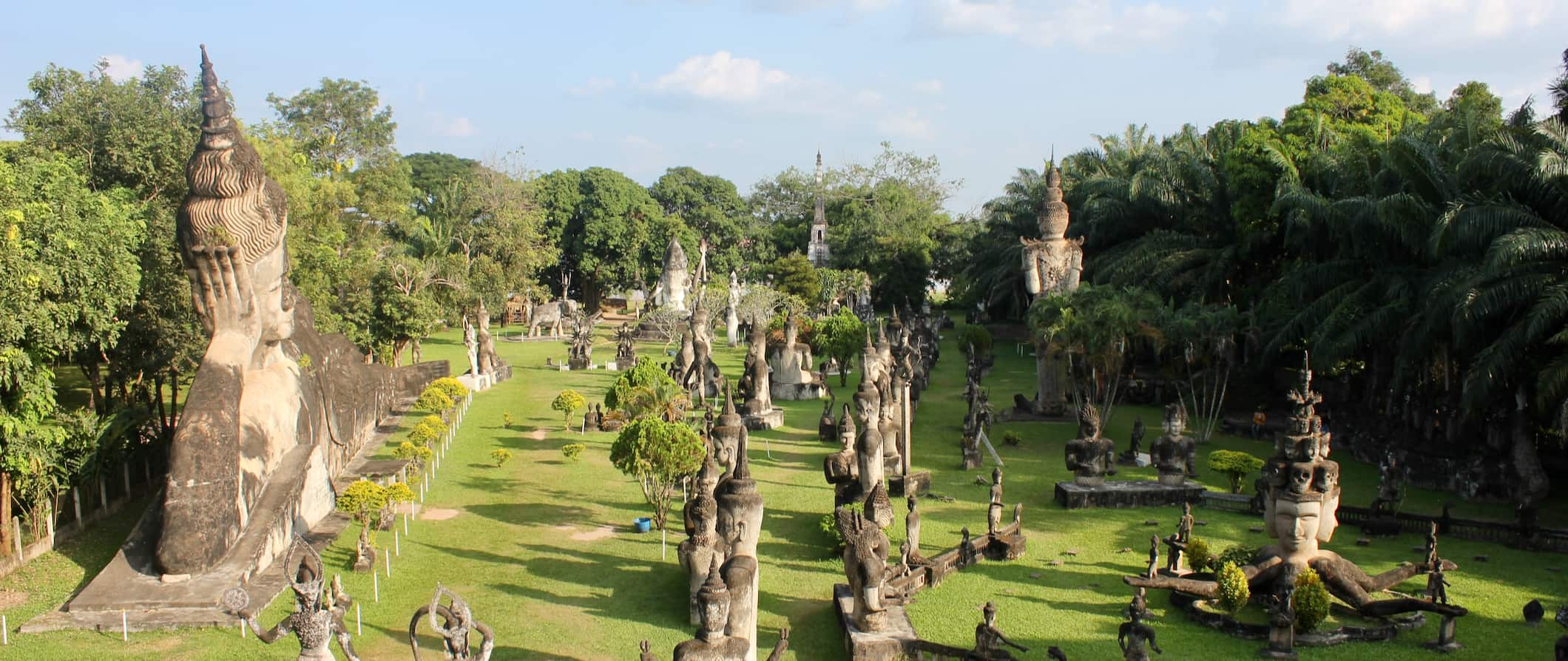
Accommodation – Accommodation in Laos is cheap. Hostel dorm rooms start at around 65,000 LAK per night, although they average closer to 80,000 LAK. Hostels in Vientiane start at slightly higher prices. Private rooms with air-con start at 190,000 LAK but average around 350,000 LAK. Almost every hostel offers free Wi-Fi and most also include free breakfast. It’s very rare for a hostel to have a kitchen, so don’t count on cooking your meals.
Budget hotels and guesthouses are widely available, usually starting around 150,000 LAK for a twin or double room. If you’re looking to splurge on a four-star hotel with a pool, expect to pay at least 400,000 LAK per night.
Airbnb is also available in Laos, with private rooms starting from around 200,000 LAK. An entire home or apartment goes for as little as 500,000 LAK, although prices are generally closer to 1,000,000 LAK. Book early to find the best deals.
Food – Food in Laos has many similarities to its neighbors, with rice and noodle dishes forming the backbone of most meals. Prominent staples include green papaya salad and laap (also known as larb ) (a minced-meat salad that is the national dish, usually featuring fermented fish). Grilled meats, such as chicken, pork, and duck are also very popular, as is feu , the local version of pho.
Most street food and cheap meals of local cuisine cost less than 22,000 LAK, especially in the night market where you can find things like barbecued meats, spicy papaya salad, and noodle soup.
If you want to splash out on a fancy meal, expect to pay around 150,000 LAK for a three-course meal with a drink.
Beer is very cheap here, costing around 14,000 LAK. If you want a latte or cappuccino, expect to pay around 30,000 LAK. Bottled water is around 5,000 LAK.
If you have access to a kitchen, a week’s worth of groceries costs around 250,000-300,000 LAK for basic staples like rice, pasta, produce, and some meat.
Backpacking Laos Suggested Budgets
On a backpacker budget, expect to spend around 300,000 LAK per day. This budget covers staying in a hostel dorm, eating street food, drinking a couple beers, renting a bicycle to get around, and enjoying mostly cheap activities like hiking and swimming. Add another 15,000-30,000 LAK to your daily budget if you plan on drinking more.
On a mid-range budget of 650,000 LAK per day, you can stay in a private hostel dorm or Airbnb, drink more, enjoy lots of street food, take some taxis or tuk-tuks, and do more activities like go rock climbing or ATV riding.
On a “luxury” budget of around 1,800,000 LAK per day, you can stay in a hotel, eat all your meals out anywhere you want, enjoy lots of drinks, hire tuk-tuks or rent a motorbike/scooter, and do whatever activities you want. This is just the ground floor for luxury though. The sky is the limit!
You can use the chart below to get some idea of how much you need to budget daily, depending on your travel style. Keep in mind these are daily averages — some days you’ll spend more, some days you’ll spend less (you might spend less every day). We just want to give you a general idea of how to make your budget. Prices are in LAK.
Laos Travel Guide: Money-Saving Tips
Laos is very affordable so it’s hard to save tons of money if you are already traveling on a budget. Sticking to hostels or inexpensive guest houses, public transportation, and street food will ensure you don’t break the bank. It’s hard to spend a lot when you just do normal travel. That said, here are some ways to save money in Laos:
- Buy from market stalls – Buying your own food is infinitely cheaper than going to restaurants (not that they are even that expensive, however). If you’re on a budget, though, stick to the local markets. Fresh food is the cheapest there.
- Use public transportation – Taxis and tuk-tuks may be convenient, but they slowly ruin your budget. Stick to public transportation if you need to get around. If you do need to take a tuk-tuk or taxi, ask your hotel/hostel staff what you should expect to pay to make sure you don’t get ripped off!
- Avoid western food – Western food is always more expensive than local cuisine. While the prices aren’t that high, it slowly adds up throughout your trip.
- Bring a reusable water bottle – The tap water here isn’t safe to drink. To save money and reduce your plastic use, bring a reusable water bottle with a filter. LifeStraw makes a reusable bottle with a built-in filter so you can be sure your water is always safe and clean.
Where to Stay in Laos
Laos has plenty of budget-friendly hostels around the country. Here are my suggested places to stay:
- Indigo House Hotel (Luang Prabang)
- Nana Backpackers Hostel (Vang Vieng)
- Vang Vieng Freedom Hostel (Vang Vieng)
- Dream Home Hostel (Vientiane)
- Vongkham Eco Village (Vientiane)
- Sanga Hostel (Pakse)
How to Get Around Laos
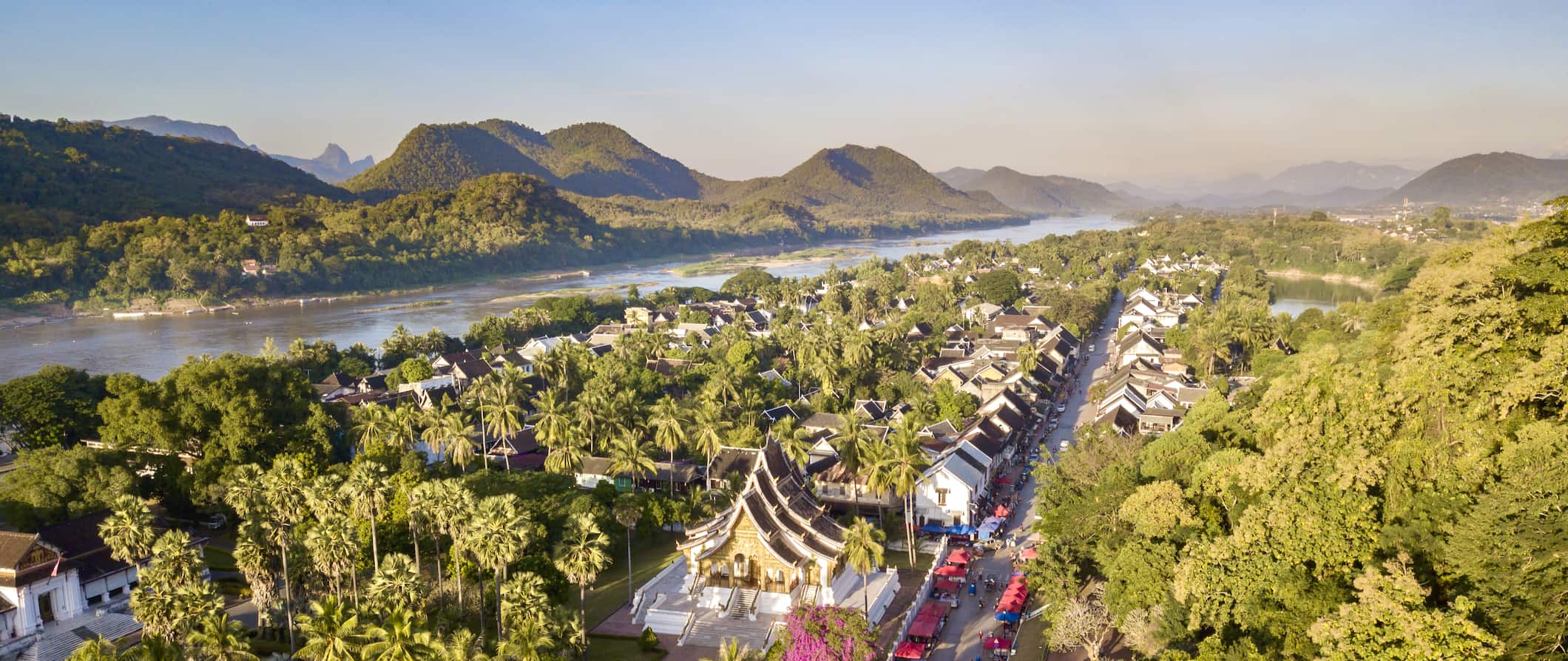
Getting around Laos can be a challenge. The roads are poor, and you have to navigate several mountain passes to get almost anywhere. Nothing is ever on time, and even short trips can turn into endless journeys.
Public transportation – Public transportation is available in some of the larger cities, with prices starting around 5,000 LAK and going up from there based on distance.
Bus – Buses are the most common way to get between cities in Laos. Ticket prices vary between 80,000-130,000 LAK for a 4-6-hour ride. Buses are pretty uncomfortable and many don’t have air conditioning, but they get you from point A to point B around the country without breaking the bank.
In busier towns, you can purchase your ticket from just about any tour operator. This includes transit from your hotel/hostel to the station. Otherwise, you can show up at the city’s bus station. A trip from Vientiane to Luang Prabang or Pakse shouldn’t cost more than 100,000 LAK.
There are also plenty of air-conditioned “VIP” buses. A “VIP” trip from Vientiane to Luang Prabang costs 410,000 LAK. Overnight buses cost 170,000-400,000 LAK depending on the distance. You can usually buy tickets for these buses from your hostel/hotel. You can use 12go.asia to compare prices.
If you’re looking to head into a neighboring country, a bus from Vientiane to Hanoi costs around 500,000 LAK. There is also a direct route between Luang Prabang and Chiang Mai starting from 425,000 LAK, but keep in mind the ride is at least 15 hours. A bus from Vientiane to Bangkok also takes about 15 hours and costs about 425,000 LAK.
To find bus routes and prices, use BusBud .
Boat – One of the most popular ways to see Laos is via a slow boat between Huay Xai and Luang Prabang on the Mekong River. The journey takes two days. For short trips (like Luang Prabang to the Pak Ou Caves), you can get a river taxi for about 65,000 LAK.
Flying – I don’t recommend flying unless you are super pressed for time. Domestic flights are costly, and there are frequent cancellations. Even booking far in advance, a flight from Vientiane to Luang Prabang costs upwards of 500,000 LAK for a 50-minute flight. But if you must, these are Laos’ airlines:
- Laos Airlines
Car rental – Car rentals in Laos aren’t super affordable, costing around 750,000 LAK per day for a multi-day trip. Renters need to be at least 23 and have an International Driving Permit (IDP).
For the best car rental prices, use Discover Cars .
When to Go to Laos
October to April is the best time to visit Laos. This is when the country’s weather is consistently warm and dry. (Keep in mind the mountainous areas experience much cooler temperatures year-round compared to the other parts of Laos.) It’s also the high season, so you can expect bigger crowds and inflated prices. That said, the crowds here are much smaller than in neighboring Thailand and Vietnam.
Elsewhere, April and May tend to be the hottest months, with temperatures as high as 40°C (104°F). The humidity can be extremely uncomfortable during this time too.
The rainy season lasts from late May to October. It’s still a pleasant time to visit as rainfall each day never lasts long. During this time, the waterfalls flow heavier and wildlife becomes more active. There are also fewer tourists around during this time as well.
How to Stay Safe in Laos
Laos is a very safe country to backpack and travel around as violent crime against travelers is rare. Pickpocketing is your biggest concern. It often occurs in busy market areas (especially in Vang Vieng) and on transportation. Keep your valuables close and out of reach at all times just to be safe.
If you’re worried about getting ripped off, you can read about common travel scams to avoid here.
If you’re hiking or sightseeing, always stay on the marked trail. Some places are strictly prohibited because of unexploded landmines. This is especially true around the Plain of Jars. You shouldn’t have a reason to wander off into a dangerous area but pay attention to signs and markers.
When people get into trouble here, it’s mostly because they’re tangled up with drugs or the sex industry. Laos is strict about punishment when it comes to these offenses, so avoid them at all costs!
Solo female travelers should generally feel safe here, however, the standard precautions apply (never leave your drink unattended at the bar, never walk home alone intoxicated, etc.).
If you experience an emergency, dial 191 to contact the police.
When in doubt, always trust your instincts. If a taxi driver seems shady, get out. If your hotel or accommodation is seedier than you thought, go somewhere else. Make copies of your personal documents, including your passport and ID, in case of an emergency.
The most important piece of safety advice I can offer is to purchase good travel insurance. Travel insurance protects you against illness, injury, theft, and cancellations. It’s comprehensive protection in case anything goes wrong. I never go on a trip without it as I’ve had to use it many times in the past. You can use the widget below to find the policy right for you:
Laos Travel Guide: The Best Booking Resources
These are my favorite companies to use when I travel. They consistently have the best deals, offer world-class customer service and great value, and overall, are better than their competitors. They are the companies I use the most and are always the starting point in my search for travel deals.
- Skyscanner – Skyscanner is my favorite flight search engine. They search small websites and budget airlines that larger search sites tend to miss. They are hands down the number one place to start.
- Hostelworld – This is the best hostel accommodation site out there with the largest inventory, best search interface, and widest availability.
- Agoda – Other than Hostelworld, Agoda is the best hotel accommodation site for Asia.
- Booking.com – The best all around booking site that constantly provides the cheapest and lowest rates. They have the widest selection of budget accommodation. In all my tests, they’ve always had the cheapest rates out of all the booking websites.
- Get Your Guide – Get Your Guide is a huge online marketplace for tours and excursions. They have tons of tour options available in cities all around the world, including everything from cooking classes, walking tours, street art lessons, and more!
- SafetyWing – Safety Wing offers convenient and affordable plans tailored to digital nomads and long-term travelers. They have cheap monthly plans, great customer service, and an easy-to-use claims process that makes it perfect for those on the road.
- LifeStraw – My go-to company for reusable water bottles with built-in filters so you can ensure your drinking water is always clean and safe.
- Unbound Merino – They make lightweight, durable, easy-to-clean travel clothing.
Laos Travel Guide: Related Articles
Want more info? Check out all the articles I’ve written on Laos travel and continue planning your trip:

Is Southeast Asia Safe for Travelers?
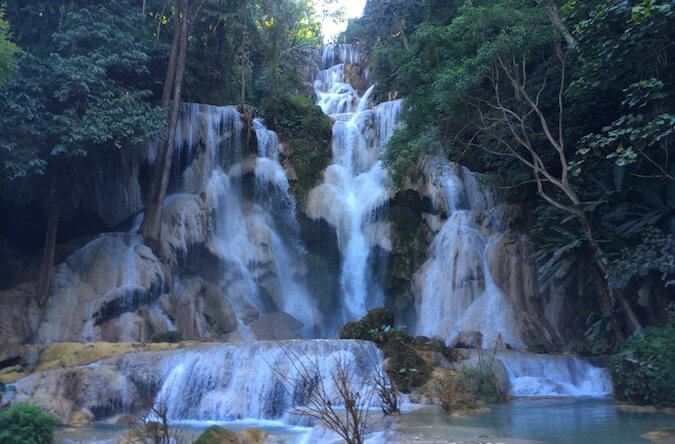
The Secret Pool of Kuang Si Waterfall
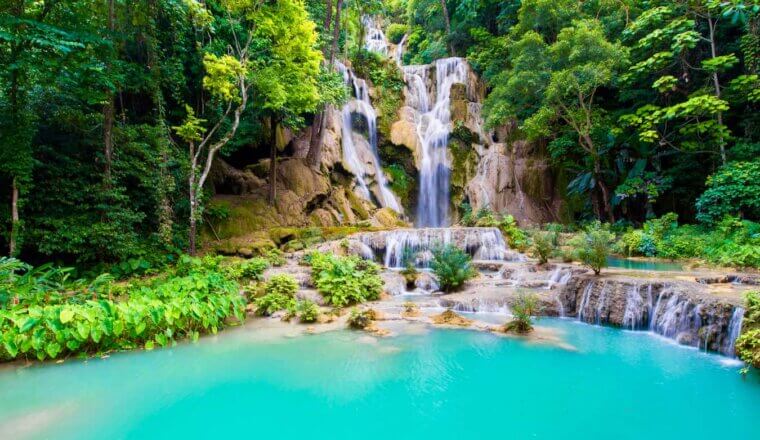
The Cost of Traveling Laos
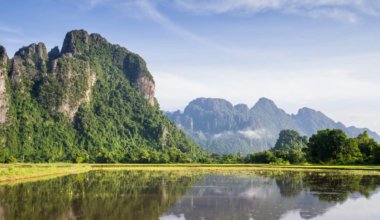
Vang Vieng: A Hedonistic Backpacker Town Reborn
Get my best stuff sent straight to you, pin it on pinterest.
- Where To Stay
- Transportation
- Booking Resources
- Related Blogs
Update April 12, 2024
Information for u.s. citizens in the middle east.
- Travel Advisories |
- Contact Us |
- MyTravelGov |
Find U.S. Embassies & Consulates
Travel.state.gov, congressional liaison, special issuance agency, u.s. passports, international travel, intercountry adoption, international parental child abduction, records and authentications, popular links, travel advisories, mytravelgov, stay connected, legal resources, legal information, info for u.s. law enforcement, replace or certify documents.
Before You Go
Learn About Your Destination
While Abroad
Emergencies
Share this page:
Travel Advisory July 24, 2023
Laos - level 2: exercise increased caution.
Reissued with obsolete COVID-19 page links removed.
Exercise increased caution to Laos due to civil unrest . Some areas have increased risk. Read the entire Travel Advisory.
Reconsider travel to:
- Xaisomboun Province due to civil unrest.
Exercise increased caution in:
- Remote areas along the border with Burma due to crime.
- Areas of Savannakhet, Xieng Khouang, Saravane, Khammouane, Sekong, Champassak, Houaphan, Attapeu, Luang Prabang, and Vientiane provinces, as well as along Route 7 (from Route 13 to the Vietnam border), Route 9 (Savannakhet to the Vietnam border), and Route 20 (Pakse to Saravane) due to unexploded bombs.
Read the country information page for additional information on travel to Laos.
If you decide to travel to Laos:
- Do not touch unknown metal objects and avoid traveling off well-used roads, tracks, and paths due to risk of unexploded ordnance.
- Enroll in the Smart Traveler Enrollment Program ( STEP ) to receive Alerts and make it easier to locate you in an emergency.
- Follow the Department of State on Facebook and Twitter.
- Review the Country Security Report for Laos.
- Visit the CDC page for the latest Travel Health Information related to your travel.
- Prepare a contingency plan for emergency situations. Review the Traveler’s Checklist .
Xaisomboun Province – Level 3: Reconsider Travel
There is a continued threat of violence in Xaisomboun Province.
The U.S. government has limited ability to provide emergency services to U.S. citizens in Xiasomboun Province as U.S. government employees must obtain special authorization to travel there.
Visit our website for Travel to High-Risk Areas .
Areas on the Border with Burma – Level 2: Exercise Increased Caution
Bandits, drug traffickers, and other people pursuing illegal activities operate in these areas, as do armed groups opposed to the Burmese government.
Areas of Savannakhet, Xieng Khouang, Saravane, Khammouane, Sekong, Champassak, Houaphan, Attapeu, Luang Prabang, and Vientiane provinces, as well as along Route 7 – Level 2: Exercise Increased Caution
There are large numbers of unexploded bombs in these areas left over from the Indochina War.
Embassy Messages
View Alerts and Messages Archive
Quick Facts
Six months.
2 (endorsement pages are not considered blank).
The import of local currency is not permitted. 2,500 USD or equivalent in foreign currency must be declared.
The export of local currency is not permitted. 2,500 USD or equivalent in foreign currency must be declared.
Embassies and Consulates
U.s. embassy vientiane.
Thadeua Road, Km 9 Ban Somvang Thai Hatsayphong District Vientiane, Lao PDR Telephone: +(856) (21) 48-7000 Emergency After-Hours Telephone: +(856) (21) 48-7600 Fax: +(856) (21) 48-7040 Email: [email protected]
Destination Description
Learn about the U.S. relationship to countries around the world.
Entry, Exit and Visa Requirements
Your passport must have at least six months validity remaining from the date of entry and at least two blank visa pages.
Tourist visas are required. Tourist visas on arrival are available at certain ports of entry, and generally permit a stay of 30 days. You can extend the visa up to an additional 60 days through the Department of Immigration in Vientiane. At certain ports of entry, you can use an eVisa. See laoevisa.gov.la for more information.
To obtain a visa in advance, and for other information about Lao entry requirements, please contact the Embassy of the Lao People’s Democratic Republic , 2222 S St. NW, Washington DC 20008, tel: 202-332-6416, fax: 202-332-4923.
For a business visa: Business visas can only be arranged in advance. After you arrive, you can generally extend your business visa for one month. Please contact the Embassy of the Lao People’s Democratic Republic for specific information.
You must have a valid entry stamp and be within your authorized period of stay, or have an exit visa, to depart Laos. Otherwise, you will be fined and may be arrested.
If your U.S. passport is lost or stolen in Laos, you must obtain both a replacement passport and an exit visa. The U.S. Embassy can issue a limited validity replacement passport expeditiously; however, the Lao government requires 3 to 5 working days to issue an exit visa. Contact the Foreigner Control Office at the Department of Immigration in Nong Buek for an exit visa. The office is located on NongBuek-Dongnaxok Rd. Phone: +856 21 212 520. If your lost passport causes you to exceed your authorized period of stay in Laos, you may be subject to overstay fines unless you make prior arrangements with Immigration.
Laos does not allow its citizens to have dual nationality. Under Lao law, Lao citizens who have been outside of Laos for extended periods or who have taken a second nationality are no longer considered to be Lao citizens. Lao immigration officials may deny entry to or exit from Laos for individuals using multiple passports.
Traveling with children: Travelers with children are advised to have documentary evidence of your relationship to the child, such as the child’s birth certificate or permission for the child’s travel from the parent(s) or legal guardian, if they are not present. U.S. citizen children born out of wedlock to a Lao national and a U.S. citizen may experience difficulty departing Laos.
Travelers with HIV/AIDS: The U.S. Department of State is unaware of any HIV/AIDS entry restrictions for visitors to or foreign residents of Laos.
Find information on dual nationality , prevention of international child abduction , and customs regulations on our websites.
Safety and Security
The Embassy recommends U.S. citizens reconsider travel to all of Xaisomboun Province . U.S. Embassy personnel are restricted from traveling to Xaisomboun Province due to past incidents of violence.
There are large amounts of unexploded ordnance (UXO) in Laos left over from the Indochina War. UXO is found in some parts of Savannakhet, Xieng Khouang, Salavan, Khammouane, Sekong, Champassak, Houaphan, Attapeu, Luang Prabang, and Vientiane provinces. In particular, UXO is found along Route 7 (from Route 13 to the Vietnam border), Route 9 (Savannakhet to the Vietnam border), and Route 20 (Pakse to Salavan). Never pick up unknown metal objects and avoid traveling off well-used roads, tracks, and paths.
Exercise caution in remote areas along the border with Burma. Bandits, drug traffickers, and other people pursuing illegal activities operate in these border areas.
Find information on Travel Advisories on our website.
- Petty thieves target foreigners for pickpocketing (especially in tourist hubs) and theft of unattended property, including in vehicles. Thieves on passing motorcycles snatch purses. Petty theft increases during major Lao holidays. Residential break-ins also occur.
- Scams: In tourist areas, shop owners may rent motorbikes to tourists, have someone “steal” the motorbike, and charge the tourist for the cost of the “stolen” motorbike. Be cautious of rental arrangements and never provide your passport as collateral.
- See the Department of State and the FBI pages for information on scams.
Victims of Crime: U.S. citizen victims of sexual assault are encouraged to contact the U.S. Embassy for assistance. Report crimes to police in the place where the incident took place. You may also contact the Tourist Police at 021-251-128. Tourist Police generally speak English. Contact the U.S. Embassy at 856-21-48-7000; after hours call 856-21-48-7600. Remember that local authorities are responsible for investigating and prosecuting the crime.
See our webpage on help for U.S. victims of crime overseas .
- Help you find appropriate medical care;
- Assist you in reporting a crime to the police;
- Contact relatives or friends with your written consent;
- Explain the local criminal justice process in general terms;
- Provide a list of local attorneys;
- Provide our information on victim’s compensation programs in the U.S. ;
- Provide an emergency loan for repatriation to the United States and/or limited medical support in cases of destitution;
- Help you find accommodation and arrange flights home;
- Replace a stolen or lost passport.
Domestic Violence: U.S. citizen victims of domestic violence are encouraged to contact the Embassy for assistance.
Tourism: Laos’ tourism industry infrastructure is very limited, especially outside major cities. Tourists participate in activities at their own risk. Emergency response and subsequent appropriate medical treatment is not available in-country. U.S. citizens are encouraged to purchase medical evacuation insurance. See our webpage for more information on insurance providers for overseas coverage .
Local Laws & Special Circumstances
Criminal Penalties: You are subject to local laws. If you violate local laws, even unknowingly, you may be expelled, arrested, or imprisoned. Individuals establishing a business or practicing a profession that requires additional permits or licensing should seek information from the competent local authorities, prior to practicing or operating a business.
Furthermore, some laws are prosecutable in the United States, regardless of local law. For examples, see our website on crimes against minors abroad and the Department of Justice website.
Arrest Notification: Laos does not routinely inform the U.S. Embassy of the arrest of U.S. citizens in a timely fashion and does not always allow consular access to arrested individuals. If you are arrested or detained, ask police or prison officials to notify the U.S. Embassy immediately. See our webpage for further information
Police and legal system bribes and informal procedures: It is common for police to target foreigners to pay bribes for alleged traffic offenses. The Embassy is not usually able to provide assistance in these cases. Foreigners arrested for unruly conduct or damaging private property will often be held in police custody without formal charges being brought against them until they pay an indemnity to the injured party. This process usually takes a minimum of two to three weeks.
Relationships with Lao citizens: Lao law prohibits cohabitation or sexual contact between foreign citizens and Lao nationals except when the two parties have been married in accordance with Lao Family Law. Any foreigner who cohabitates with or enters into a sexual relationship with a Lao national risks being interrogated, detained, arrested, or fined. Foreigners are not permitted to invite Lao nationals of the opposite sex to their hotel rooms, and police may raid hotel rooms without notice or consent. Foreigners, including U.S. citizens of Lao descent, are not allowed to stay in the homes of Lao nationals, even family, without the prior consent of the village chief and local police.
Foreigners who married a Lao national outside of Laos should have their marriage certificate authenticated at a Lao Embassy in the country where the marriage took place before traveling to Laos.
Possession of, trafficking in, and manufacture of drugs are serious offenses in Laos and result in lengthy prison sentences or the death penalty. Some restaurants offer “happy” or “special” menu items -- particularly “pizzas” or “shakes” -- that may contain opiates or unknown substances. Consuming these items is illegal.
Adventure Tourism: Laos has a developing adventure tourism industry that includes, but is not limited to, zip-lining, bungee jumping, rock climbing, and off-road bikes and buggies. Safety standards and training requirements for personnel operating these activities and safety inspections of the equipment may not be equivalent to those required for similar activities in the United States. We recommend that travelers check the safety records of adventure tourism operators. Visit the U.S. Centers for Disease Control and Prevention website for more information about adventure travel .
Water Safety: Travel by speedboat on rivers in Laos is dangerous, especially when water levels are low. White water rafting, kayaking, tubing, and other water-based activities, including swimming in the Mekong, are dangerous. Foreigners have drowned or been seriously injured. Do not participate in any water-based activities while under the influence of alcohol or drugs. Please be aware that safety advice will be minimal, and there may not be warning signs at tourist sites.
Hotel Safety: Some hotels in Laos do not meet U.S. safety standards for security and fire safety.
Faith-Based Travelers: See our following webpages for details:
- Faith-Based Travel Information
- International Religious Freedom Report – see country reports
- Human Rights Report – see country reports
- Hajj Fact Sheet for Travelers
- Best Practices for Volunteering Abroad
LGBTQI+ Travelers: There are no legal restrictions on same-sex sexual relations or the organization of LGBTI events in Laos.
See our LGBTQI Travel Information page and section 6 of our Human Rights report for further details.
Travelers Who Require Accessibility Assistance: There are no special provisions for persons with mobility issues. Sidewalks and street crossings are not accessible for people in wheelchairs. Buildings, medical facilities, public transportation, etc. are generally not accessible .
Students: See our Students Abroad page and FBI travel tips .
Women Travelers: See our travel tips for Women Travelers .
For emergency services in Laos, dial 0192 (tourist police) or 0195 (ambulance).
Medical facilities and services in Laos are extremely limited and may not meet basic international standards.
Contact information for hospitals/clinics is found here .
We do not pay medical bills. Be aware that U.S. Medicare does not apply overseas. Most hospitals and doctors overseas do not accept U.S. health insurance.
Medical Insurance: Make sure your health insurance plan provides coverage overseas. Most care providers accept only cash payments. See our webpage for more information on insurance providers for overseas coverage .
We strongly recommend supplemental insurance to cover medical evacuation. Every year the Embassy sees cases of U.S. citizens who fall ill in Laos and are unable to get necessary health care because they don’t have adequate insurance. Serious medical cases frequently require medical evacuation to private hospitals in Thailand by ground ambulance or air ambulance. Hospitals in Thailand and Laos require large deposits prior to treating patients. The State Department does not pay medical bills.
Border Crossing Hours: All of the land border crossings between Laos and neighboring countries close during the night hours. The Friendship Bridge that connects Vientiane to Nong Khai, Thailand, closes from 10 p.m. – 6 a.m. daily. While it is generally possible for ambulances to cross the Vientiane friendship bridge after hours, it sometimes takes several hours to arrange for the crossing to be opened, even in cases of severe medical emergencies. Travelers should inquire locally about the hours of other border crossings .
Always carry your prescription medication in original packaging, along with your doctor’s prescription. Check with the Lao Ministry of Foreign Affairs to ensure the medication is legal in Laos.
Air Quality: Visit AirNow Department of State for information on air quality at U.S. Embassies and Consulates.
Vaccinations: Be up-to-date on all vaccinations recommended by the U.S. Centers for Disease Control and Prevention.
Further health information:
- World Health Organization
- U.S. Centers for Disease Control and Prevention (CDC)
Travel and Transportation
Road Conditions and Safety:
- Road accidents are a major cause of death. Defensive driving is imperative; many drivers pay little attention to traffic laws.
- Poor driving conditions: Traffic is chaotic, and road conditions can be rough. Few roads have lane markings, road signs, and stoplights. Drivers widely ignore those that exist. Speeding, reckless passing, and failure to obey traffic laws are common. Many drivers are underage, unlicensed, inexperienced, or uninsured. Driving under the influence of alcohol or illegal drugs is common. Motorcycles carry as many as five people, greatly impeding the drivers' ability to react to traffic. Road conditions worsen during the rainy season and landslides are common, including on major routes connecting provincial capitals.
- Avoid driving at night . Road construction sites are poorly marked, appear with no warning, and can be difficult to see at night. Roads are poorly illuminated, many vehicles have no operating lights, few bicycles have reflectors, and trucks without reflectors commonly park on unlighted roads.
- Motorcycles and motorbikes: The U.S. Embassy prohibits Embassy personnel in Laos from using motorcycles, motorbikes, and scooters due to a high incidence of accidents and lack of available medical care. You should also consider not using these vehicles.
- Emergency vehicles: There are no government ambulance services, and a scarcity of private ambulances makes it difficult for accident victims to receive timely medical attention.
- Intoxicated drivers: Drunk driving is rampant, especially in the evening.
Traffic Laws:
- Traffic accidents: A driver involved in a traffic accident should remain at the scene and attempt to contact the police or wait for the police to arrive to prepare an accident report. If renting a car or motorcycle, contact the rental company and its insurance agent.
- Traffic moves on the right, but vehicles use all parts of the road.
Public Transportation:
- Public transportation is scarce and the transportation available is very limited after sunset. There are a limited number of buses and shared van/covered pick-up truck services.
- Inter-city transport is provided by buses, vans, pickups, and trucks, any of which may be in poor repair.
- For-hire vehicles: Taxis or cars-for-hire are available only at major transit hubs such as border crossings and airports. “Tuk-tuks” -- three-wheeled, open-sided vehicles -- are available in tourist areas, but are frequently in poor repair, and drivers generally speak little to no English. Car taxis are also available by phone.
Visit the website of Laos’ national tourist office and our road safety page for more information
Aviation Safety Oversight: As there is no direct commercial air service to the United States by carriers registered in Laos, the U.S. Federal Aviation Administration (FAA) has not assessed the Lao civil aviation authority [DLP1] for compliance with International Civil Aviation Organization (ICAO) aviation safety standards for oversight of Laos’ air carrier operations. Further information may be found on the FAA safety assessment page .
For additional travel information
- Enroll in the Smart Traveler Enrollment Program (STEP) to receive security messages and make it easier to locate you in an emergency.
- Call us in Washington, D.C. at 1-888-407-4747 (toll-free in the United States and Canada) or 1-202-501-4444 (from all other countries) from 8:00 a.m. to 8:00 p.m., Eastern Standard Time, Monday through Friday (except U.S. federal holidays).
- See the State Department’s travel website for the Worldwide Caution and Travel Advisories .
- Follow us on Twitter and Facebook .
- See traveling safely abroad for useful travel tips.
For additional IPCA-related information, please see the International Child Abduction Prevention and Return Act (ICAPRA) report.
Travel Advisory Levels
Assistance for u.s. citizens, learn about your destination, enroll in step.

Subscribe to get up-to-date safety and security information and help us reach you in an emergency abroad.
Recommended Web Browsers: Microsoft Edge or Google Chrome.
Check passport expiration dates carefully for all travelers! Children’s passports are issued for 5 years, adult passports for 10 years.
Afghanistan
Antigua and Barbuda
Bonaire, Sint Eustatius, and Saba
Bosnia and Herzegovina
British Virgin Islands
Burkina Faso
Burma (Myanmar)
Cayman Islands
Central African Republic
Cote d Ivoire
Curaçao
Czech Republic
Democratic Republic of the Congo
Dominican Republic
El Salvador
Equatorial Guinea
Eswatini (Swaziland)
Falkland Islands
France (includes Monaco)
French Guiana
French Polynesia
French West Indies
Guadeloupe, Martinique, Saint Martin, and Saint Barthélemy (French West Indies)
Guinea-Bissau
Isle of Man
Israel, The West Bank and Gaza
Liechtenstein
Marshall Islands
Netherlands
New Caledonia
New Zealand
North Korea (Democratic People's Republic of Korea)
Papua New Guinea
Philippines
Republic of North Macedonia
Republic of the Congo
Saint Kitts and Nevis
Saint Lucia
Saint Vincent and the Grenadines
Sao Tome and Principe
Saudi Arabia
Sierra Leone
Sint Maarten
Solomon Islands
South Africa
South Korea
South Sudan
Switzerland
The Bahamas
Timor-Leste
Trinidad and Tobago
Turkmenistan
Turks and Caicos Islands
United Arab Emirates
United Kingdom
Vatican City (Holy See)
External Link
You are about to leave travel.state.gov for an external website that is not maintained by the U.S. Department of State.
Links to external websites are provided as a convenience and should not be construed as an endorsement by the U.S. Department of State of the views or products contained therein. If you wish to remain on travel.state.gov, click the "cancel" message.
You are about to visit:

- The Perfect One Week in Laos Itinerary
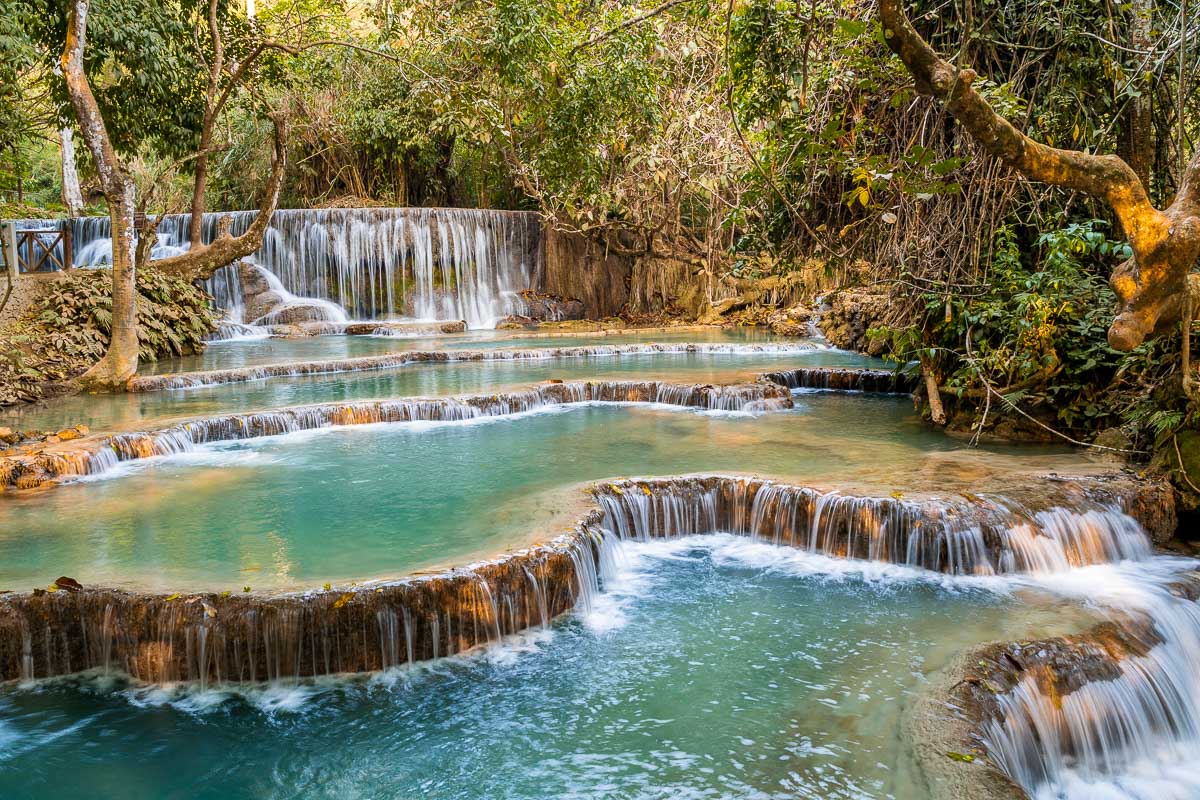
Enigmatic Laos is home to magnificent Buddhist temples, architecture that juxtaposes East and West, pristine natural landscapes, and plenty of outdoor pursuits.
As it’s still relatively untouched by mass tourism, spending one week in Laos provides you with the opportunity to experience the splendor of Southeast Asia without the crowds, hustle, and bustle.
To help you see the best of Laos in one week, I have curated the following itinerary which features where to go, where to stay, how to get around the country, and what to do.
Read on and discover the perfect Laos itinerary which allows you to maximize your time and see all the most beautiful places in Laos!
* Disclosure: This post contains a few affiliate links, which means I may receive a small commission, at no cost to you, if you make a purchase through my link. *
Table of Contents
Overview of Your One Week Laos Itinerary
Rather than telling you exactly how to spend your one week in Laos day by day, this itinerary is divided by region.
For each city, I have suggested where to stay, where to eat, and what to do while you’re there. This way you can choose to spend your days in Laos doing the activities and tours that most appeal to you.
Breakdown of your one week in Laos
The three areas that you will visit during your one week in Laos are the following:
- Luang Prabang (2 days)
- Vang Vieng (3 days)
- Vientiane (2 days)
If it’s more convenient for you, it is also possible to flip this Laos travel itinerary and start in Vientiane which also has its own international airport.
Map for your Laos itinerary
Below you can find a customized map that includes all the locations you’re going to visit on this Laos itinerary.
I marked the 3 main areas you ’ll visit during your one week in Laos with different colors – I used blue for Luang Prabang, green for Vang Vieng, and red for Vientiane, so you can easily see which places you’re going to visit in each city.
How to use this map: This map is fully interactive, so you can move around, zoom in/zoom out, and click on the icons. If you want to see a larger map, click on the bracket in the upper right corner. To see more details and the different layers, click on the tab in the upper left corner. If you want to save it for later, click on the star icon next to the name of the map. Then simply open Google Maps either on your desktop or phone, go to ‘Saved’/’Maps’, and open the map whenever you need it.
Day 1-2: Luang Prabang
Luang Prabang is located in the mountainous north of Laos in a valley at the confluence of the Mekong and Nam Khan rivers.
As a UNESCO World Heritage Site, the town is brimming with ancient architecture that fuses together traditional Lao styles with colonial French builds.
This is a laid-back city where the pace of life is slow. There are no huge skyscrapers or busy highways to contend with.
Spending 2 days in Luang Prabang is the perfect length of time to experience the major sites as part of your Laos itinerary and see why so many travelers consider this one of the loveliest cities in Southeast Asia.
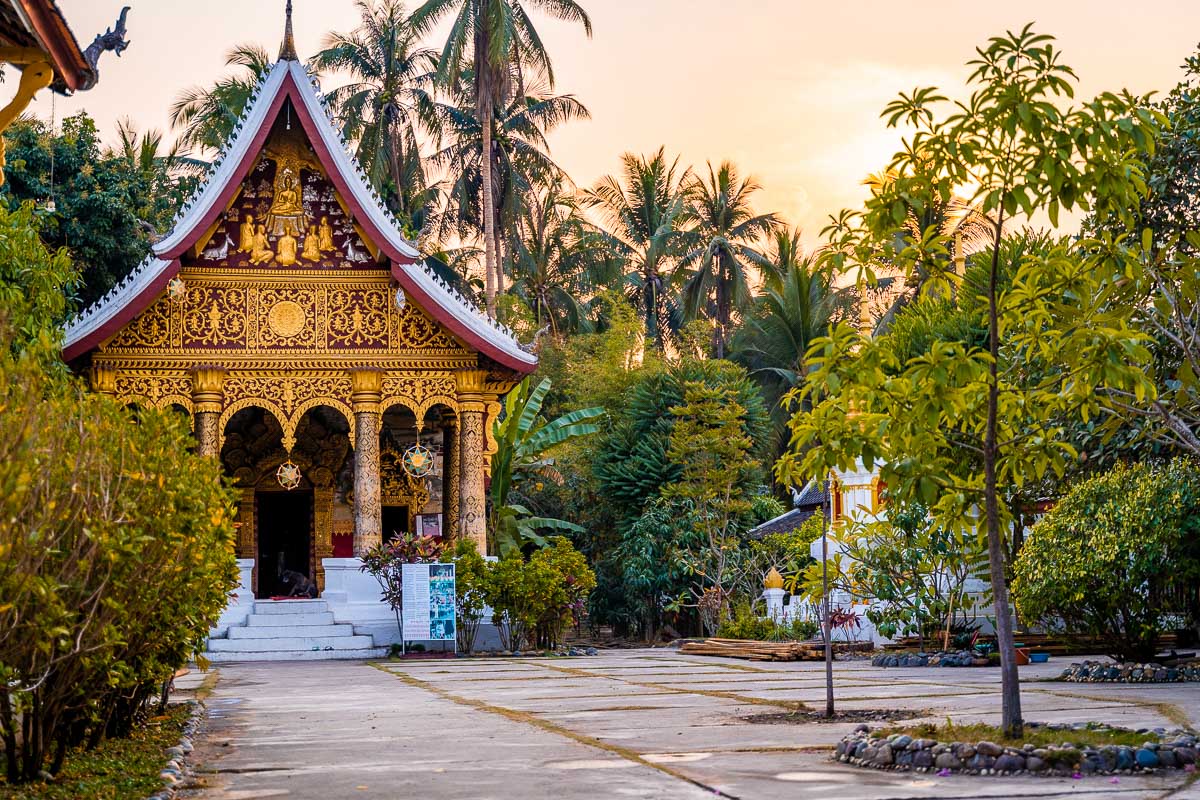
How to get to Luang Prabang
If you are traveling from overseas then you will likely arrive at Luang Prabang International Airport (LPQ). The airport is located 4 km (2.5 miles) northeast of the city.
You can fly direct to Luang Prabang from a select number of major Southeast Asian airports, Hanoi and Bangkok specifically, and if you are traveling from further afield you will likely transfer at one of these airports.
If you are already in Southeast Asia as part of a wider adventure then you could transfer to Luang Prabang by boat from Thailand. Slow boats depart from Chiang Khong (near Chiang Mai) and cruise the Mekong over the course of two days.
Where to stay in Luang Prabang
The historic heart of Luang Prabang sits right at the meeting point of the Mekong and Nam Khan rivers.
It is best to stay as centrally as possible so that you can make the most of the attractions in town and plan some early starts which are mandatory for your one week in Laos. Besides, this way you can save some cash by exploring on foot.
Here are my top picks for where to stay in Luang Prabang for different budgets.
- Luxury | Pullman Luang Prabang
- Mid-range | The Belle Rive Boutique Hotel
- Budget | Villa Mahasok Hotel
Best things to do in Luang Prabang
Cycle or walk around old town.
Luang Prabang features a dreamy fusion of traditional Lao and colonial French architecture. Carve out a few hours to explore and take photographs either on foot or with a rental bicycle.
Alternatively, you can take a tour of Luang Prabang by tuk tuk with a professional tour guide if you want to learn more about the history.
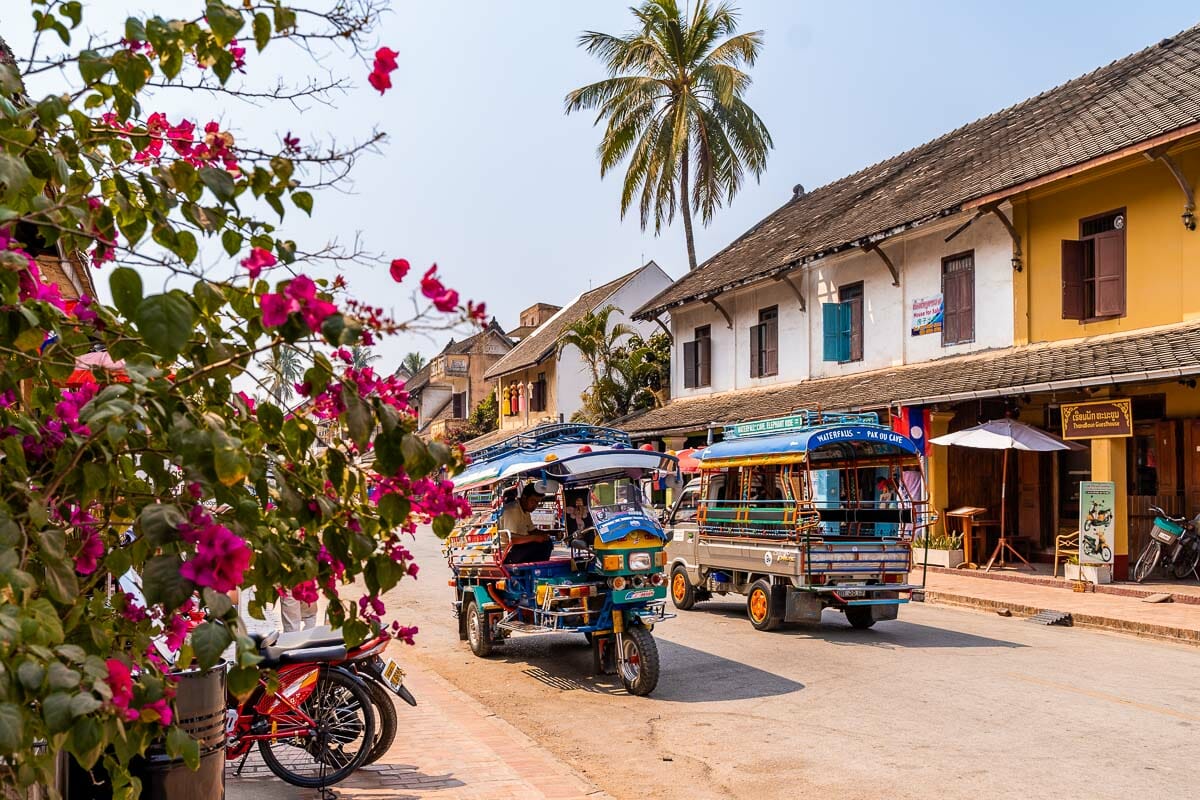
Observe the Alms Giving Ceremony
Alms giving is a ceremony whereby locals hand out offerings of rice and food to the resident monks. This takes place daily in Luang Prabang at dawn.
As a tourist, you are welcome to watch the ritual, however, it’s important to respectfully observe from a distance and not interrupt the procession of monks.
Watch the sunrise at Mount Phu Si (Mount Phousi)
Watching the morning sun flood the city atop its tallest point is a special addition to your one week in Laos itinerary.
Mount Phu Si literally translates into ‘sacred hill’ and the summit (where you will find the golden stupa of Wat Chom Si) is accessible via a climb of over 300 steps.
The 100 meters (328 feet) tall hill is located in the town center so there’s no excuse to hit the snooze button.
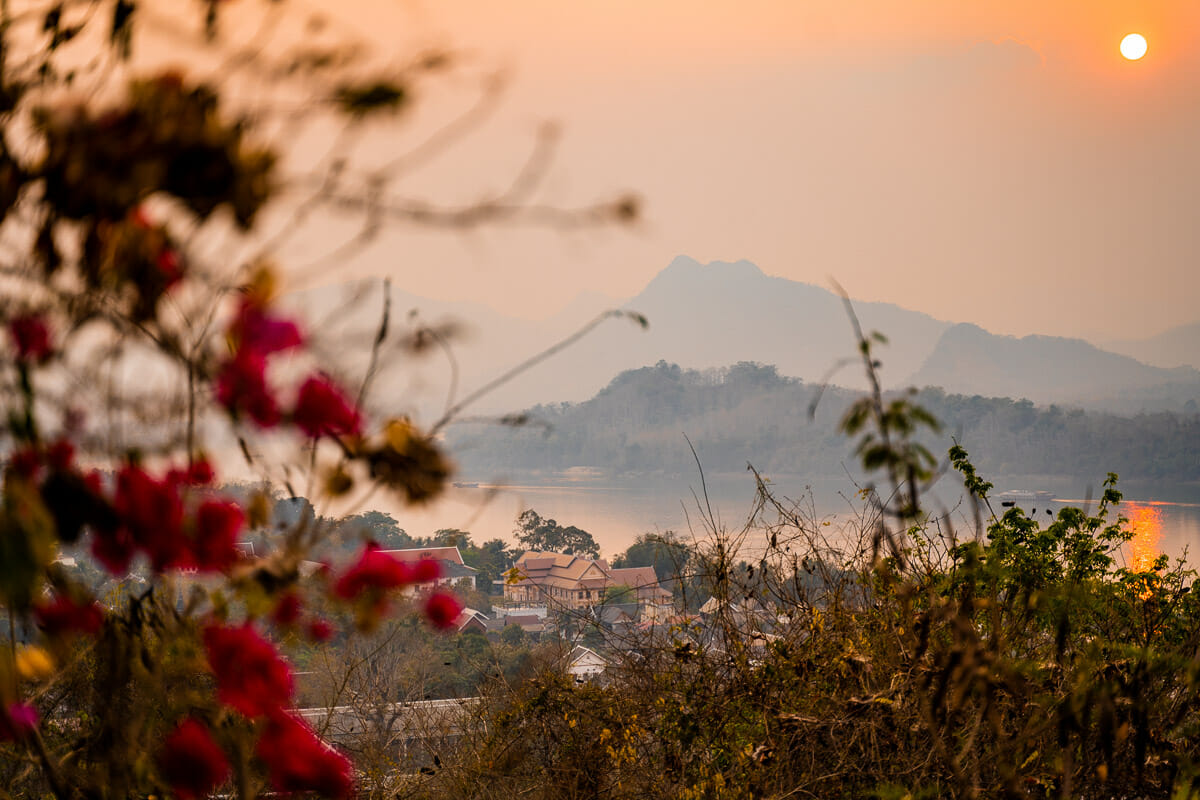
Step into Lao history at the Royal Palace
This former royal residence of King Sisavang Vong was built in 1904 using a blend of Lao and French architectural styles.
It has since been transformed into a museum that houses royal relics, holy Buddhist artifacts, and palatial apartments that show how the royal family lived. The museum is also known as Haw Kham (Golden Hall).
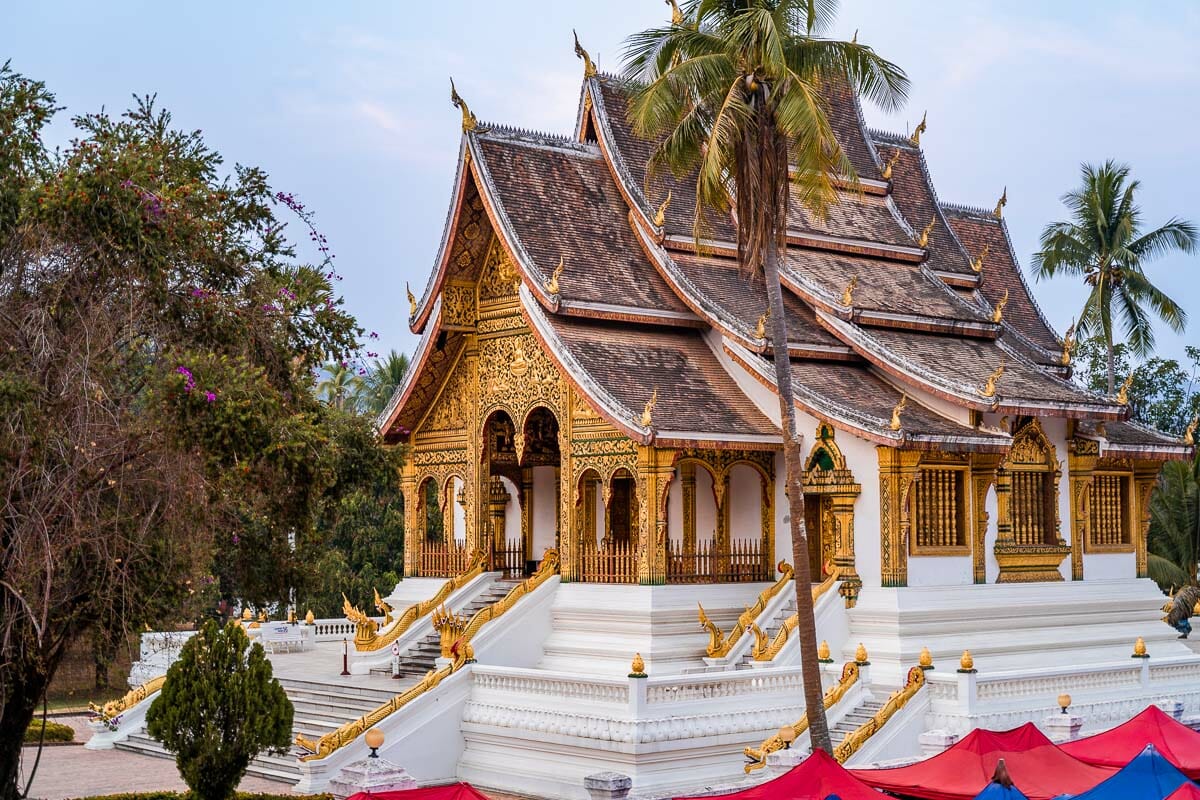
Tick off the temples of Luang Prabang
There are 34 temples awaiting you in Luang Prabang so you could easily spend your entire Laos one week itinerary hopping around them all.
Start with one of the largest and most sacred, Wat Xieng Thong, which was constructed in the 16th century.
You can visit independently or as part of this heritage sites of Luang Prabang guided tour if you want to glean more insight into Laotian culture.
Plunge into the Kuang Si Waterfall
Slip into your hiking boots and visit one of the most beautiful waterfalls in Laos which tumbles down through the jungle foliage.
Taking a dip in the turquoise pool of the Kuang Si Waterfall is the perfect way to launch into your one week in Laos.
It’s possible to climb up through the forest to reach the top of the 50 meters (164 feet) falls but you will require sturdy footwear.
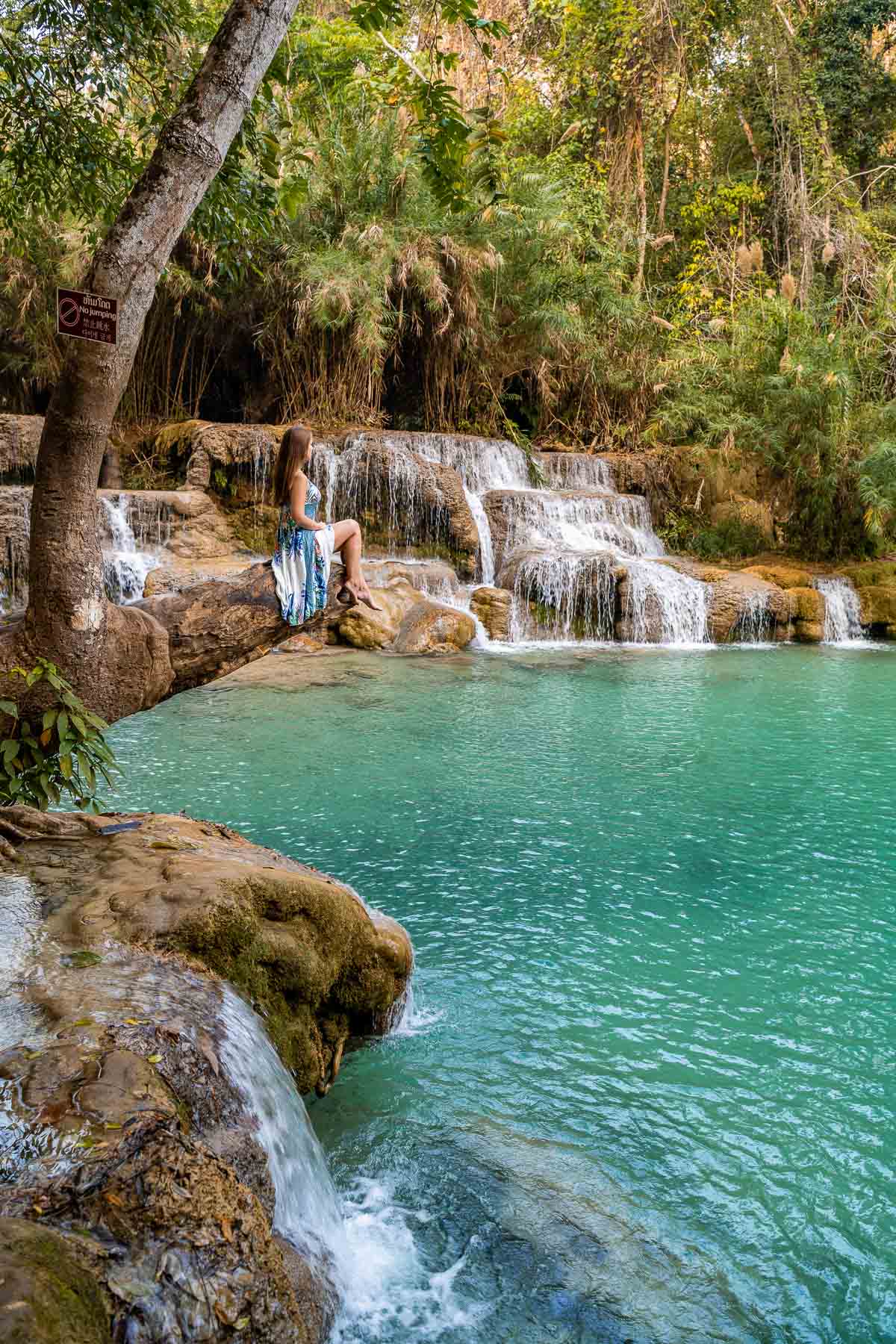
Find sanctuary at the Pha Tad Ke Botanical Garden
Considered the first botanical garden to open in Laos, Pha Tad Ke is teeming with orchids, bamboo, and colorful tropical plant life.
Your ticket includes the boat trip to and from the garden and grants access to a herbal tea tasting and whatever handicraft workshops are scheduled on the day of your visit.
Shop for souvenirs at the Night Market
There are a couple of markets in Luang Prabang where you can shop for keepsakes.
The Night Market opens every evening around 5 pm and provides you with the chance to pick up street food, textile products, and other locally made gift items. You can find it on Phothisalath Road.
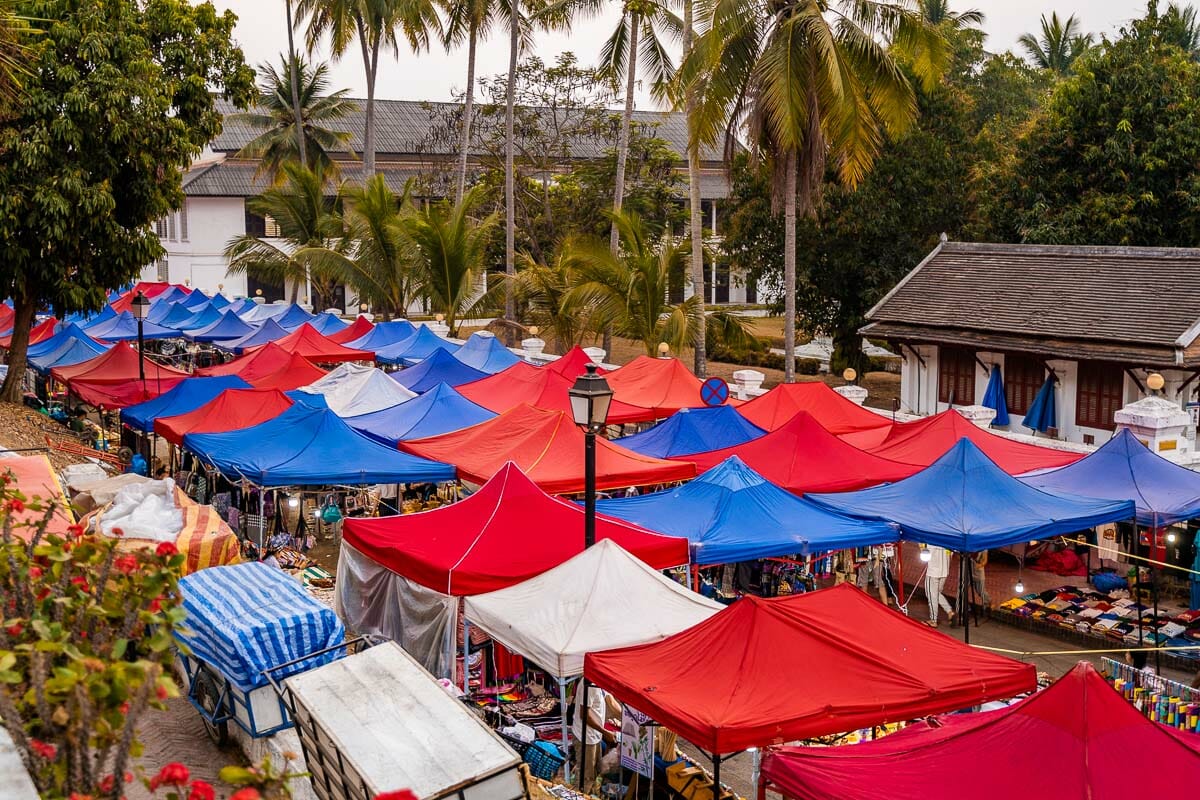
Where to eat in Luang Prabang
- Yuni Youpon : Constantly rated as the number one restaurant in all of Luang Prabang, this charming restaurant prides itself on serving delicious bites from all over the world.
- Le Calao : Situated within a refurbished colonial mansion, this riverside restaurant offers a view of the Mekong from its elegant balcony while you tuck into traditional Lao dishes.
- Saffron Coffee : Grab a morning coffee and observe the peaceful morning landscape across the Mekong. All-day breakfast and light lunch dishes are on the menu.
- Le Banneton Café French Bakery : Get your fix of quintessential French pastries or quality pizza at this popular bakery.
- Two Little Birds Cafe : Serving healthy dishes that fuse East and West, this is one of the best places to eat in town if you’re on a plant-based diet.
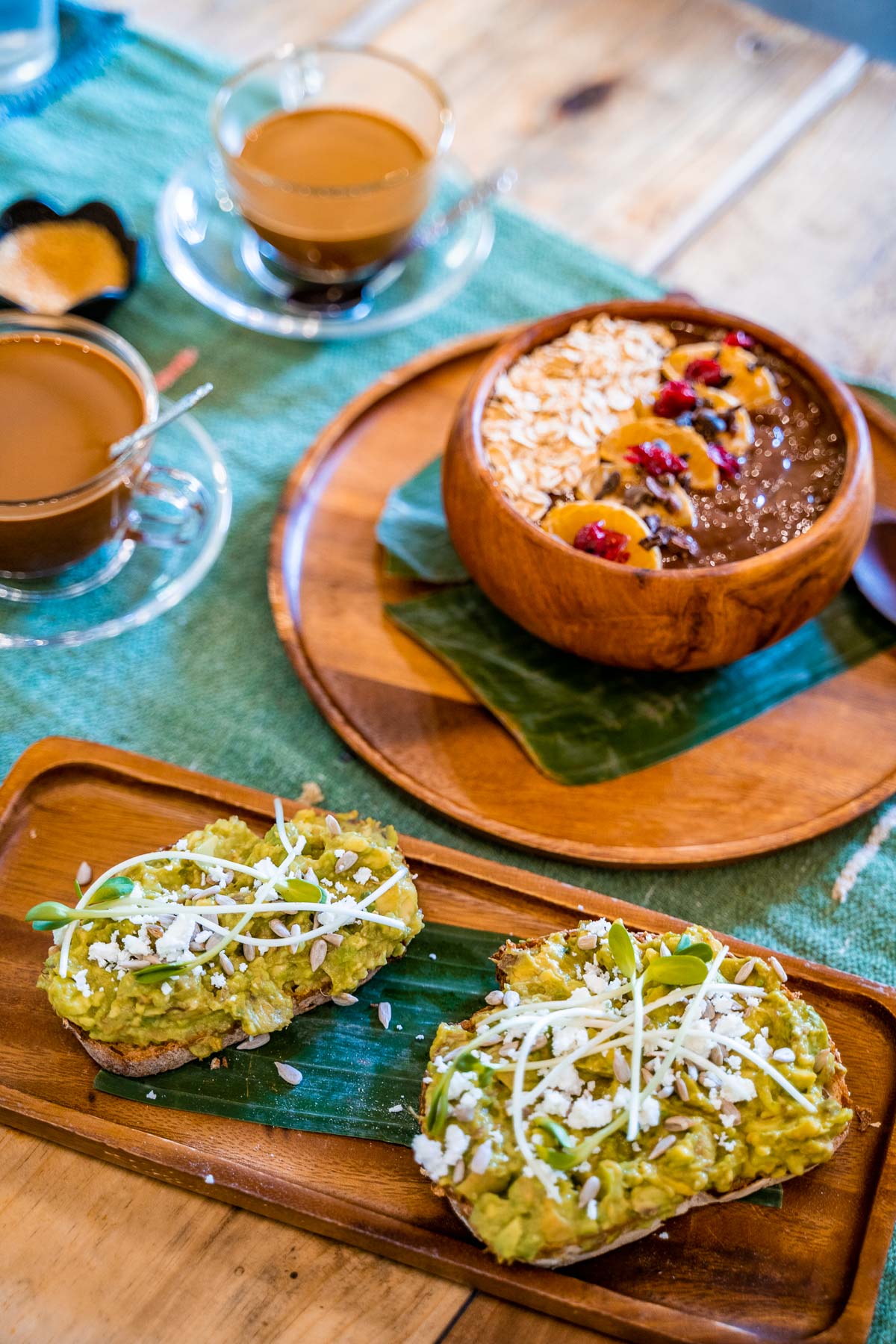
Day 3-5: Vang Vieng
Vang Vieng is one of the most gorgeous places you’ll experience while traveling around Laos in one week, or perhaps in the world.
This rural setting is where you’ll see limestone mountains, blue lagoons, caves, and plains speckled with rice paddies and tufts of greenery. There are so many incredible things to do in Vang Vieng that you can easily fill three days in the area.
When Vang Vieng first arrived on the Laos travel scene it rose to fame as a party hotspot. Nowadays it follows in the footsteps of Luang Prabang and provides a far more tranquil experience.
You’re more likely to encounter travelers waking up for a sunrise hike or taking a yoga class than partying until dawn.
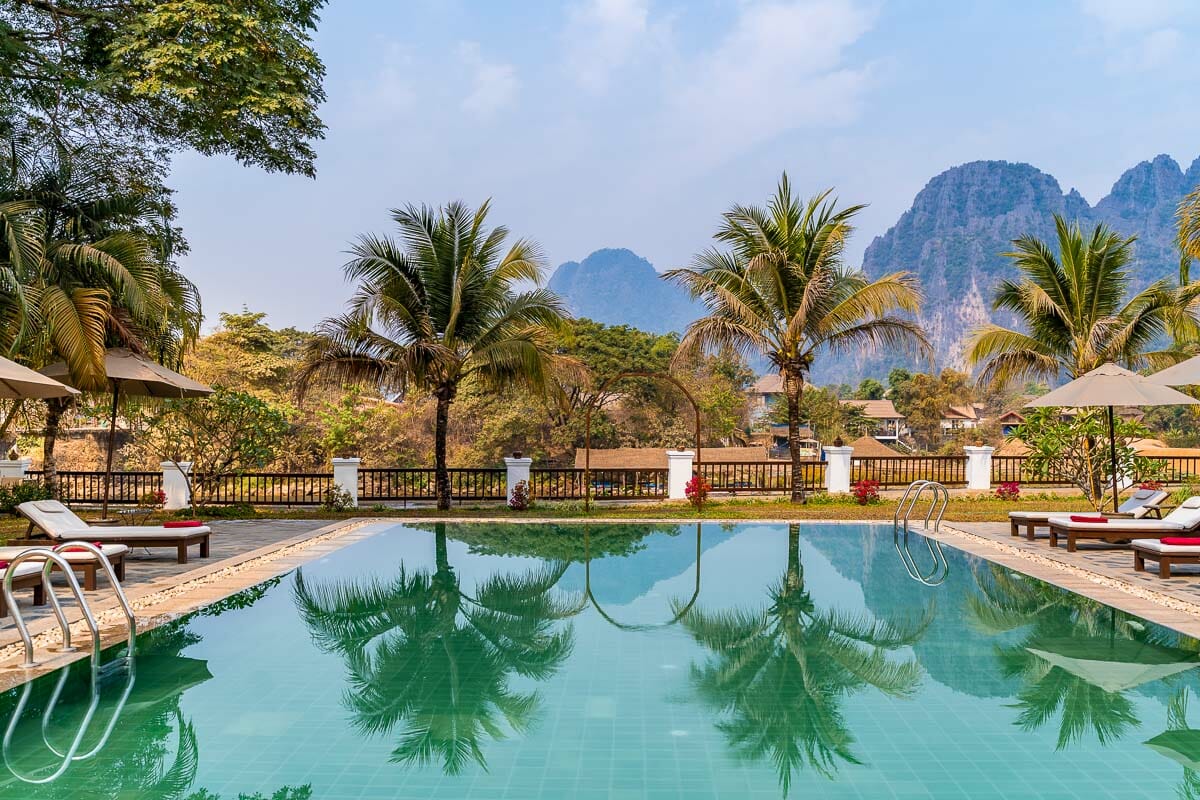
How to get to Vang Vieng
The easiest and most cost-effective way of transferring to Vang Vieng from Luang Prabang is by taking a train.
Back in the day the only way to get there was to take a very long (6-7 hours) bumpy ride through the mountains, but luckily with the newly built Boten-Vientiane railway (which is the Lao section of the Lao-China Railway), things have changed.
Now you can easily board a train in Luang Prabang and in a little more than an hour, you’ll arrive in Vang Vieng. The trains are air-conditioned and quite comfortable too, so traveling to Vang Vieng is really a breeze now.
Where to stay in Vang Vieng
In a similar vein to Luang Prabang, the center of Vang Vieng is compact and walkable.
If you want to avoid hiring a scooter and paying for tuk tuks and taxis then you are best staying as centrally as possible so that you can walk to most of the attractions on this Laos itinerary.
Here are my top hotel recommendations in Vang Vieng.
- Luxury | Riverside Boutique Resort (you can read our complete hotel review here )
- Mid-range | Confetti Garden Resort
- Budget | Sansan Resort
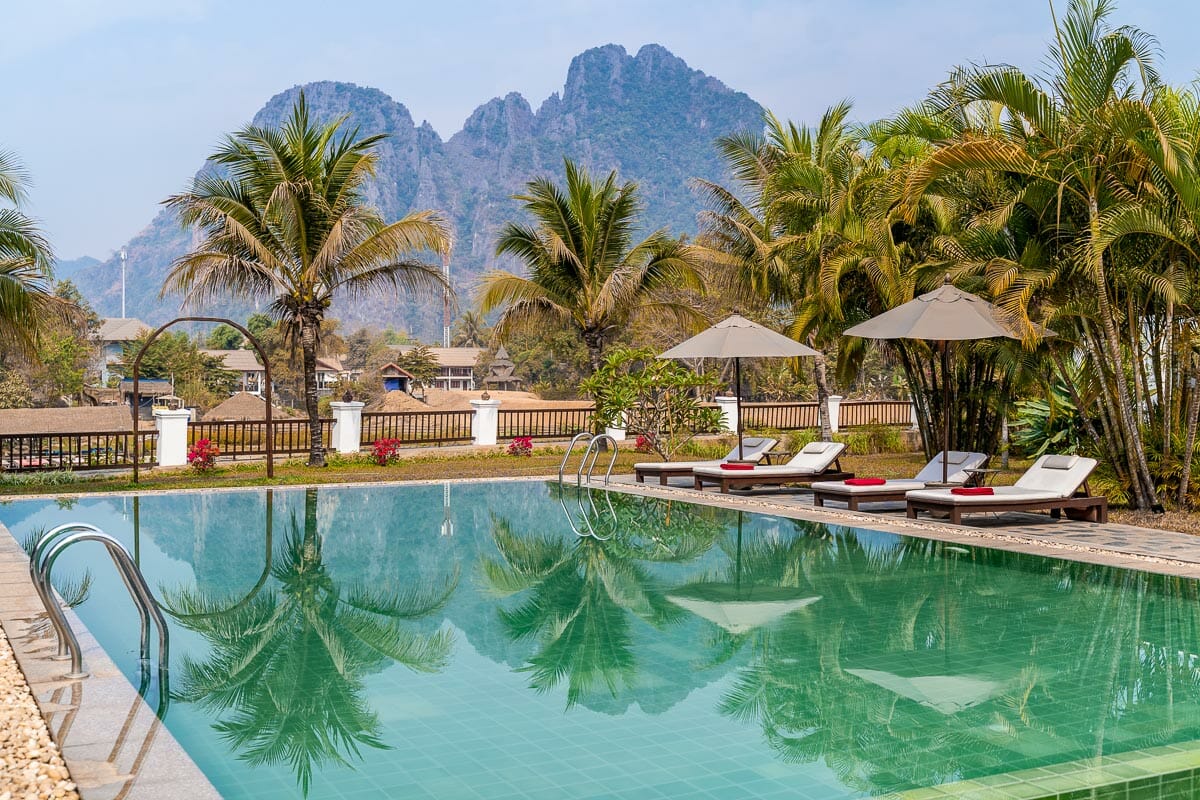
Best things to do in Vang Vieng
Swim in a blue lagoon.
Vang Vieng is famous for its resplendent blue lagoons and there are six located a short drive from the town where you can bathe in the turquoise water.
Choose to hop around the different lagoons (they are named Blue Lagoon 1, 2, 3, etc.) or relax at one for a longer time period.
You can visit independently if you hire a scooter or buggy, or else book a tuk tuk transfer to tour them hassle-free.
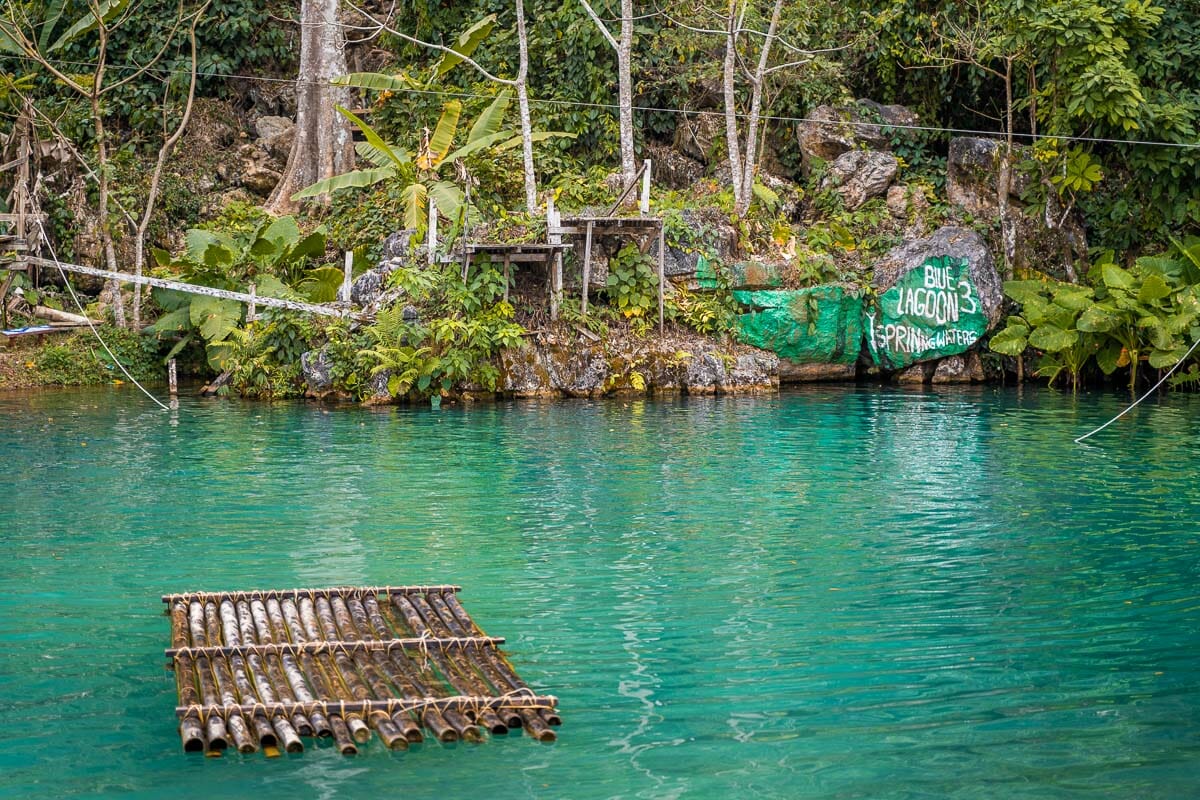
Explore Tham Chang Cave (Tham Xang)
In addition to the lagoons, there are a couple of caves located in Vang Vieng that you can explore.
One of the most accessible, Tham Chang Cave, is a short walk across the Orange Bridge and features a spring where you can take a dip. Keep your eyes peeled for the stalactite shaped like an elephant.
Tour the Nam Song River by Tube, Kayak, or Longtail Boat
You have a variety of options available for exploring the Nam Song River and its caves.
Tubing is one of the popular options for adrenaline seekers and is much safer these days with more emphasis on the experience itself rather than the partying aspect.
Alternatively, you can join a guided kayaking cruise or hop aboard a longtail boat.
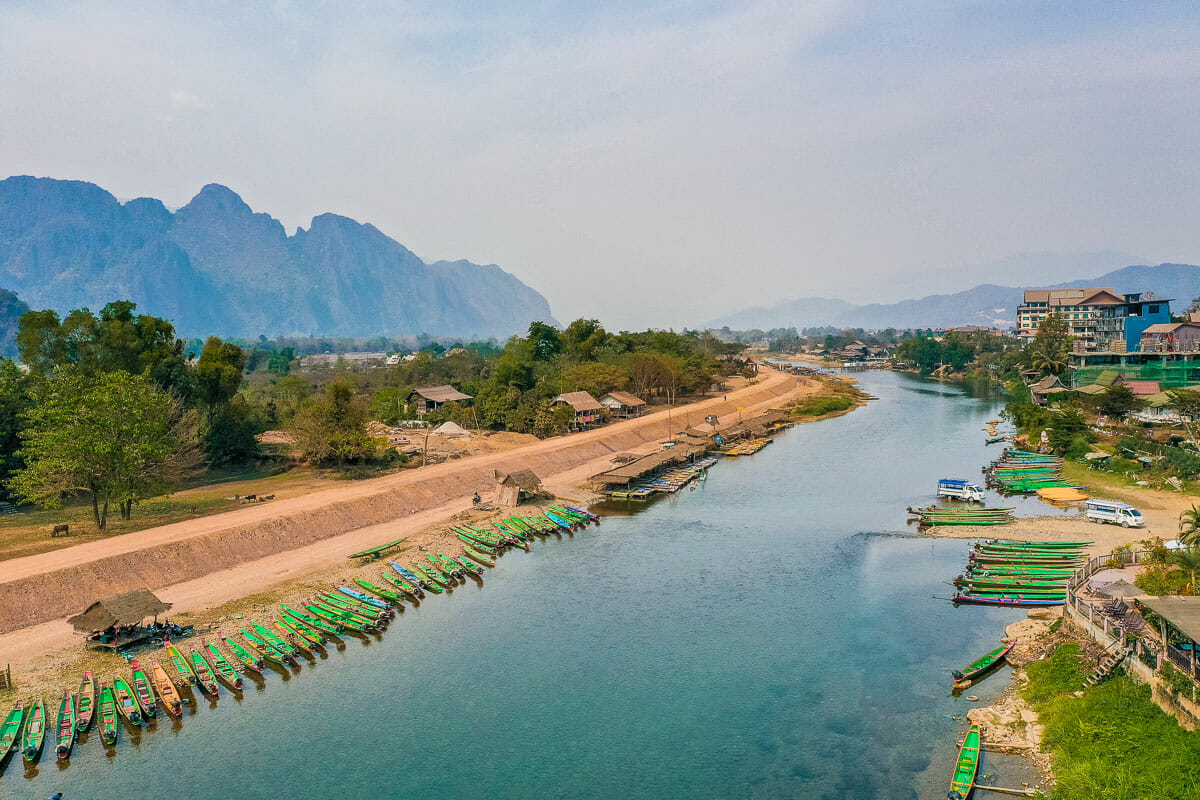
Temple hop in Vang Vieng
Vang Vieng has fewer temples than Luang Prabang so it’s easy to take some time in your Laos travel itinerary to visit them.
Retreat to the largest, Wat That, where you will stumble upon golden buddhas, nagi snakes, and other Buddhist sculptures.
If you fancy a drive through the lush landscape you can head north to Wat Pho Karm Chai Mong Kol which is set amongst the tropical greenery and provides remarkable views.
Hike to the Nam Xay Viewpoint
To appreciate the breathtaking scenery of Vang Vieng you can hike up to one of the nearby viewpoints.
The summit of the Nam Xay Viewpoint takes less than 1 hour to hike so it’s perfectly feasible for your Laos itinerary. Although do prepare for the fact that it is more of a scramble than a hike in some places.
You’ll need to dress appropriately and have your hands free to navigate your way to the incredible finishing point.
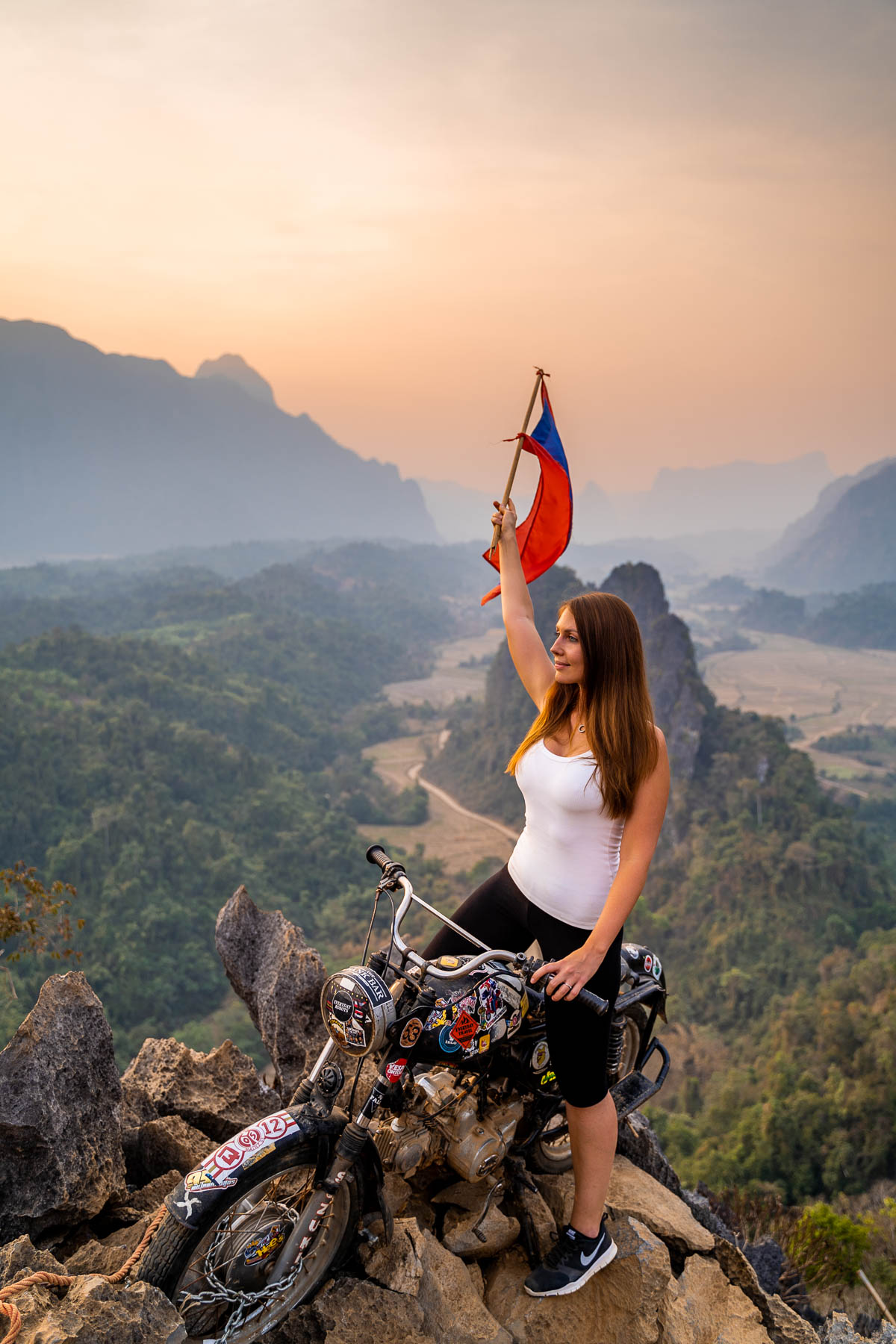
Splash out on a Hot Air Balloon Ride
Vang Vieng is one of the most affordable destinations in the world where you can ride a hot air balloon and gaze out across some of the most spectacular scenery in the world.
Above Laos schedules daily flights at sunrise and sunset, subject to the weather conditions.
Stroll through the rice fields
In between all the water activities and high octane activities, take some time to enjoy the serenity of Vang Vieng by taking a stroll in the surrounding rice fields.
Cross the Namsong Bridge to the western bank of the Nam Song River and you’ll find some of the most picturesque in the area surrounding the hotels of Vieng Tara Villa and Maylin Guest House.
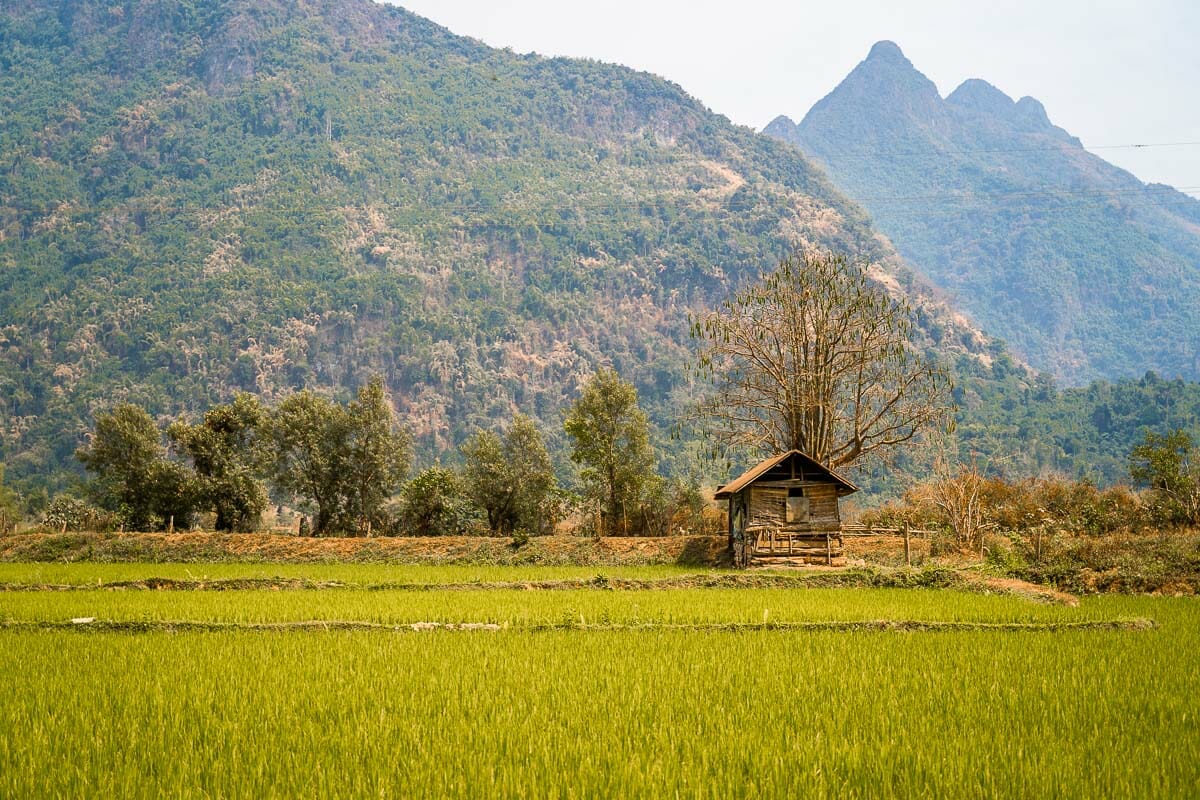
Where to eat in Vang Vieng
- Restaurant du Crabe d’Or : Discover exactly why this is the top-rated restaurant in Vang Vieng! Meals fuse Lao, Asian and French cuisine paired with imported fine wines with a magical view of the Karst mountains.
- Thammada Kitchen : This is a small restaurant with a boutique menu that’s bursting with flavor. Try their signature coconut shrimp curry.
- Phubarn Cafe : A riverside cafe with a good selection of hearty main courses, smoothies, wines, and beers.
- Naked Espresso : Recover from your early morning antics with a flat white or fresh green tea and a slice of cake at this centrally located cafe.
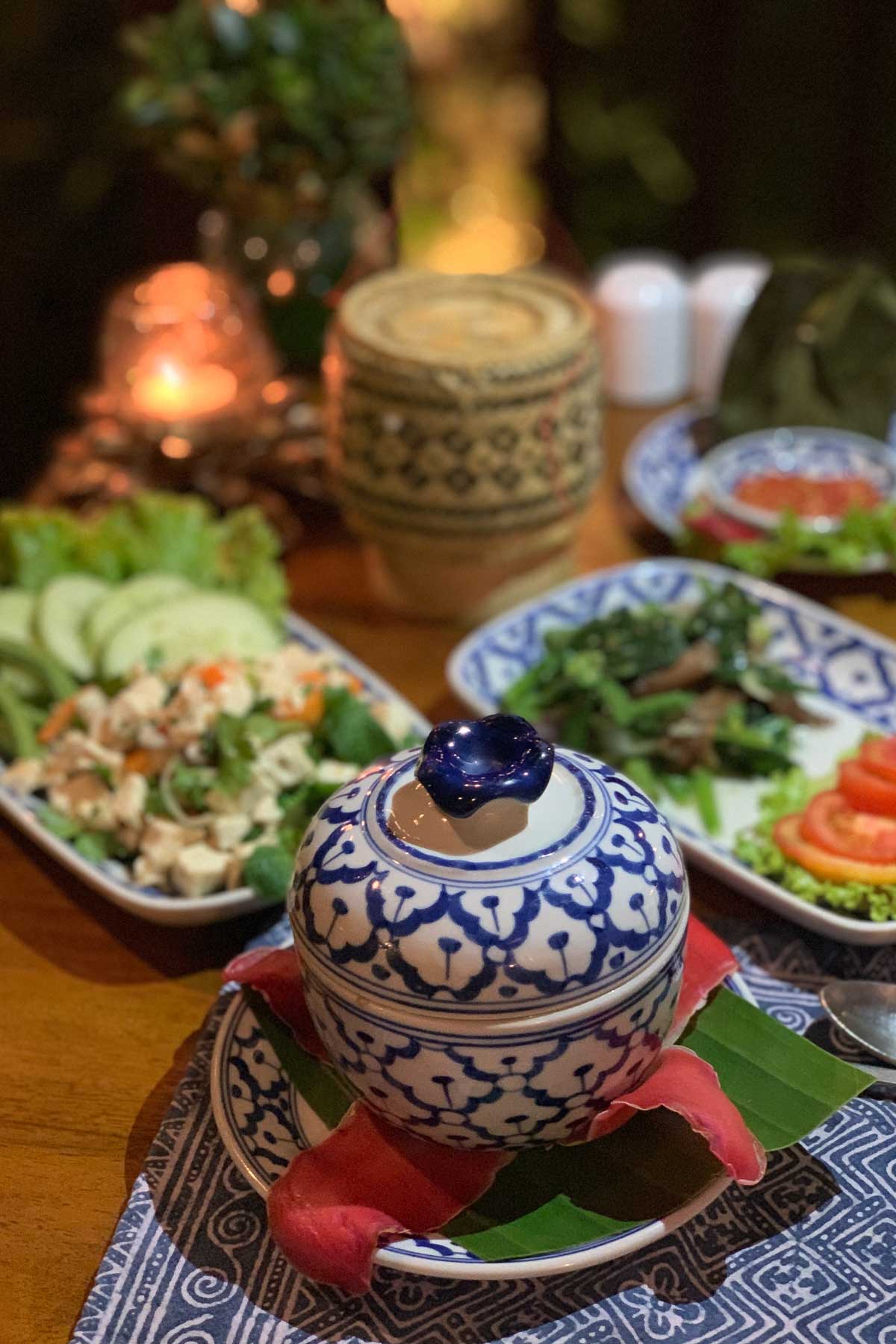
Day 6-7: Vientiane
Located close to the Thai border, Vientiane is the capital and largest city in Laos.
Keeping up with the trend set by Luang Prabang and Vang Vieng, do not travel to Vientiane seeking chaos and noise – the city maintains the level of calmness that is synonymous with Laos.
The city is punctuated by yet more glorious architecture, temples, landmarks, and places to indulge in Lao cuisine.
Dedicating two days of your one week in Laos itinerary is the perfect amount of time to explore the inner city and plan a trip to the outskirts to see some of the unique attractions of Vientiane.
Vientiane is the location of the only other international airport in Laos and so you can choose to start your travels here if you prefer.
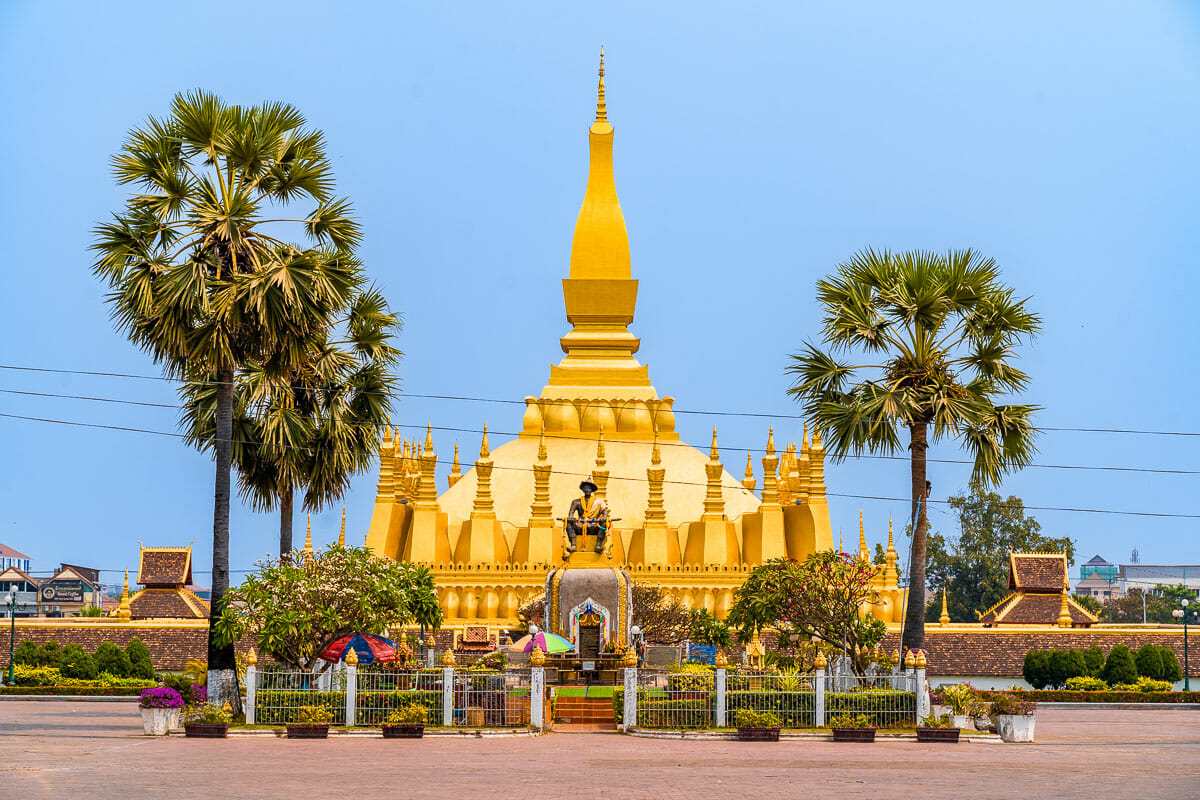
How to get to Vientiane
Again, the easiest way is to travel by train. The journey only takes a bit more than one hour, making it much quicker and more comfortable than the old bus rides.
Where to stay in Vientiane
Vientiane is the largest place that you will visit during your one week in Laos and as such, the city districts are more spread out.
With two days to spend in Vientiane, it’s best to stay centrally and choose a hotel close to the riverfront in the Ban Haysoke and Watchan neighborhoods. This way you can walk to attractions or hop on the public bus or call a taxi with the rideshare app, LocaLaos.
Here are the three top places to stay in Vientiane with different budgets in mind.
- Luxury | La Seine Hotel
- Mid-range | Lao Poet Hotel
- Budget | Vientiane Boutique Hotel
Best things to do in Vientiane
Admire the patuxay monument.
As you pass by this towering memorial archway you might think you’ve teleported to Europe. This landmark was constructed to commemorate the Lao people who fought for independence from the French and in subsequent wars.
It is inspired by the Parisian Arc de Triomphe but once you get up close, you’ll see that it actually features Lao motifs.
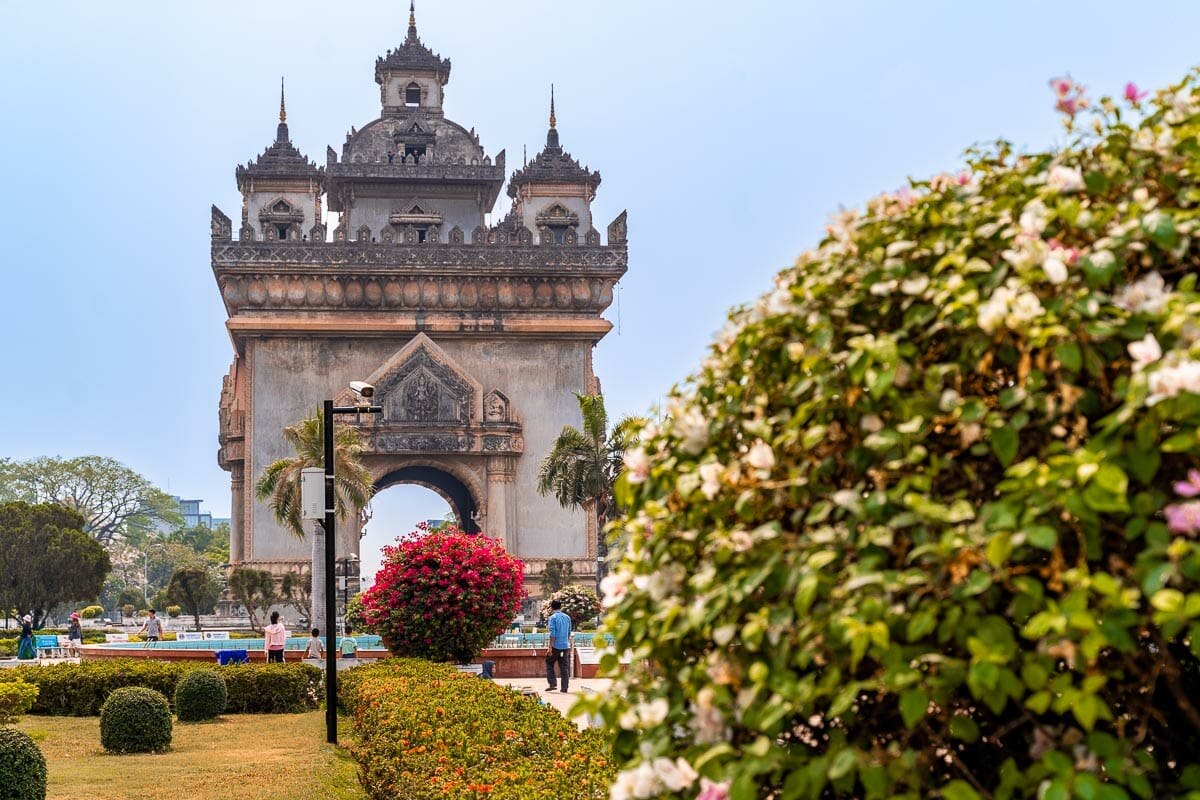
Visit the Haw Phra Kaew (Hophakaew Museum)
Formerly a Buddhist temple, Haw Phra Kaew has since been converted into a museum.
The foundations of the building date back to 1565 when it was erected to house the sacred Emerald Buddha. It has been rebuilt several times and now contains a wide selection of Buddhist relics and artifacts.
Discover textile culture at the Lao Textile Museum
If you can’t help admiring the exquisite textiles of Laos then you might enjoy taking a trip to the Lao Textile Museum and seeing how the women dye and weave fabrics using traditional methods.
The museum is slightly further afield so does require transport to get there and you may want to coincide it with a trip to the nearby Lao National Museum.
Tour the temples of Vientiane
Another city, another list of temples to discover during your one week in Laos!
Visit Wat That Khao to see the colossal reclining Buddha and Pha That Luang to see the 44 meters (144 feet) tall stupa. The early 19th century Wat Si Saket is one of the oldest temples in town and is built in the Siamese style.
Again if you want to gain more understanding of the heritage behind the temples and the Patuxay Monument you might prefer to join a walking or even a cycling tour of Vientiane.
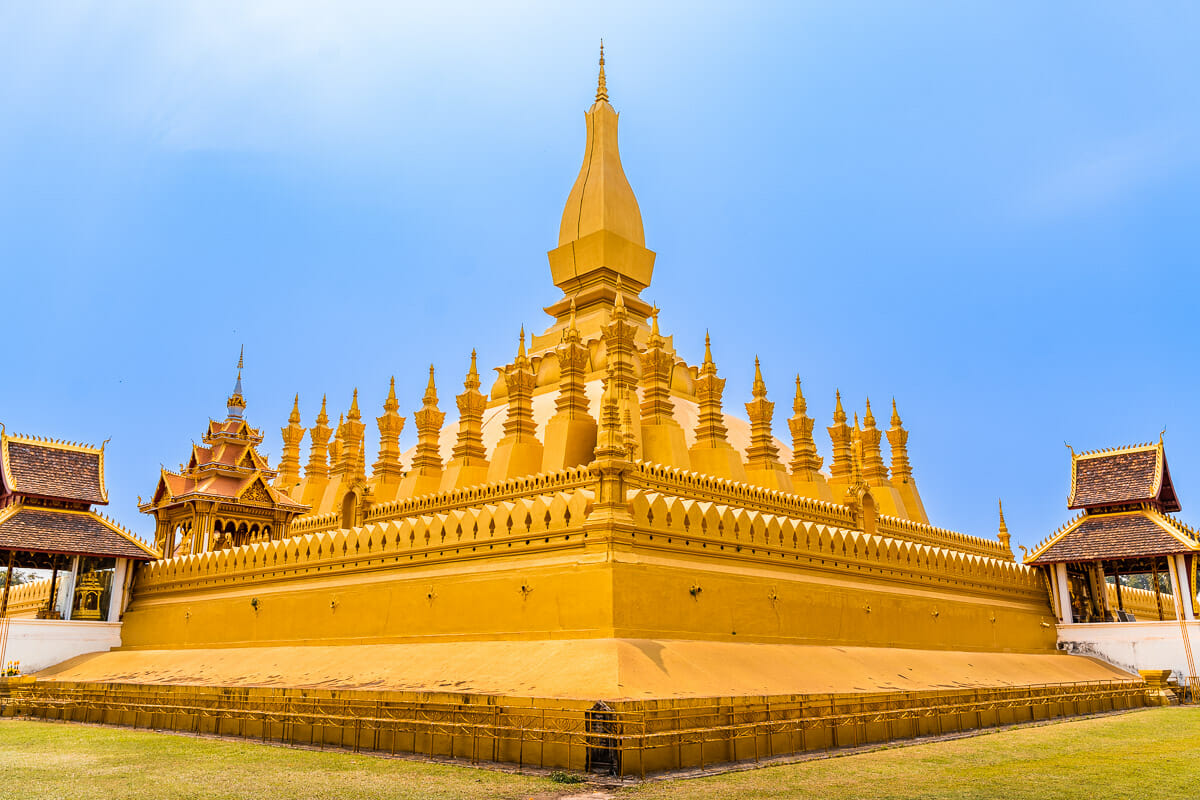
Watch the sunset from Chao Anouvong Park
This riverside park is the perfect place to survey the Mekong river and enjoy watching your final sunset in Laos.
It’s also the setting of the daily night market which springs to life around 6 pm and gives you a chance to pick up some Lao street food, handicrafts, clothing, and other trinkets.
Take a Lao Cooking Class
If you’ve fallen head over heels with Lao cuisine then taking a cooking class that enables you to whip up your own dishes back at home is the ultimate souvenir from your one week in Laos.
Cooking classes in Vientiane typically start with you selecting your own herbs from the garden and learning about the theory behind typical Lao dishes.
Roam in Buddha Park (Xieng Khuan)
Situated 22 km (13.7 miles) southeast of downtown Vientiane, this park is brimming with Buddha statues as well as representations of various other creatures from Buddhist and Hindu mythology.
You can visit independently or book a Vientiane highlights tour that concludes at the park.
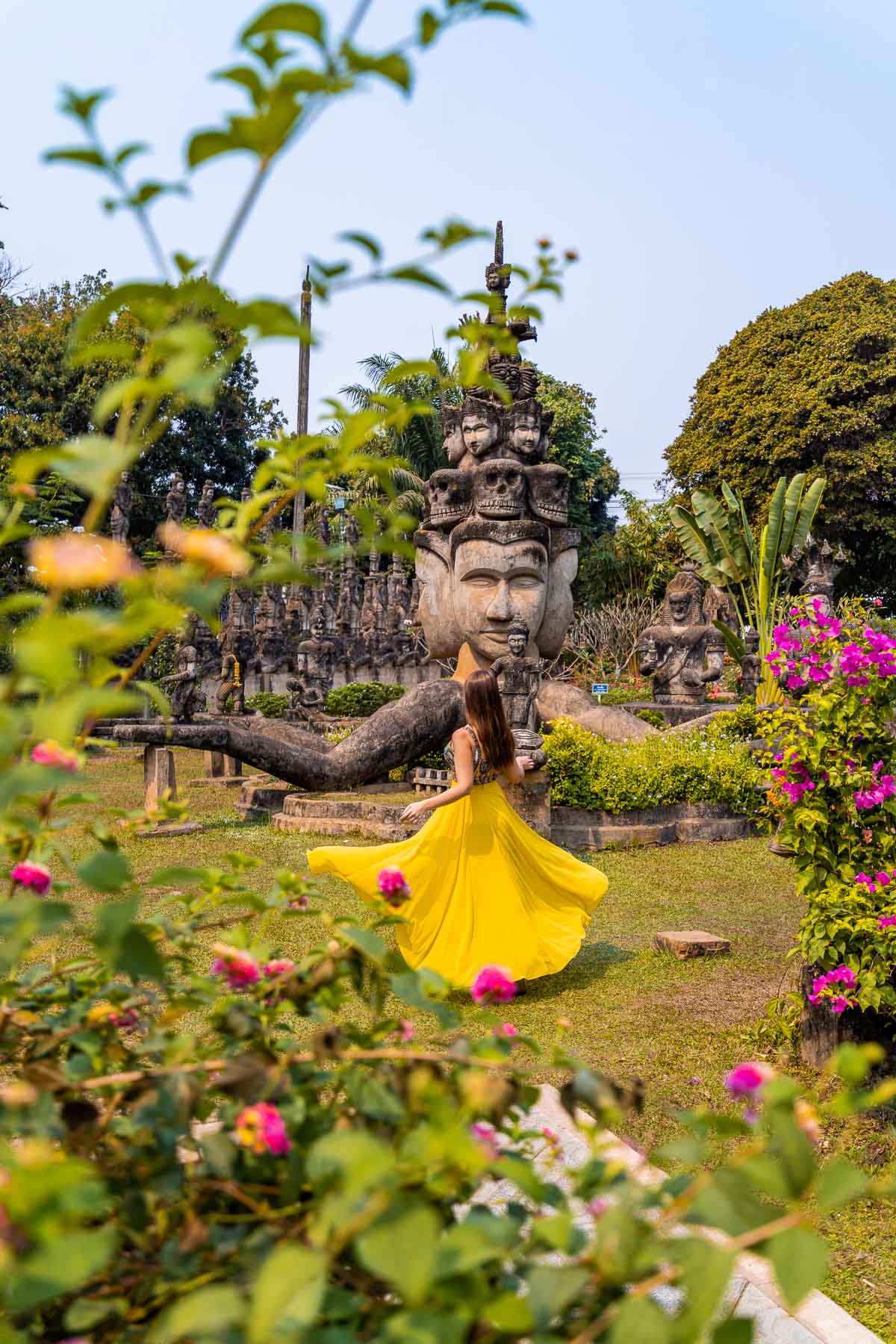
Where to eat in Vientiane
- The Living Library Restaurant : The garden setting is worth it alone but the healthy vegetarian/vegan food makes it all the better. Food is artistically presented and packed with nutrients.
- Belle Époque Brasserie : An elegant dining room where you can choose between French, Lao, and vegetarian sets or browse an extensive a la carte.
- The Cabana Design Studio & Café : An arty cafe where you can indulge in healthy brunch plates and not so healthy cakes. Their coffees and juices are exactly what you need to recoup some energy in between sightseeing.
- Annabelle : There are two outposts of this cafe in Vientiane, one is situated in the city center while the other is located in Saphanthong Village. It’s a dainty setting where you can sip French coffee and enjoy a butter pastry or stuffed croissant.
Planning a trip to Laos?
Then you might want to take a look at all our other travel guides about Laos. I promise, they are just as awesome as this article was!
- Top 10 Best Things to Do in Vang Vieng, Laos
- The Perfect 2 Days in Luang Prabang Itinerary for First Timers
- Hotel Review: Riverside Boutique Resort Vang Vieng
Pin It for Later!
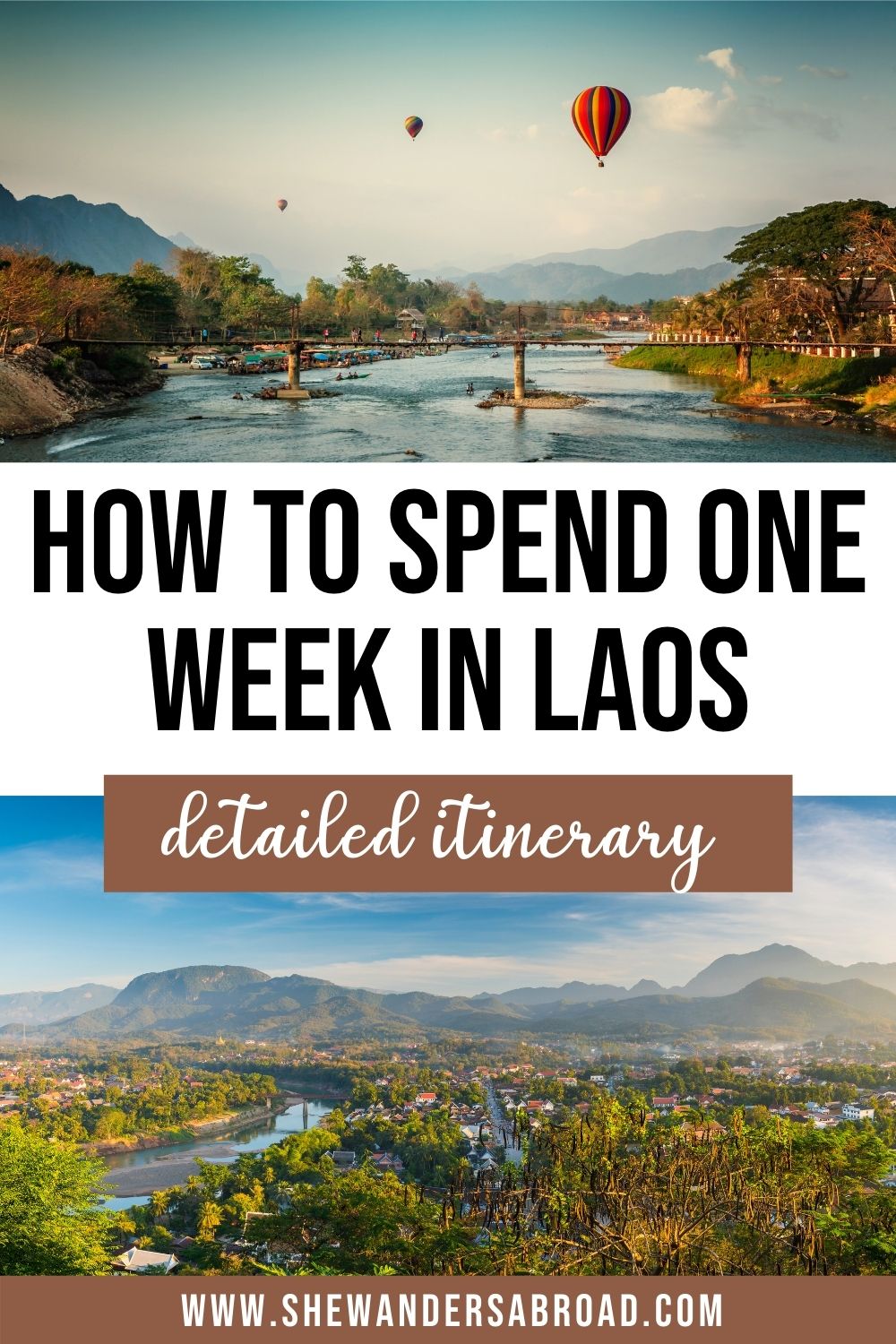
Leave a Comment Cancel reply

AUTHENTIC ASIA
Alive with the traditions now lost elsewhere in the region
UNTOUCHED BEAUTY
Awe-inspiring landscapes filled with wonder, waiting to be explored
UNIQUELY LAIDBACK
An ancient land of timelessness, serenity and tranquility
Discover Laos
From the rolling mountains of the north to the river islands of the south, ours is a land of untouched wonder and rare beauty. Rich in history, traditions, diverse landscapes and cultures, Laos is sure to captivate your inner explorer.
When will you begin your journey of discovery?
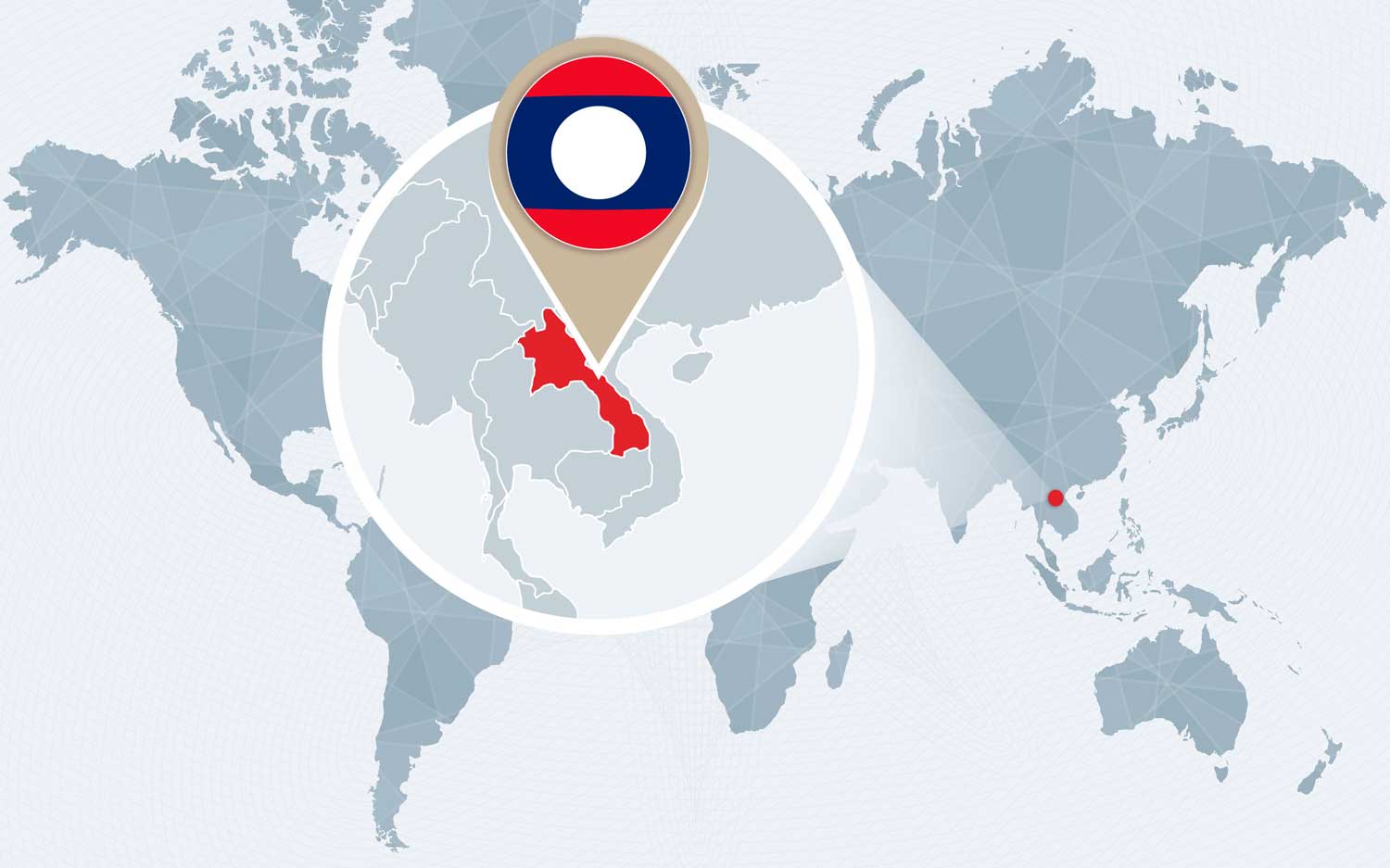
Storied History
Spanning thousands of years, with archaeological finds, recent war ruins, and living heritage to show for it.
Sense of Time
We focus on living in the moment, rather than the rush-rush-rush of hectic schedules.
Cultural Diversity
49 ethnicities and 160 ethnic groups
Fascinating Nature
From limestone karsts and misty mountains to the great Mekong, underground caves and jade-green waters…
What would you like to
ANCIENT MYSTERIES
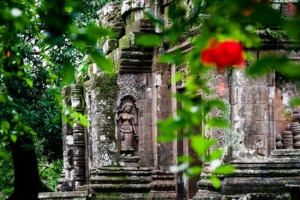
WONDERS OF NATURE
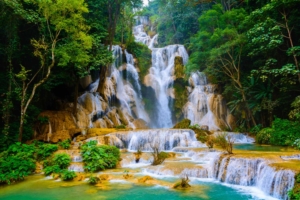
BUDDHISM & BELIEF
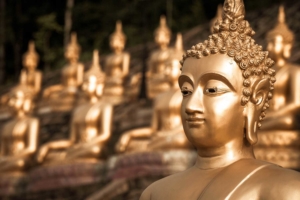
AUTHENTIC CULTURE
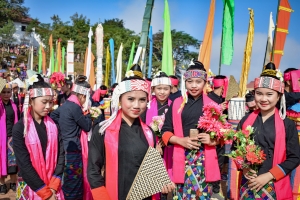
THE SECRET WAR
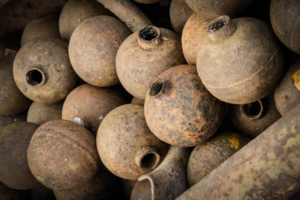
LEGENDARY LANDMARKS
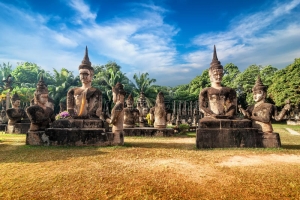
What kind of person are you?
What Kind of Travel do you Love?
Action & adventure.
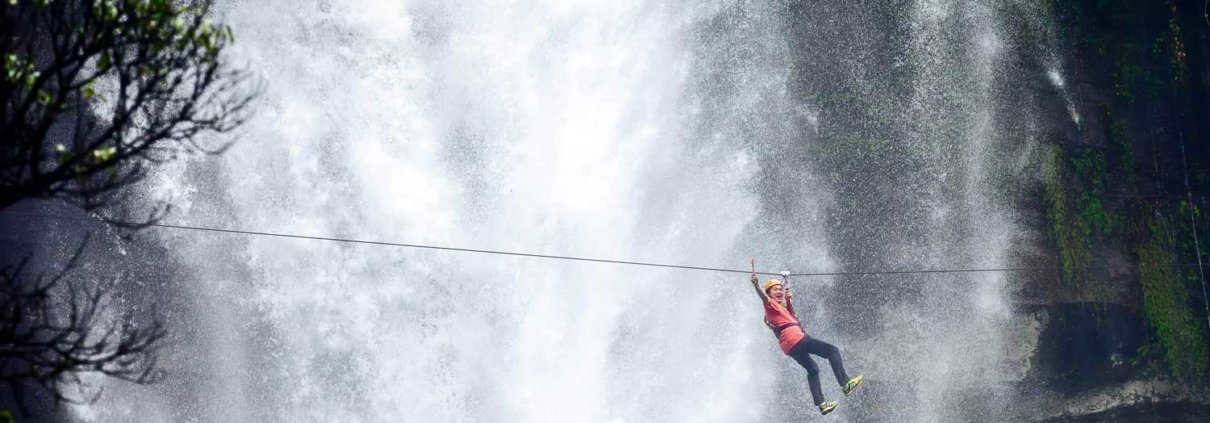
Rest & Relaxation
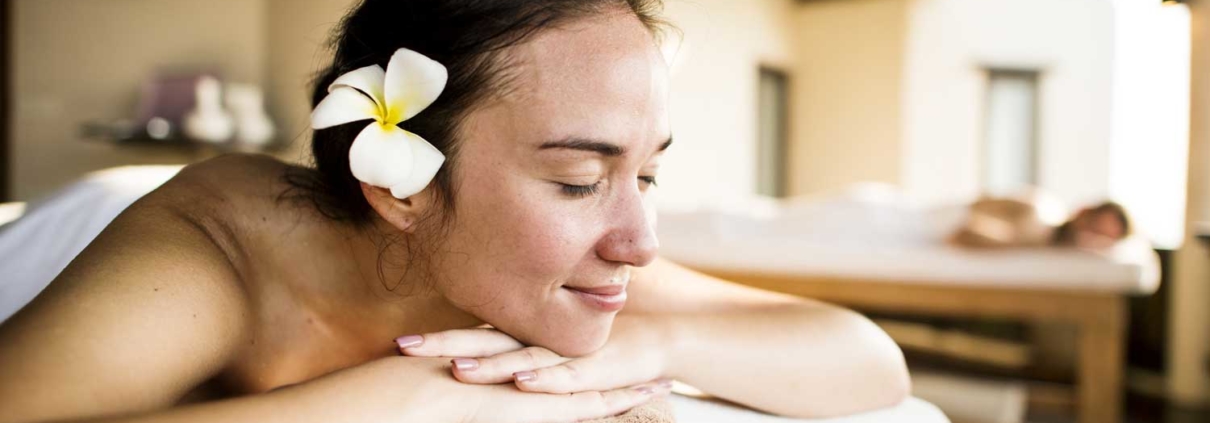
Novelty & Discovery
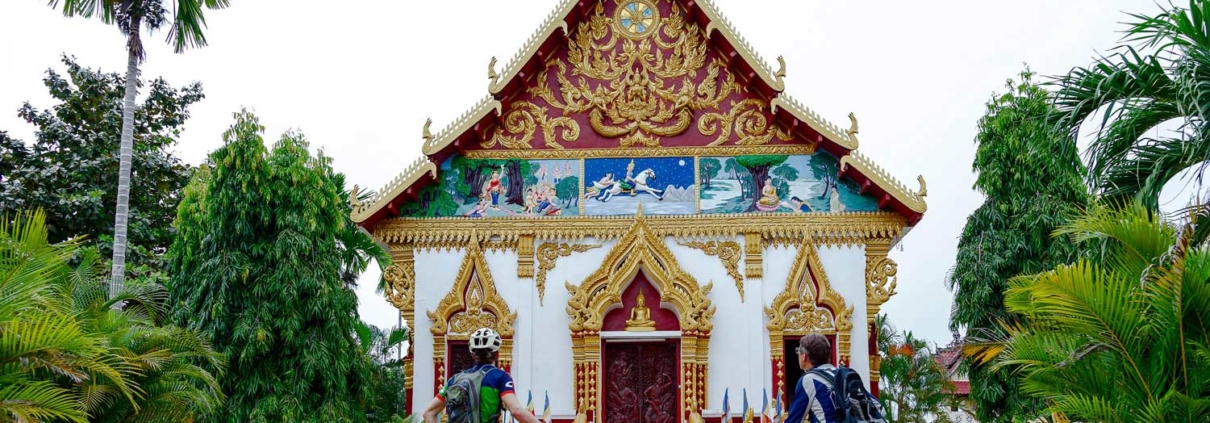
Exploration & Variety

Mekong Tourism Forum 2024 Sets Stage for 2025 Tourism Event in Luang Prabang

Unlocking Laos: Adventures Await in Vang Vieng, Luang Prabang

Luang Prabang Welcomes Record Numbers During New Year Celebrations
You may also be interested in:
- Trade & Media Resources
- Southern Laos – charming by nature
- Ecotourism Laos
- Visit SE Asia

Tourism Marketing Department Ministry of Information, Culture and Tourism Lane Xang Avenue Hatsadi Village Chanthabouly District Vientiane Capital
Tel/Fax: +856-21-212248 Website: www.tourismlaos.org
Cookies on GOV.UK
We use some essential cookies to make this website work.
We’d like to set additional cookies to understand how you use GOV.UK, remember your settings and improve government services.
We also use cookies set by other sites to help us deliver content from their services.
You have accepted additional cookies. You can change your cookie settings at any time.
You have rejected additional cookies. You can change your cookie settings at any time.
- Passports, travel and living abroad
- Travel abroad
- Foreign travel advice
Warnings and insurance
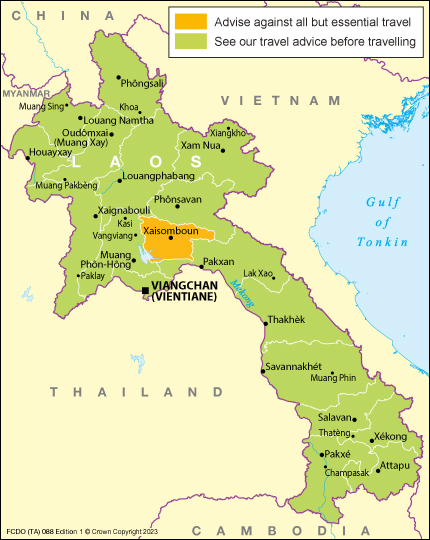
The Foreign, Commonwealth & Development Office ( FCDO ) provides advice about risks of travel to help British nationals make informed decisions. Find out more about FCDO travel advice .
Areas where FCDO advises against all but essential travel
Your travel insurance could be invalidated if you travel against FCDO advice. Consular support is also severely limited where FCDO advises against travel.
Xaisomboun Province
FCDO advises against all but essential travel to Xaisomboun Province. There are intermittent attacks on infrastructure and armed clashes with anti-government groups.
Find out more about why FCDO advises against travel .
Before you travel
No travel can be guaranteed safe. Read all the advice in this guide as well as support for British nationals abroad which includes:
- advice on preparing for travel abroad and reducing risks
- information for women, LGBT+ and disabled travellers
Follow and contact FCDO travel on Twitter , Facebook and Instagram . You can also sign up to get email notifications when this advice is updated.
Travel insurance
If you choose to travel, research your destinations and get appropriate travel insurance . Insurance should cover your itinerary, planned activities and expenses in an emergency.
Related content
Is this page useful.
- Yes this page is useful
- No this page is not useful
Help us improve GOV.UK
Don’t include personal or financial information like your National Insurance number or credit card details.
To help us improve GOV.UK, we’d like to know more about your visit today. We’ll send you a link to a feedback form. It will take only 2 minutes to fill in. Don’t worry we won’t send you spam or share your email address with anyone.
You are using an outdated browser. Upgrade your browser today or install Google Chrome Frame to better experience this site.
Laos Traveler View
Travel health notices, vaccines and medicines, non-vaccine-preventable diseases, stay healthy and safe.
- Packing List
After Your Trip
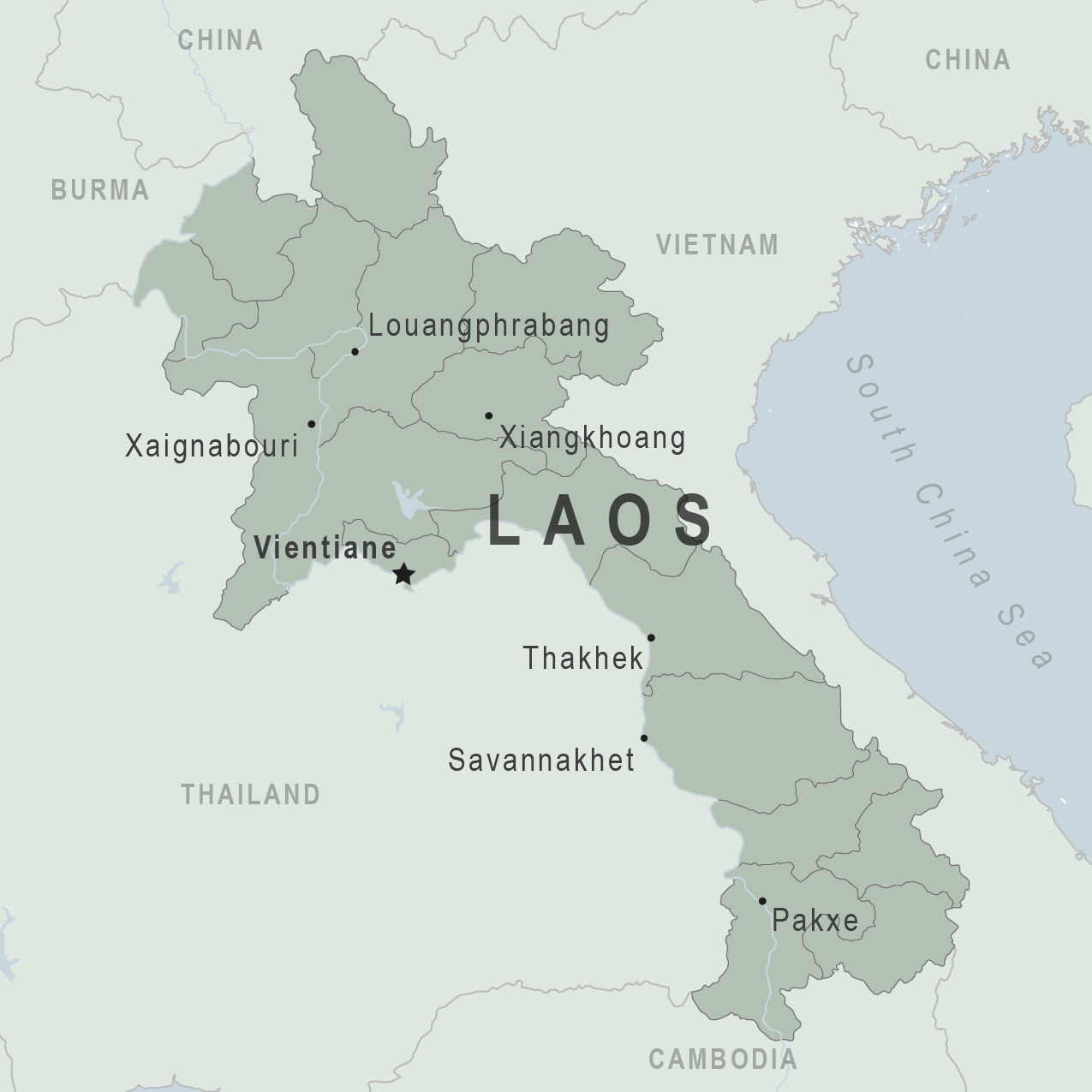
Be aware of current health issues in Laos. Learn how to protect yourself.
Level 1 Practice Usual Precautions
- Dengue in Asia and the Pacific Islands April 18, 2024 Dengue is a risk in many parts of Asia and the Pacific Islands. Some countries are reporting increased numbers of cases of the disease. Travelers to Asia and the Pacific Islands can protect themselves by preventing mosquito bites. Destination List: Cambodia, Indonesia, Laos, Malaysia, Singapore, Sri Lanka
⇧ Top
Check the vaccines and medicines list and visit your doctor at least a month before your trip to get vaccines or medicines you may need. If you or your doctor need help finding a location that provides certain vaccines or medicines, visit the Find a Clinic page.
Routine vaccines
Recommendations.
Make sure you are up-to-date on all routine vaccines before every trip. Some of these vaccines include
- Chickenpox (Varicella)
- Diphtheria-Tetanus-Pertussis
- Flu (influenza)
- Measles-Mumps-Rubella (MMR)
Immunization schedules
All eligible travelers should be up to date with their COVID-19 vaccines. Please see Your COVID-19 Vaccination for more information.
COVID-19 vaccine
Hepatitis A
Recommended for unvaccinated travelers one year old or older going to Laos.
Infants 6 to 11 months old should also be vaccinated against Hepatitis A. The dose does not count toward the routine 2-dose series.
Travelers allergic to a vaccine component or who are younger than 6 months should receive a single dose of immune globulin, which provides effective protection for up to 2 months depending on dosage given.
Unvaccinated travelers who are over 40 years old, immunocompromised, or have chronic medical conditions planning to depart to a risk area in less than 2 weeks should get the initial dose of vaccine and at the same appointment receive immune globulin.
Hepatitis A - CDC Yellow Book
Dosing info - Hep A
Hepatitis B
Recommended for unvaccinated travelers younger than 60 years old traveling to Laos. Unvaccinated travelers 60 years and older may get vaccinated before traveling to Laos.
Hepatitis B - CDC Yellow Book
Dosing info - Hep B
Japanese Encephalitis
Recommended for travelers who
- Are moving to an area with Japanese encephalitis to live
- Spend long periods of time, such as a month or more, in areas with Japanese encephalitis
- Frequently travel to areas with Japanese encephalitis
Consider vaccination for travelers
- Spending less than a month in areas with Japanese encephalitis but will be doing activities that increase risk of infection, such as visiting rural areas, hiking or camping, or staying in places without air conditioning, screens, or bed nets
- Going to areas with Japanese encephalitis who are uncertain of their activities or how long they will be there
Not recommended for travelers planning short-term travel to urban areas or travel to areas with no clear Japanese encephalitis season.
Japanese encephalitis - CDC Yellow Book
Japanese Encephalitis Vaccine for US Children
CDC recommends that travelers going to certain areas of Laos take prescription medicine to prevent malaria. Depending on the medicine you take, you will need to start taking this medicine multiple days before your trip, as well as during and after your trip. Talk to your doctor about which malaria medication you should take.
Find country-specific information about malaria.
Malaria - CDC Yellow Book
Considerations when choosing a drug for malaria prophylaxis (CDC Yellow Book)
Malaria information for Laos.
Cases of measles are on the rise worldwide. Travelers are at risk of measles if they have not been fully vaccinated at least two weeks prior to departure, or have not had measles in the past, and travel internationally to areas where measles is spreading.
All international travelers should be fully vaccinated against measles with the measles-mumps-rubella (MMR) vaccine, including an early dose for infants 6–11 months, according to CDC’s measles vaccination recommendations for international travel .
Measles (Rubeola) - CDC Yellow Book
Rabid dogs are commonly found in Laos. If you are bitten or scratched by a dog or other mammal while in Laos, there may be limited or no rabies treatment available.
Consider rabies vaccination before your trip if your activities mean you will be around dogs or wildlife.
Travelers more likely to encounter rabid animals include
- Campers, adventure travelers, or cave explorers (spelunkers)
- Veterinarians, animal handlers, field biologists, or laboratory workers handling animal specimens
- Visitors to rural areas
Since children are more likely to be bitten or scratched by a dog or other animals, consider rabies vaccination for children traveling to Laos.
Rabies - CDC Yellow Book
Recommended for most travelers, especially those staying with friends or relatives or visiting smaller cities or rural areas.
Typhoid - CDC Yellow Book
Dosing info - Typhoid
- Avoid contaminated water
Leptospirosis
How most people get sick (most common modes of transmission)
- Touching urine or other body fluids from an animal infected with leptospirosis
- Swimming or wading in urine-contaminated fresh water, or contact with urine-contaminated mud
- Drinking water or eating food contaminated with animal urine
- Avoid contaminated water and soil
Clinical Guidance
Schistosomiasis
- Wading, swimming, bathing, or washing in contaminated freshwater streams, rivers, ponds, lakes, or untreated pools.
Avoid bug bites
Chikungunya
- Mosquito bite
- Avoid Bug Bites
- Mosquito bite
- An infected pregnant woman can spread it to her unborn baby
Airborne & droplet
Avian/bird flu.
- Being around, touching, or working with infected poultry, such as visiting poultry farms or live-animal markets
- Avoid domestic and wild poultry
- Breathing in air or accidentally eating food contaminated with the urine, droppings, or saliva of infected rodents
- Bite from an infected rodent
- Less commonly, being around someone sick with hantavirus (only occurs with Andes virus)
- Avoid rodents and areas where they live
- Avoid sick people
Tuberculosis (TB)
- Breathe in TB bacteria that is in the air from an infected and contagious person coughing, speaking, or singing.
Learn actions you can take to stay healthy and safe on your trip. Vaccines cannot protect you from many diseases in Laos, so your behaviors are important.
Eat and drink safely
Food and water standards around the world vary based on the destination. Standards may also differ within a country and risk may change depending on activity type (e.g., hiking versus business trip). You can learn more about safe food and drink choices when traveling by accessing the resources below.
- Choose Safe Food and Drinks When Traveling
- Water Treatment Options When Hiking, Camping or Traveling
- Global Water, Sanitation and Hygiene | Healthy Water
- Avoid Contaminated Water During Travel
You can also visit the Department of State Country Information Pages for additional information about food and water safety.
Prevent bug bites
Bugs (like mosquitoes, ticks, and fleas) can spread a number of diseases in Laos. Many of these diseases cannot be prevented with a vaccine or medicine. You can reduce your risk by taking steps to prevent bug bites.
What can I do to prevent bug bites?
- Cover exposed skin by wearing long-sleeved shirts, long pants, and hats.
- Use an appropriate insect repellent (see below).
- Use permethrin-treated clothing and gear (such as boots, pants, socks, and tents). Do not use permethrin directly on skin.
- Stay and sleep in air-conditioned or screened rooms.
- Use a bed net if the area where you are sleeping is exposed to the outdoors.
What type of insect repellent should I use?
- FOR PROTECTION AGAINST TICKS AND MOSQUITOES: Use a repellent that contains 20% or more DEET for protection that lasts up to several hours.
- Picaridin (also known as KBR 3023, Bayrepel, and icaridin)
- Oil of lemon eucalyptus (OLE) or para-menthane-diol (PMD)
- 2-undecanone
- Always use insect repellent as directed.
What should I do if I am bitten by bugs?
- Avoid scratching bug bites, and apply hydrocortisone cream or calamine lotion to reduce the itching.
- Check your entire body for ticks after outdoor activity. Be sure to remove ticks properly.
What can I do to avoid bed bugs?
Although bed bugs do not carry disease, they are an annoyance. See our information page about avoiding bug bites for some easy tips to avoid them. For more information on bed bugs, see Bed Bugs .
For more detailed information on avoiding bug bites, see Avoid Bug Bites .
Stay safe outdoors
If your travel plans in Laos include outdoor activities, take these steps to stay safe and healthy during your trip.
- Stay alert to changing weather conditions and adjust your plans if conditions become unsafe.
- Prepare for activities by wearing the right clothes and packing protective items, such as bug spray, sunscreen, and a basic first aid kit.
- Consider learning basic first aid and CPR before travel. Bring a travel health kit with items appropriate for your activities.
- If you are outside for many hours in heat, eat salty snacks and drink water to stay hydrated and replace salt lost through sweating.
- Protect yourself from UV radiation : use sunscreen with an SPF of at least 15, wear protective clothing, and seek shade during the hottest time of day (10 a.m.–4 p.m.).
- Be especially careful during summer months and at high elevation. Because sunlight reflects off snow, sand, and water, sun exposure may be increased during activities like skiing, swimming, and sailing.
- Very cold temperatures can be dangerous. Dress in layers and cover heads, hands, and feet properly if you are visiting a cold location.
Stay safe around water
- Swim only in designated swimming areas. Obey lifeguards and warning flags on beaches.
- Practice safe boating—follow all boating safety laws, do not drink alcohol if driving a boat, and always wear a life jacket.
- Do not dive into shallow water.
- Do not swim in freshwater in developing areas or where sanitation is poor.
- Avoid swallowing water when swimming. Untreated water can carry germs that make you sick.
- To prevent infections, wear shoes on beaches where there may be animal waste.
Schistosomiasis, a parasitic infection that can be spread in fresh water, is found in Laos. Avoid swimming in fresh, unchlorinated water, such as lakes, ponds, or rivers.
Keep away from animals
Most animals avoid people, but they may attack if they feel threatened, are protecting their young or territory, or if they are injured or ill. Animal bites and scratches can lead to serious diseases such as rabies.
Follow these tips to protect yourself:
- Do not touch or feed any animals you do not know.
- Do not allow animals to lick open wounds, and do not get animal saliva in your eyes or mouth.
- Avoid rodents and their urine and feces.
- Traveling pets should be supervised closely and not allowed to come in contact with local animals.
- If you wake in a room with a bat, seek medical care immediately. Bat bites may be hard to see.
All animals can pose a threat, but be extra careful around dogs, bats, monkeys, sea animals such as jellyfish, and snakes. If you are bitten or scratched by an animal, immediately:
- Wash the wound with soap and clean water.
- Go to a doctor right away.
- Tell your doctor about your injury when you get back to the United States.
Consider buying medical evacuation insurance. Rabies is a deadly disease that must be treated quickly, and treatment may not be available in some countries.
Reduce your exposure to germs
Follow these tips to avoid getting sick or spreading illness to others while traveling:
- Wash your hands often, especially before eating.
- If soap and water aren’t available, clean hands with hand sanitizer (containing at least 60% alcohol).
- Don’t touch your eyes, nose, or mouth. If you need to touch your face, make sure your hands are clean.
- Cover your mouth and nose with a tissue or your sleeve (not your hands) when coughing or sneezing.
- Try to avoid contact with people who are sick.
- If you are sick, stay home or in your hotel room, unless you need medical care.
Avoid sharing body fluids
Diseases can be spread through body fluids, such as saliva, blood, vomit, and semen.
Protect yourself:
- Use latex condoms correctly.
- Do not inject drugs.
- Limit alcohol consumption. People take more risks when intoxicated.
- Do not share needles or any devices that can break the skin. That includes needles for tattoos, piercings, and acupuncture.
- If you receive medical or dental care, make sure the equipment is disinfected or sanitized.
Know how to get medical care while traveling
Plan for how you will get health care during your trip, should the need arise:
- Carry a list of local doctors and hospitals at your destination.
- Review your health insurance plan to determine what medical services it would cover during your trip. Consider purchasing travel health and medical evacuation insurance.
- Carry a card that identifies, in the local language, your blood type, chronic conditions or serious allergies, and the generic names of any medications you take.
- Some prescription drugs may be illegal in other countries. Call Laos’s embassy to verify that all of your prescription(s) are legal to bring with you.
- Bring all the medicines (including over-the-counter medicines) you think you might need during your trip, including extra in case of travel delays. Ask your doctor to help you get prescriptions filled early if you need to.
Many foreign hospitals and clinics are accredited by the Joint Commission International. A list of accredited facilities is available at their website ( www.jointcommissioninternational.org ).
In some countries, medicine (prescription and over-the-counter) may be substandard or counterfeit. Bring the medicines you will need from the United States to avoid having to buy them at your destination.
Malaria is a risk in some parts of Laos. If you are going to a risk area, fill your malaria prescription before you leave, and take enough with you for the entire length of your trip. Follow your doctor’s instructions for taking the pills; some need to be started before you leave.
Select safe transportation
Motor vehicle crashes are the #1 killer of healthy US citizens in foreign countries.
In many places cars, buses, large trucks, rickshaws, bikes, people on foot, and even animals share the same lanes of traffic, increasing the risk for crashes.
Be smart when you are traveling on foot.
- Use sidewalks and marked crosswalks.
- Pay attention to the traffic around you, especially in crowded areas.
- Remember, people on foot do not always have the right of way in other countries.
Riding/Driving
Choose a safe vehicle.
- Choose official taxis or public transportation, such as trains and buses.
- Ride only in cars that have seatbelts.
- Avoid overcrowded, overloaded, top-heavy buses and minivans.
- Avoid riding on motorcycles or motorbikes, especially motorbike taxis. (Many crashes are caused by inexperienced motorbike drivers.)
- Choose newer vehicles—they may have more safety features, such as airbags, and be more reliable.
- Choose larger vehicles, which may provide more protection in crashes.
Think about the driver.
- Do not drive after drinking alcohol or ride with someone who has been drinking.
- Consider hiring a licensed, trained driver familiar with the area.
- Arrange payment before departing.
Follow basic safety tips.
- Wear a seatbelt at all times.
- Sit in the back seat of cars and taxis.
- When on motorbikes or bicycles, always wear a helmet. (Bring a helmet from home, if needed.)
- Avoid driving at night; street lighting in certain parts of Laos may be poor.
- Do not use a cell phone or text while driving (illegal in many countries).
- Travel during daylight hours only, especially in rural areas.
- If you choose to drive a vehicle in Laos, learn the local traffic laws and have the proper paperwork.
- Get any driving permits and insurance you may need. Get an International Driving Permit (IDP). Carry the IDP and a US-issued driver's license at all times.
- Check with your auto insurance policy's international coverage, and get more coverage if needed. Make sure you have liability insurance.
- Avoid using local, unscheduled aircraft.
- If possible, fly on larger planes (more than 30 seats); larger airplanes are more likely to have regular safety inspections.
- Try to schedule flights during daylight hours and in good weather.
Medical Evacuation Insurance
If you are seriously injured, emergency care may not be available or may not meet US standards. Trauma care centers are uncommon outside urban areas. Having medical evacuation insurance can be helpful for these reasons.
Helpful Resources
Road Safety Overseas (Information from the US Department of State): Includes tips on driving in other countries, International Driving Permits, auto insurance, and other resources.
The Association for International Road Travel has country-specific Road Travel Reports available for most countries for a minimal fee.
Maintain personal security
Use the same common sense traveling overseas that you would at home, and always stay alert and aware of your surroundings.
Before you leave
- Research your destination(s), including local laws, customs, and culture.
- Monitor travel advisories and alerts and read travel tips from the US Department of State.
- Enroll in the Smart Traveler Enrollment Program (STEP) .
- Leave a copy of your itinerary, contact information, credit cards, and passport with someone at home.
- Pack as light as possible, and leave at home any item you could not replace.
While at your destination(s)
- Carry contact information for the nearest US embassy or consulate .
- Carry a photocopy of your passport and entry stamp; leave the actual passport securely in your hotel.
- Follow all local laws and social customs.
- Do not wear expensive clothing or jewelry.
- Always keep hotel doors locked, and store valuables in secure areas.
- If possible, choose hotel rooms between the 2nd and 6th floors.
Healthy Travel Packing List
Use the Healthy Travel Packing List for Laos for a list of health-related items to consider packing for your trip. Talk to your doctor about which items are most important for you.
Why does CDC recommend packing these health-related items?
It’s best to be prepared to prevent and treat common illnesses and injuries. Some supplies and medicines may be difficult to find at your destination, may have different names, or may have different ingredients than what you normally use.
If you are not feeling well after your trip, you may need to see a doctor. If you need help finding a travel medicine specialist, see Find a Clinic . Be sure to tell your doctor about your travel, including where you went and what you did on your trip. Also tell your doctor if you were bitten or scratched by an animal while traveling.
If your doctor prescribed antimalarial medicine for your trip, keep taking the rest of your pills after you return home. If you stop taking your medicine too soon, you could still get sick.
Malaria is always a serious disease and may be a deadly illness. If you become ill with a fever either while traveling in a malaria-risk area or after you return home (for up to 1 year), you should seek immediate medical attention and should tell the doctor about your travel history.
For more information on what to do if you are sick after your trip, see Getting Sick after Travel .
Map Disclaimer - The boundaries and names shown and the designations used on maps do not imply the expression of any opinion whatsoever on the part of the Centers for Disease Control and Prevention concerning the legal status of any country, territory, city or area or of its authorities, or concerning the delimitation of its frontiers or boundaries. Approximate border lines for which there may not yet be full agreement are generally marked.
Other Destinations
If you need help finding travel information:
Message & data rates may apply. CDC Privacy Policy
File Formats Help:
- Adobe PDF file
- Microsoft PowerPoint file
- Microsoft Word file
- Microsoft Excel file
- Audio/Video file
- Apple Quicktime file
- RealPlayer file
- Zip Archive file
Exit Notification / Disclaimer Policy
- The Centers for Disease Control and Prevention (CDC) cannot attest to the accuracy of a non-federal website.
- Linking to a non-federal website does not constitute an endorsement by CDC or any of its employees of the sponsors or the information and products presented on the website.
- You will be subject to the destination website's privacy policy when you follow the link.
- CDC is not responsible for Section 508 compliance (accessibility) on other federal or private website.
- Skip to main content
- Skip to "About this site"
Language selection
Search travel.gc.ca.
Help us to improve our website. Take our survey !
COVID-19: travel health notice for all travellers
Laos travel advice
Latest updates: The Need help? section was updated.
Last updated: April 16, 2024 08:01 ET
On this page
Safety and security, entry and exit requirements, laws and culture, natural disasters and climate, laos - exercise a high degree of caution.
Exercise a high degree of caution in Laos due to ongoing security concerns related to banditry, crime, spiked food and drinks, and unexploded munitions.
Xaisomboun Province - Avoid all travel
Avoid all travel to Xaisomboun Province due to the tense security situation and random shooting incidents.
Bokeo Province - Avoid non-essential travel
Avoid non-essential travel to Bokeo Province along the borders with Myanmar, Thailand and around the Golden Triangle Special Economic Zone due to criminal activity.
Back to top
Xaisomboun Province
There have been random shooting incidents near Xaisomboun town, in Xaisomboun Province, since late 2015.
If you must travel to this region despite our advisory, avoid travel after dark, be extremely cautious and follow the advice of local authorities.
Bokeo province
Criminals operate in the Golden Triangle Special Economic Zone, in the Ton Pheung district of Bokeo province bordering Thailand and Myanmar. The criminal activity includes drug and human trafficking as well as employment scams.
If you travel to this area despite the advisory:
- exercise extreme caution
- follow the instructions of local authorities
Street crime is prevalent in cities and towns, including Vientiane, Luang Prabang and Vang Vieng, and occasionally involves violence.
Bag theft occurs frequently. Thieves on motorcycles grab bags and other valuables from pedestrians, other motorcycle drivers and their passengers.
Ensure that your personal belongings, including your passport and other travel documents, are secure at all times.
Do not show signs of affluence, and avoid travelling late at night.
Break-ins at hotels and guesthouses occur. Armed robberies occur occasionally.
Local police may not have the capacity to respond to crimes, especially at night.
Be wary of money counting scams (currency exchange). Don’t exchange large sums of money in one transaction. Get local currency from the bank or an ATM instead of a currency exchange kiosk.
Report any incident of crime or scams to the local tourist police in the jurisdiction where the incident occurred, before you leave the country.
Overseas fraud
Spiked food and drinks
Never leave your food or drinks unattended or in the care of strangers. Be wary of accepting snacks, beverages, gum or cigarettes from new acquaintances, as they may contain drugs that could put you at risk of sexual assault and robbery.
Some food and drinks, such as “happy pizzas” and “special shakes,” may contain unspecified amounts of opium and other unknown substances. These items are sold in areas frequented by tourists, particularly in Vang Vieng. While these items may be easily accessible, taking any amount of opiates can be dangerous. Foreigners, including Canadians, have died as a result of drug overdoses.
Women’s safety
Sexual assaults occur, particularly in Vientiane, Luang Prabang and Vang Vieng. Be particularly vigilant along hiking trails.
Advice for women travellers
Adventure tourism
Only undertake adventure sports, such as zip-lining and rock climbing, with a well-established and reputable company that has insurance.
Tour operators may not adhere to international standards. If you have any doubt concerning the safety of the installation or equipment, refrain from using them. Ensure that the recreational activities you choose are covered by your travel insurance.
Exercise extreme caution and carefully consider your safety when engaging in river-based sporting activities, including in Vang Vieng. Travellers have died or been seriously injured while taking part in river-based activities such as tubing or jumping/diving into the river. River levels can fluctuate considerably and debris can make river-based activities dangerous.
If engaging in adventure tourism:
- never do so alone and always hire an experienced guide from a reputable company
- buy travel insurance that includes helicopter rescue and medical evacuation
- ensure that your physical condition is good enough to meet the challenges of your activity
- ensure that you’re properly equipped and well informed about weather and other conditions that may pose a hazard
- inform a family member or friend of your itinerary, including when you expect to be back to camp
- know the symptoms of acute altitude sickness, which can be fatal
- obtain detailed information on each activity before setting out and do not venture off marked trails
Tourist facilities
Tourist facilities outside Vientiane and Luang Prabang are limited.
Security officials may place foreigners under surveillance. Hotel rooms, telephones, fax machines and email messages may be monitored. Personal possessions in hotel rooms may be searched.
Public transportation
Public transportation is unreliable and limited after dark. River travel is common in Laos. Safety standards are minimal. Speedboat travel is especially dangerous during the dry season (November to May). Lifejackets and helmets should be provided to and worn by passengers.
Do not travel on or across the Mekong River after dark. In some areas, the Laotian military has been known to shoot at boats after dark.
Landmines and unexploded ordnance constitute a risk across the country, particularly in the Plain of Jars, in Xiengkhouang Province, as well as in the Laotian-Vietnamese border areas, including those traversing the former Ho Chi Minh Trail. Follow the advice of local authorities, and only travel on well-used roads and paths.
Road safety
Road travel in Laos can be hazardous, as vehicles are often poorly maintained and road conditions are poor, especially during the rainy season.
Drivers have little regard for traffic regulations and do not follow safe driving practices.
Livestock often stray onto the roads, causing accidents.
Travel should be undertaken only during daylight hours.
Travellers involved in traffic accidents have been required to pay compensation for property damage or injury, regardless of who the police determine to be at fault. Laotian insurers will generally only meet a small proportion of the costs of an accident and refuse to cover compensation, which can be the largest expense.
Rental vehicles
Do not leave your passport as collateral when renting vehicles, including motorcycles. Read rental contracts thoroughly to ensure that the vehicle is correctly insured to cover damages and theft. Only rent from reputable companies, as some companies have been known to “steal” the vehicle, particularly motorcycles, and claim for the loss.
We do not make assessments on the compliance of foreign domestic airlines with international safety standards.
Information about foreign domestic airlines
Every country or territory decides who can enter or exit through its borders. The Government of Canada cannot intervene on your behalf if you do not meet your destination’s entry or exit requirements.
We have obtained the information on this page from the Laotian authorities. It can, however, change at any time.
Verify this information with the Foreign Representatives in Canada .
Entry requirements vary depending on the type of passport you use for travel.
Before you travel, check with your transportation company about passport requirements. Its rules on passport validity may be more stringent than the country’s entry rules.
Regular Canadian passport
Your passport must be valid for at least 6 months beyond the date you expect to leave Laos.
Passport for official travel
Different entry rules may apply.
Official travel
Passport with “X” gender identifier
While the Government of Canada issues passports with an “X” gender identifier, it cannot guarantee your entry or transit through other countries. You might face entry restrictions in countries that do not recognize the “X” gender identifier. Before you leave, check with the closest foreign representative for your destination.
Other travel documents
Different entry rules may apply when travelling with a temporary passport or an emergency travel document. Before you leave, check with the closest foreign representative for your destination.
Useful links
- Foreign Representatives in Canada
- Canadian passports
Tourist visa: required Business visa: required Student visa: required
Electronic tourist visas can be obtained in advance by travellers planning to enter Laos through the Wattay International Airport or the Lao-Thai Friendship Bridge I.
Tourist visas can be obtained upon arrival at Wattay International Airport, Luang Prabang International Airport, Pakse International Airport and some “international” (that is, open to all foreign nationals) border crossings. Contact the nearest Laotian embassy or consulate to confirm where you can get a tourist visa. A passport photo and US$42 are required to obtain a visa upon entry.
Electronic tourist visa – Lao Ministry of Foreign Affairs
Entry stamp
Immigration offices at some border crossings are difficult to identify. Ensure that you obtain an entry stamp into Laos. Failure to do so can result in serious fines, detention and deportation.
Travel to Xaisomboun
Travellers are required to obtain permission from local authorities prior to travel to certain parts of Xaisomboun Province. You may be refused entry to some areas of the province, particularly around Long Tieng.
Children and travel
Learn more about travelling with children .
Yellow fever
Learn about potential entry requirements related to yellow fever (vaccines section).
Relevant Travel Health Notices
- Global Measles Notice - 13 March, 2024
- Zika virus: Advice for travellers - 31 August, 2023
- COVID-19 and International Travel - 13 March, 2024
This section contains information on possible health risks and restrictions regularly found or ongoing in the destination. Follow this advice to lower your risk of becoming ill while travelling. Not all risks are listed below.
Consult a health care professional or visit a travel health clinic preferably 6 weeks before you travel to get personalized health advice and recommendations.

Routine vaccines
Be sure that your routine vaccinations , as per your province or territory , are up-to-date before travelling, regardless of your destination.
Some of these vaccinations include measles-mumps-rubella (MMR), diphtheria, tetanus, pertussis, polio, varicella (chickenpox), influenza and others.
Pre-travel vaccines and medications
You may be at risk for preventable diseases while travelling in this destination. Talk to a travel health professional about which medications or vaccines may be right for you, based on your destination and itinerary.
Yellow fever is a disease caused by a flavivirus from the bite of an infected mosquito.
Travellers get vaccinated either because it is required to enter a country or because it is recommended for their protection.
- There is no risk of yellow fever in this country.
Country Entry Requirement*
- Proof of vaccination is not required to enter this country.
Recommendation
- Vaccination is not recommended.
* It is important to note that country entry requirements may not reflect your risk of yellow fever at your destination. It is recommended that you contact the nearest diplomatic or consular office of the destination(s) you will be visiting to verify any additional entry requirements.
About Yellow Fever
Yellow Fever Vaccination Centres in Canada
There is a risk of hepatitis A in this destination. It is a disease of the liver. People can get hepatitis A if they ingest contaminated food or water, eat foods prepared by an infectious person, or if they have close physical contact (such as oral-anal sex) with an infectious person, although casual contact among people does not spread the virus.
Practise safe food and water precautions and wash your hands often. Vaccination is recommended for all travellers to areas where hepatitis A is present.
Measles is a highly contagious viral disease. It can spread quickly from person to person by direct contact and through droplets in the air.
Anyone who is not protected against measles is at risk of being infected with it when travelling internationally.
Regardless of where you are going, talk to a health care professional before travelling to make sure you are fully protected against measles.
Japanese encephalitis is a viral infection that can cause swelling of the brain. It is spread to humans through the bite of an infected mosquito. Risk is very low for most travellers. Travellers at relatively higher risk may want to consider vaccination for JE prior to travelling.
Travellers are at higher risk if they will be:
- travelling long term (e.g. more than 30 days)
- making multiple trips to endemic areas
- staying for extended periods in rural areas
- visiting an area suffering a JE outbreak
- engaging in activities involving high contact with mosquitos (e.g., entomologists)
Hepatitis B is a risk in every destination. It is a viral liver disease that is easily transmitted from one person to another through exposure to blood and body fluids containing the hepatitis B virus. Travellers who may be exposed to blood or other bodily fluids (e.g., through sexual contact, medical treatment, sharing needles, tattooing, acupuncture or occupational exposure) are at higher risk of getting hepatitis B.
Hepatitis B vaccination is recommended for all travellers. Prevent hepatitis B infection by practicing safe sex, only using new and sterile drug equipment, and only getting tattoos and piercings in settings that follow public health regulations and standards.
The best way to protect yourself from seasonal influenza (flu) is to get vaccinated every year. Get the flu shot at least 2 weeks before travelling.
The flu occurs worldwide.
- In the Northern Hemisphere, the flu season usually runs from November to April.
- In the Southern Hemisphere, the flu season usually runs between April and October.
- In the tropics, there is flu activity year round.
The flu vaccine available in one hemisphere may only offer partial protection against the flu in the other hemisphere.
The flu virus spreads from person to person when they cough or sneeze or by touching objects and surfaces that have been contaminated with the virus. Clean your hands often and wear a mask if you have a fever or respiratory symptoms.
Malaria is a serious and sometimes fatal disease that is caused by parasites spread through the bites of mosquitoes. There is a risk of malaria in certain areas and/or during a certain time of year in this destination.
Antimalarial medication may be recommended depending on your itinerary and the time of year you are travelling. Consult a health care professional or visit a travel health clinic before travelling to discuss your options. It is recommended to do this 6 weeks before travel, however, it is still a good idea any time before leaving. Protect yourself from mosquito bites at all times: • Cover your skin and use an approved insect repellent on uncovered skin. • Exclude mosquitoes from your living area with screening and/or closed, well-sealed doors and windows. • Use insecticide-treated bed nets if mosquitoes cannot be excluded from your living area. • Wear permethrin-treated clothing. If you develop symptoms similar to malaria when you are travelling or up to a year after you return home, see a health care professional immediately. Tell them where you have been travelling or living.
In this destination, rabies is commonly carried by dogs and some wildlife, including bats. Rabies is a deadly disease that spreads to humans primarily through bites or scratches from an infected animal. While travelling, take precautions , including keeping your distance from animals (including free-roaming dogs), and closely supervising children.
If you are bitten or scratched by a dog or other animal while travelling, immediately wash the wound with soap and clean water and see a health care professional. In this destination, rabies treatment may be limited or may not be available, therefore you may need to return to Canada for treatment.
Before travel, discuss rabies vaccination with a health care professional. It may be recommended for travellers who are at high risk of exposure (e.g., occupational risk such as veterinarians and wildlife workers, children, adventure travellers and spelunkers, and others in close contact with animals).
Coronavirus disease (COVID-19) is an infectious viral disease. It can spread from person to person by direct contact and through droplets in the air.
It is recommended that all eligible travellers complete a COVID-19 vaccine series along with any additional recommended doses in Canada before travelling. Evidence shows that vaccines are very effective at preventing severe illness, hospitalization and death from COVID-19. While vaccination provides better protection against serious illness, you may still be at risk of infection from the virus that causes COVID-19. Anyone who has not completed a vaccine series is at increased risk of being infected with the virus that causes COVID-19 and is at greater risk for severe disease when travelling internationally.
Before travelling, verify your destination’s COVID-19 vaccination entry/exit requirements. Regardless of where you are going, talk to a health care professional before travelling to make sure you are adequately protected against COVID-19.
Safe food and water precautions
Many illnesses can be caused by eating food or drinking beverages contaminated by bacteria, parasites, toxins, or viruses, or by swimming or bathing in contaminated water.
- Learn more about food and water precautions to take to avoid getting sick by visiting our eat and drink safely abroad page. Remember: Boil it, cook it, peel it, or leave it!
- Avoid getting water into your eyes, mouth or nose when swimming or participating in activities in freshwater (streams, canals, lakes), particularly after flooding or heavy rain. Water may look clean but could still be polluted or contaminated.
- Avoid inhaling or swallowing water while bathing, showering, or swimming in pools or hot tubs.
Travellers' diarrhea is the most common illness affecting travellers. It is spread from eating or drinking contaminated food or water.
Risk of developing travellers' diarrhea increases when travelling in regions with poor standards of hygiene and sanitation. Practise safe food and water precautions.
The most important treatment for travellers' diarrhea is rehydration (drinking lots of fluids). Carry oral rehydration salts when travelling.
Typhoid is a bacterial infection spread by contaminated food or water. Risk is higher among children, travellers going to rural areas, travellers visiting friends and relatives or those travelling for a long period of time.
Travellers visiting regions with a risk of typhoid, especially those exposed to places with poor sanitation, should speak to a health care professional about vaccination.
There is a risk of schistosomiasis in this destination. Schistosomiasis is a parasitic disease caused by tiny worms (blood flukes) which can be found in freshwater (lakes, rivers, ponds, and wetlands). The worms can break the skin, and their eggs can cause stomach pain, diarrhea, flu-like symptoms, or urinary problems. Schistosomiasis mostly affects underdeveloped and r ural communities, particularly agricultural and fishing communities.
Most travellers are at low risk. Travellers should avoid contact with untreated freshwater such as lakes, rivers, and ponds (e.g., swimming, bathing, wading, ingesting). There is no vaccine or medication available to prevent infection.
Insect bite prevention
Many diseases are spread by the bites of infected insects such as mosquitoes, ticks, fleas or flies. When travelling to areas where infected insects may be present:
- Use insect repellent (bug spray) on exposed skin
- Cover up with light-coloured, loose clothes made of tightly woven materials such as nylon or polyester
- Minimize exposure to insects
- Use mosquito netting when sleeping outdoors or in buildings that are not fully enclosed
To learn more about how you can reduce your risk of infection and disease caused by bites, both at home and abroad, visit our insect bite prevention page.
Find out what types of insects are present where you’re travelling, when they’re most active, and the symptoms of the diseases they spread.
There is a risk of chikungunya in this country. The risk may vary between regions of a country. Chikungunya is a virus spread through the bite of an infected mosquito. Chikungunya can cause a viral disease that typically causes fever and pain in the joints. In some cases, the joint pain can be severe and last for months or years.
Protect yourself from mosquito bites at all times. There is no vaccine available for chikungunya.
- In this country, dengue is a risk to travellers. It is a viral disease spread to humans by mosquito bites.
- Dengue can cause flu-like symptoms. In some cases, it can lead to severe dengue, which can be fatal.
- The level of risk of dengue changes seasonally, and varies from year to year. The level of risk also varies between regions in a country and can depend on the elevation in the region.
- Mosquitoes carrying dengue typically bite during the daytime, particularly around sunrise and sunset.
- Protect yourself from mosquito bites . There is no vaccine or medication that protects against dengue.
Zika virus is a risk in this country.
Zika virus is primarily spread through the bite of an infected mosquito. It can also be sexually transmitted. Zika virus can cause serious birth defects.
During your trip:
- Prevent mosquito bites at all times.
- Use condoms correctly or avoid sexual contact, particularly if you are pregnant.
If you are pregnant or planning a pregnancy, you should discuss the potential risks of travelling to this destination with your health care provider. You may choose to avoid or postpone travel.
For more information, see Zika virus: Pregnant or planning a pregnancy.
Animal precautions
Some infections, such as rabies and influenza, can be shared between humans and animals. Certain types of activities may increase your chance of contact with animals, such as travelling in rural or forested areas, camping, hiking, and visiting wet markets (places where live animals are slaughtered and sold) or caves.
Travellers are cautioned to avoid contact with animals, including dogs, livestock (pigs, cows), monkeys, snakes, rodents, birds, and bats, and to avoid eating undercooked wild game.
Closely supervise children, as they are more likely to come in contact with animals.
Human cases of avian influenza have been reported in this destination. Avian influenza is a viral infection that can spread quickly and easily among birds and in rare cases it can infect mammals, including people. The risk is low for most travellers.
Avoid contact with birds, including wild, farm, and backyard birds (alive or dead) and surfaces that may have bird droppings on them. Ensure all poultry dishes, including eggs and wild game, are properly cooked.
Travellers with a higher risk of exposure include those:
- visiting live bird/animal markets or poultry farms
- working with poultry (such as chickens, turkeys, domestic ducks)
- hunting, de-feathering, field dressing and butchering wild birds and wild mammals
- working with wild birds for activities such as research, conservation, or rehabilitation
- working with wild mammals, especially those that eat wild birds (e.g., foxes)
All eligible people are encouraged to get the seasonal influenza shot, which will protect them against human influenza viruses. While the seasonal influenza shot does not prevent infection with avian influenza, it can reduce the chance of getting sick with human and avian influenza viruses at the same time.
Person-to-person infections
Stay home if you’re sick and practise proper cough and sneeze etiquette , which includes coughing or sneezing into a tissue or the bend of your arm, not your hand. Reduce your risk of colds, the flu and other illnesses by:
- washing your hands often
- avoiding or limiting the amount of time spent in closed spaces, crowded places, or at large-scale events (concerts, sporting events, rallies)
- avoiding close physical contact with people who may be showing symptoms of illness
Sexually transmitted infections (STIs) , HIV , and mpox are spread through blood and bodily fluids; use condoms, practise safe sex, and limit your number of sexual partners. Check with your local public health authority pre-travel to determine your eligibility for mpox vaccine.
Tuberculosis is an infection caused by bacteria and usually affects the lungs.
For most travellers the risk of tuberculosis is low.
Travellers who may be at high risk while travelling in regions with risk of tuberculosis should discuss pre- and post-travel options with a health care professional.
High-risk travellers include those visiting or working in prisons, refugee camps, homeless shelters, or hospitals, or travellers visiting friends and relatives.
Medical services and facilities
Medical facilities throughout Laos are scarce and operate below the standards you might expect in Canada.
To obtain suitable treatment, medical evacuation to Thailand is required, except for basic medical conditions and injuries. Such evacuations are very expensive and difficult to organize, but you may have to consider leaving if you experience medical problems while in Laos.
Seek immediate assistance in Vientiane at the French Medical Clinic on Rue Simeuvang, off Khouvieng (tel. +856 21 214 150), or the Alliance International Medical Centre Route Luang Prabang, on the way to the airport (tel. +856 21 513 095).
Make sure you get travel insurance that includes coverage for medical evacuation and hospital stays.
Travel health and safety
You must abide by local laws.
Learn about what you should do and how we can help if you are arrested or detained abroad .
Identification
Travellers are subject to search, detention and the possibility of fines by authorities if they can’t show suitable identification, such as a passport, and for not having an entry stamp in your passport.
Always carry ID, and comply with requests to stop at checkpoints and roadblocks.
Penalties for possession, use or trafficking of illegal drugs are strict and may include the death penalty.
Drugs, alcohol and travel
Illegal or restricted activities
Non-marital sexual relationships between foreigners and Laotian citizens are against the law, as are various forms of cohabitation with Laotian nationals. Convictions for such offences can lead to prison sentences and large fines. Improper registration of a relationship to a Laotian national can lead to similar penalties. Permission for marriage or engagement to a Laotian citizen must be submitted in a formal application to Laotian authorities.
Photography of government buildings and vehicles, as well as bridges, airfields and military installations or personnel, is prohibited. Violators may be arrested and their equipment, seized.
Laos is tolerant of a diversity of religions. Religious proselytizing or distributing of religious material, however, is strictly prohibited. Violators may be arrested or deported.
Panhandling is illegal and can lead to fines or imprisonment.
Dual citizenship
Dual citizenship is not legally recognized in Laos.
If local authorities consider you a citizen of Laos, they may refuse to grant you access to Canadian consular services. This will prevent us from providing you with those services.
Travellers with dual citizenship
International Child Abduction
The Hague Convention on the Civil Aspects of International Child Abduction is an international treaty. It can help parents with the return of children who have been removed to or retained in certain countries in violation of custody rights. It does not apply between Canada and Laos.
If your child was wrongfully taken to, or is being held in Laos by an abducting parent:
- act as quickly as you can
- consult a lawyer in Canada and in Laos to explore all the legal options for the return of your child
- report the situation to the nearest Canadian government office abroad or to the Vulnerable Children’s Consular Unit at Global Affairs Canada by calling the Emergency Watch and Response Centre.
If your child was removed from a country other than Canada, consult a lawyer to determine if The Hague Convention applies.
Be aware that Canadian consular officials cannot interfere in private legal matters or in another country’s judicial affairs.
- International Child Abduction: A Guidebook for Left-Behind Parents
- Travelling with children
- Canadian embassies and consulates by destination
- Emergency Watch and Response Centre
You must carry an international driving permit.
International Driving Permit
Public displays of affection, such as kissing, whether between opposite or same-sex couples, are not considered proper or polite.
The currency is the kip (LAK).
The LAK is not easily obtained or exchanged outside of Laos. U.S. dollars and Thai baht are commonly accepted.
ATMs are widely available. Major credit cards are accepted at some international hotels and tourist establishments. Cash advances can be obtained from some banks, although the bank commission rates are high.
Typhoons and Monsoons
The rainy (monsoon) season extends from May to November. During the rainy season, provinces along the Mekong River in southern Laos are especially prone to severe rainstorms that can cause flooding and landslides, resulting in significant loss of life, extensive damage to infrastructure and hampering the provision of essential services. Keep informed of regional weather forecasts, avoid disaster areas and follow the advice of local authorities.
Tornadoes, cyclones, hurricanes, typhoons and monsoons
Local services
In case of emergency, dial:
- police: 191
- medical assistance: 195
- firefighters: 190
Consular assistance
Thailand, Cambodia, Laos
For emergency consular assistance, call the Office of the Embassy of Canada in Laos and follow the instructions. At any time, you may also contact the Emergency Watch and Response Centre in Ottawa.
The decision to travel is your choice and you are responsible for your personal safety abroad. We take the safety and security of Canadians abroad very seriously and provide credible and timely information in our Travel Advice to enable you to make well-informed decisions regarding your travel abroad.
The content on this page is provided for information only. While we make every effort to give you correct information, it is provided on an "as is" basis without warranty of any kind, expressed or implied. The Government of Canada does not assume responsibility and will not be liable for any damages in connection to the information provided.
If you need consular assistance while abroad, we will make every effort to help you. However, there may be constraints that will limit the ability of the Government of Canada to provide services.
Learn more about consular services .
Risk Levels
take normal security precautions.
Take similar precautions to those you would take in Canada.
Exercise a high degree of caution
There are certain safety and security concerns or the situation could change quickly. Be very cautious at all times, monitor local media and follow the instructions of local authorities.
IMPORTANT: The two levels below are official Government of Canada Travel Advisories and are issued when the safety and security of Canadians travelling or living in the country or region may be at risk.
Avoid non-essential travel
Your safety and security could be at risk. You should think about your need to travel to this country, territory or region based on family or business requirements, knowledge of or familiarity with the region, and other factors. If you are already there, think about whether you really need to be there. If you do not need to be there, you should think about leaving.
Avoid all travel
You should not travel to this country, territory or region. Your personal safety and security are at great risk. If you are already there, you should think about leaving if it is safe to do so.
- Travel Tips Laos for planning and on the go
Book your individual trip , stress-free with local travel experts
- roughguides.com
- travel-advice
- Travel guide
- Itineraries
- Local Experts
- Travel Advice
- Accommodation
Plan your tailor-made trip with a local expert
Book securely with money-back guarantee
Travel stress-free with local assistance and 24/7 support
More travel information for Laos
From travel safety to visa requirements, discover the best tips for traveling to Laos
- Visa and entry requirements Laos
- Eating and drinking in Laos
- How to get to Laos
- Getting around Laos: Transportation Tips
- Shopping tips for Laos
- Best time to visit Laos
Lao customs regulations limit visitors to 500 cigarettes and one litre of distilled alcohol per person upon entry, but in practice bags are rarely opened unless a suspiciously large amount of luggage is being brought in. A customs declaration form must be filled out along with the arrival form, but typically nobody bothers to check that the information is correct. There is no limit on the amount of foreign currency you can bring into Laos.
Electricity
Information, internet access, opening hours and public holidays, travellers with disabilities, health advice, alternative therapies, culture and etiquette, crime and safety, travelling with children, public holidays, tailor-made travel itineraries for laos, created by local experts.

22 days / from 4799 USD
The Ultimate Southeast Asia Grand Tour
Explore the highlights of four countries in a bit over 3 weeks: Halong Bay & the Mekong Delta in Vietnam combined with the cities Hanoi and Ho Chi Minh City. Proceed to Cambodia with Angkor Wat before watching the monks in Luang Prabang/Laos. Your trip ends in Thailand with elephants and Bangkok.

6 days / from 1550 USD
Historical Laos
One of Southeast Asia’s lesser-known countries, Laos is definitely off the beaten track, but it has retained its culture, charm and traditional village life, wild jungle and stunning countryside. Come here for tradition and mystery and a unique adventure.

21 days / from 4545 USD
Impressions of Vietnam, Cambodia and Laos
Start and end your trip in Ho Chi Minh City and visit highlights such as the Mekong Delta, Phnom Penh with the Killing Fields, Angkor Wat, the historic city of Luang Prabang in Laos before heading back to Vietnam - Hanoi, Halong Bay and Hoi An await.
Laos is one of the world’s poorest nations, and consequently one of the cheapest Asian countries to travel in. Your largest expense is likely to be transport, with journeys usually costing between 60,000 and 120,000K; accommodation and food are very inexpensive.
By eating at noodle stalls and cheap restaurants, opting for basic accommodation and travelling by public transport, you can travel in Laos on a daily budget of less than $20. Staying in more upmarket hotels and resorts, and eating in the best restaurants will push your budget up to a very reasonable $40–60 a day – though you’ll struggle to find upmarket accommodation and restaurants in much of the country. Note, however, that prices are significantly higher in Vientiane and Luang Prabang.
While restaurants and some shops have fixed prices, in general merchandise almost never has price tags, and the lack of a fixed pricing scheme can take some getting used to. Prices, unless marked or for food in a market, should usually be negotiated, as should the cost of chartering transport (as opposed to fares on passenger vehicles, which are non-negotiable). Hotel and guesthouse operators are usually open to a little bargaining, particularly during off-peak months.
Bargaining is very much a part of life in Laos, and an art form, requiring a delicate balance of humour, patience and tact. It’s important to remain realistic, as vendors will lose interest if you’ve quoted a price that’s way out of line, and to keep a sense of perspective: cut-throat haggling over 1000K only reflects poorly on both buyer and seller. As the Lao in general – with the exception of drivers of vehicles for hire and souvenir sellers in Vientiane and Luang Prabang – are less out to rip off tourists than their counterparts in Thailand and Vietnam, they start off the haggling by quoting a fairly realistic price and expect to come down only a little. It’s worth bearing in mind that the country’s dependence on imported goods from its neighbours does push prices up – whether for food, toiletries or transport.
Supplied at 220 volts AC. Two-pin sockets taking plugs with flat prongs are the norm. Many smaller towns, including several provincial capitals, have power for only a few hours in the evening or none at all, so it’s worth bringing a torch.
Good, reliable information on Laos is hard to come by and, because everything from visa requirements to transport routes are subject to frequent change, your best bet is often to get the latest advice from internet forums, guesthouses and fellow travellers.
The government-run Lao National Tourism Administration (LNTA for short; w www.tourismlaos.org ), which has offices around Laos, including Vientiane and Luang Prabang, should be able to supply decent brochures and maps, including Destination Laos , a free mini-guidebook published annually.
Privately owned travel companies such as Green Discovery and Diethelm Travel can provide reliable tourist information in provincial capitals, as well as some free fold-out maps. For more detailed maps of the country, try one of the bookshops in Vientiane or Vang Vieng.
Online resources
w www.destination-laos.net Attractive province-by-province guide to Laos, featuring maps, pictures and plenty of useful information.
w www.vientianetimes.com Features news, accommodation listings and links to hundreds of other websites on Laos.
w www.catmekongexpress.com Huge general info site.
w www.laoembassy.com Website of the Lao embassy to the United States features tourist info and updated visa regulations.
w www.ecotourismlaos.com A slick, award-winning website by the Lao National Tourism Administration that features helpful tips on exploring Laos’s national parks.
w www.laos-travel.itgo.com Useful site (if a little dated) with province-by-province info.
w www.laosglobe.com Laos-related news from around the world is collated on this regularly updated site.
w www.tripadvisor.com User-generated reviews of hotels, guesthouses and tourist attractions in Laos.
w www.muonglao.com This locally run website includes travel tips and a list of tourist highlights.
w theboatlanding.com An excellent site on travel in Northern Laos. Features information on independent trekking and eco-tourism.
It is important to purchase a good travel insurance policy before travelling that covers against theft, loss and illness or injury. Good medical coverage is particularly important in Laos where the poor healthcare system means that any serious accident or illness while there would most likely require you to travel to Thailand for treatment.
Internet cafés are increasingly common in Laos, though there are still a fair few towns that don’t have access. Prices range between 6000 and 15,000K per hour; in most places, connections can be excruciatingly slow. Numerous cafés and many hotels and guesthouses in Vientiane and Luang Prabang now offer wi-fi – outside of these places wi-fi is limited to more upmarket accommodation and occasionally cafés in more touristy towns.
For unlimited Wi-Fi on the go whilst travelling Laos, buy a Skyroam Solis , which works in 130+ countries at one flat daily rate, paid for on a pay-as-you-go basis. You can connect up to five devices at once. Prices start from as little as €5 a day.
Most guesthouses and hotels offer a same-day laundry service, and in larger towns a few shops offer laundry service which can be cheaper than what you’ll be charged at your accommodation. In either situation, the charge is usually per kilogram. Your clothes will take a beating, so it’s best not to entrust prized articles to these services. If you want to wash clothes yourself, you can buy small packets of detergent in many general stores and markets around the country. Hang out your underwear discreetly – women should take particular care, as women’s undergarments are believed to have the power to render Buddhist tattoos and amulets powerless.
Lao currency, the kip, is available in 50,000K, 20,000K, 10,000K, 5000K, 2000K, 1000K and 500K notes; there are no coins in circulation.
Although a law passed in 1990 technically forbids the use of foreign currencies to pay for goods and services in local markets, many tour operators, and upmarket hotels and restaurants quote their prices in dollars (especially common when the price is above 350,000K). Many shops, especially those in more touristy towns, and tourist services will accept Thai baht or US dollars in place of kip, usually at a fairly decent exchange rate, though it makes little sense unless you’re paying for something that would require a large amount of kip.
Due to the high denominations of Lao money, it can be rather cumbersome to carry even relatively small amounts of money in kip. It’s far easier to carry large sums of money in dollars or baht and to change them as you need to – bear in mind though that larger US notes will get you better exchange rates. It’s not possible to convert money to or from kip outside of Laos.
Banks and exchange
Banking hours are generally Monday to Friday 8.30am to 3.30pm. Exchange rates are fairly uniform throughout the country, though marginally better in larger towns and cities. Most towns have a bank with at least the most basic of exchange facilities – usually dollars and baht – though travellers’ cheques (US dollars) are now accepted at many banks and a wide variety of international currencies can often be changed, including euros and sterling. Moneychangers are common in larger towns, and rates are generally a little lower, though not disproportionately so, than the banks.
Travellers’ cheques, cash and cards
The most convenient way to carry money in Laos is to take a good supply of US dollars or Thai baht with you. Travellers’ cheques are the safest way to carry larger amounts of money, and as they are now accepted at banks throughout the country they are a good option if you’re travelling for a few weeks, though cashing them will incur a charge of around $1 per cheque. ATMs are becoming more prevalent, but are still fairly rare, and even so it’s best not to rely on them. In addition, some travellers have had problems with receiving funds from ATMs, with reports that their accounts were debited despite not receiving cash at the end of the transaction. In such a situation, contact your bank as soon as possible.
Major credit cards are accepted at upmarket hotels and restaurants in Vientiane and Luang Prabang, and in a limited number of other tourist centres. Cash advances on Visa cards, and less frequently Mastercard, are possible in some banks in larger towns, though minimum amounts and commission are likely to be imposed. Bear in mind that electricity supply in much of the country can be somewhat temperamental, so paying by credit card or getting a cash advance on a card is not always possible even when the service is advertised – it’s important not to rely on plastic in Laos and to always have some cash as a fall-back option.
The Lao postal system can be slow and unreliable – mail takes seven to fourteen days in or out of Laos, depending on where you are. Post offices are open Monday to Friday from 8am to 5pm, sometimes with an hour break at lunchtime. When sending parcels, keep the package open for inspection.
Poste restante services are available in Vientiane and Luang Prabang. Post offices in both towns charge a small fee for letters (postcards received this way are free) and keep mail behind the counter for two or three months. Bring your passport on the off chance that you’re asked to show identification when picking up your mail. Mail should be addressed: name, GPO, city, Lao PDR.
Hours for government offices are generally Monday to Friday from 8am to noon and from 1 to 5pm. Private businesses usually open and close a bit later, with most opening on Saturday but almost all closed on Sunday. Details of banking and post office hours are given and above respectively.
The posted hours on museums are not always scrupulously followed outside of the major cities and on slow days (almost every day) the curators and staff are often tempted to pack up and head home. Unless a festival is taking place, monasteries should only be visited during daylight hours as monks are very early risers and are usually in bed not long after sunset.
Government offices, banks and post offices close for public holidays – a lot of shops, especially in smaller towns, also close for the day.
The majority of internet cafés now have facilities for international calling, usually through Skype. Alternatively, international calls can be made at the local Telecom Office, though prices are generally quite high.
Regional codes are given throughout the Guide: the “0” must be dialled before all long-distance calls. Some hotels have consecutively numbered phone lines – thus t 021/221200–5 means that the last digit can be any number between 0 and 5.
GSM or Triband mobile phones can be used in Laos, though call and text charges will be high, so if you’re planning on using your phone it’s worth buying a local SIM card. These are readily available from shops and markets and cost 20,000–30,000K, which will also give you an initial amount of credit to use. Mobile phone coverage is limited in more remote provinces – at the time of writing, the most comprehensive network was ETL. Top-up cards can be purchased in most towns and villages that have even the most basic shop – just look for the flag displaying the network’s name.
Most hotels and guesthouses in Laos now claim to have hot-water showers – though in reality the water is often disappointingly cold. Traditional Lao showers, sometimes found in accommodation in rural areas, consist of a large, ceramic jar or a cement tub resembling an oversized bathtub without a drain. Standing next to the tub, you use the plastic scoop provided to sluice water over your body. While it may look tempting on a hot day, don’t get into these tubs or try to use them for doing your laundry, as the water has to be used by others. In many towns villagers opt for an even more traditional technique – the river. Men usually bathe in their underwear, women in sarongs.
Hard to find outside Vientiane’s minimarkets, which have a very limited selection. Bring supplies.
Ignoring daylight-saving time abroad, Laos is 7 hours ahead of London, 15 hours ahead of Vancouver, 12 hours ahead of New York, 3 hours behind Sydney and 5 hours behind Auckland.
Squat toilets are the norm throughout Laos, although almost all hotels and guesthouses have Western-style porcelain thrones. Public toilets are not common in Laos though you’ll find them at airports and most bus stations; at the latter a small fee is usually collected. Not all toilets will have toilet paper, so it’s worth carrying some with you. Most squat toilets require manual flushing – you’ll find a bucket of water with a scoop floating on the surface for this purpose. In some small, rural villages people tend to take to the woods because of a lack of plumbing. On long road trips this is also a perfectly acceptable way to relieve yourself, though keep in mind that many parts of Laos have UXO, so it’s not wise to wade too far into the bush when the bus stops for a bathroom break.
For anyone with limited mobility, Laos is a difficult country to explore. Even in the big tourist cities of Luang Prabang and Vientiane, you’ll be met with uneven pavements, which lack ramps, and small sets of stairs leading into most restaurants and guesthouses. In smaller towns the situation is even worse – there are often no pavements and most of the roads are dirt tracks.
However, a handful of the newer hotels in Laos (especially in cities) have been built with some regard for disabled guests. The best places have ramps at the front of the building, lifts to all floors of the hotel, and wider doorways that at least allow wheelchair users to pass from one part of the building to another. That said, your chances of getting a room that’s been specially adapted for a wheelchair user, complete with grab-rails and a roll-in shower, are close to zero.
Hotels that do make specific allowances for disabled guests include the 3 Nagas by Alila in Luang Prabang and the Lao Plaza in Vientiane.
The best way to alleviate transport difficulties is to take internal flights and hire a private minibus with a driver. You should also consider hiring a local tour guide to accompany you on sightseeing trips – a Lao speaker can facilitate access to temples and museums. Flying an international carrier whose planes are suited to your needs is also helpful. Keep in mind that airline companies can cope better if they are expecting you, with a wheelchair provided at airports and staff primed to help.
When preparing for your trip, it’s a good idea to pack spares of any clothing or equipment that might be hard to find. If you use a wheelchair, you should have it serviced before you go and carry a repair kit. If you do not use a wheelchair all the time but your walking capabilities are limited, remember that you are likely to need to cover greater distances while travelling (often over rougher terrain and in hotter temperatures) than you are used to.
Healthcare in Laos is so poor as to be virtually nonexistent; the average life expectancy is just 57. Malaria and other mosquito-borne diseases are rife, and you’ll need to take a number of precautions to avoid contracting these, especially if you plan on spending long periods of time in rural regions. The nearest medical care of any competence is in neighbouring Thailand; if you find yourself afflicted by anything more serious than travellers’ diarrhoea, it’s best to head for the closest Thai border crossing and check into a hospital.
Plan on consulting a doctor at least two months before your travel date to discuss which diseases you should receive immunization against. Some antimalarials must be taken several days before arrival in a malarial area in order to be effective. If you are going to be on the road for some time, a dental check-up is also advisable.
Vaccinations
While there are no mandatory vaccinations for Laos (except yellow fever if you are coming from an infected area), a few are recommended. Hepatitis A, typhoid, tetanus and polio are the most important ones, but you should also consider hepatitis B, rabies and Japanese encephalitis. All shots should be recorded on an International Certificate of Vaccination and carried with your passport when travelling abroad.
Hepatitis A is contracted via contaminated food and water and can be prevented by the Havrix vaccine which provides protection for up to ten years. Two injections two to four weeks apart are necessary, followed by a booster a year later. The older one-shot vaccine only provides protection for three months. Hepatitis B is spread via sexual contact, transfusions of tainted blood and dirty needles. Vaccination is recommended for travellers who plan on staying for long periods of time (six months or more). Note that the vaccine can take up to six months before it is fully effective.
Rabies can be prevented by a vaccine that consists of two injections over a two-month period with a third a year later and boosters every two to five years. If you haven’t had shots and are bitten by a potentially rabid animal, you will need to get the jabs immediately.
Japanese encephalitis, a mosquito-borne disease, is quite rare, but doctors may recommend a vaccination against it. The course of injections consists of two shots at two-week intervals plus a booster.
General precautions
The average traveller to Laos has little to worry about as long as they use common sense and exercise a few precautions. The changes in climate and diet experienced during travel collaborate to lower your resistance, so you need to take special care to maintain a healthy intake of food and water and to try to minimize the effects of heat and humidity on the body. Excessive alcohol consumption should be avoided, as the dehydrating effects of alcohol are amplified by the heat and humidity.
Good personal hygiene is essential; hands should be washed before eating, especially given that much of the Lao cuisine is traditionally eaten with the hands. Cuts or scratches, no matter how minor, can become infected very easily and should be thoroughly cleaned, disinfected and bandaged to keep dirt out.
Most health problems experienced by travellers are a direct result of something they’ve eaten. Avoid eating uncooked vegetables and fruits that cannot be peeled. Dishes containing raw meat or fish are considered a delicacy in Laos but people who eat them risk ingesting worms and other parasites. Cooked food that has been sitting out for an undetermined period should be treated with suspicion.
Stomach trouble and viruses
Most travellers experience some form of stomach trouble during their visit to Laos, simply because their digestive system needs time to adapt to the local germs. To deal with travellers’ diarrhoea, it is usually enough to drink lots of liquids and eat lightly, avoiding spicy or greasy foods in favour of bland noodle soups until your system recovers. The use of Lomotil or Imodium should be avoided, as they just prevent your body clearing the cause of the diarrhoea, unless long-distance road travel makes it absolutely necessary. Diarrhoea accompanied by severe stomach cramps, nausea or vomiting is an indication of food poisoning. As with common diarrhoea, it usually ends after a couple of days. In either case, be sure to increase your liquid intake to make up for lost fluids. It’s a good idea to bring oral rehydration salts with you from home. If symptoms persist or become worse after a couple of days, consider seeking medical advice in Thailand.
Blood or mucus in the faeces is an indication of dysentery. There are two types of dysentery and they differ in their symptoms and treatment. Bacillary dysentery has an acute onset, with severe abdominal pain accompanied by the presence of blood in the diarrhoea. Fever and vomiting may also be symptoms. Bacillary dysentery requires immediate medical attention and antibiotics are usually prescribed. Amoebic dysentery is more serious: the onset is gradual with bloody faeces accompanied by abdominal pain. Symptoms may eventually disappear but the amoebas will still be in the body and will continue to feed on internal organs, causing serious health problems in time. If you contract either type of dysentery, seek immediate medical advice in Thailand.
Hepatitis A, a viral infection contracted by consuming contaminated food or water, is quite common in Laos. The infection causes the liver to become inflamed and resulting symptoms include nausea, abdominal pains, dark-brown urine and light-brown faeces that may be followed by jaundice (yellowing of the skin and whites of eyes). Vaccination is the best precaution; if you do come down with hepatitis A, get plenty of rest and eat light meals of non-fatty foods.
Another scatological horror is giardia, symptoms of which include a bloated stomach, evil-smelling burps and farts, and diarrhoea or floating stools. As with dysentery, treatment by a physician in Thailand should be sought immediately.
Occasional outbreaks of cholera occur in Laos. The initial symptoms are a sudden onset of watery but painless diarrhoea. Later nausea, vomiting and muscle cramps set in. Cholera can be fatal if adequate fluid intake is not maintained. Copious amounts of liquids, including oral rehydration solution, should be consumed and urgent medical treatment in Thailand should be sought.
Like cholera, typhoid is also spread in small, localized epidemics. The disease is sometimes difficult to diagnose, as symptoms can vary widely. Generally, they include headaches, fever and constipation, followed by diarrhoea.
Mosquito-borne illnesses
Malaria, caused by the plasmodium parasite, is rife in much of Laos. Symptoms include chills, a high fever and then sweats, during which the fever falls; the cycle repeats every couple of days. These symptoms aren’t so different to those of flu, making diagnosis difficult without a blood test; if you think you’ve contracted malaria, check into a Thai hospital immediately.
Vientiane is said to be malaria-free, but visitors to other parts of Laos should take all possible precautions to avoid contracting this sometimes fatal disease. Night-feeding mosquitoes are the carriers, so you’ll need to take extra care in the evening, particularly at dawn and dusk. High-strength mosquito repellent that contains the chemical compound DEET is a necessity, although bear in mind that prolonged use may be harmful. A natural alternative is citronella oil, found in some repellents. Wearing trousers, long-sleeved shirts and socks gives added protection.
If you plan on travelling in remote areas, bring a mosquito net. Most guesthouses provide nets but some of these have holes; gather up the offending section of net and twist a rubber band around it. Many hotels have replaced nets with screened-in windows, which is fine if the room door remains shut at all times, but doors are usually left wide open when maids are tidying up the rooms between guests. If you can’t get hold of a mosquito net, try pyrethrum coils which can be found in most markets and general stores in Laos.
For added insurance against malaria, it’s advisable to take antimalarial tablets. Though doxycycline and mefloquine are the most commonly prescribed antimalarials for Laos, the plasmodium parasites are showing resistance to the latter drug. While none of the antimalarials guarantees that you will not contract malaria, the risks will be greatly reduced. Note that some antimalarials can have unpleasant side effects. Mefloquine in particular can sometimes cause dizziness, extreme fatigue, nausea and nightmares. Pregnant or lactating women are not advised to take mefloquine.
Day-feeding mosquitoes are the carriers of dengue fever. The disease is common in urban as well as rural areas, and outbreaks occur annually during the rainy season. The symptoms are similar to malaria and include fever, chills, aching joints and a red rash that spreads from the torso to the limbs and face. Dengue can be fatal in small children. There is no preventative vaccination or prophylactic. As with malaria, travellers should use insect repellent, keep skin covered with loose-fitting clothing and wear socks. There is no specific treatment for dengue other than rest, lots of liquids and paracetamol for pain and fever. Aspirin should be avoided as it can aggravate the proneness to internal bleeding which dengue sometimes produces.
Sun-related maladies
The Lao hot season, roughly March to May, can be brutal, especially in the lowlands. To prevent sunburn, fair-skinned people should wear sunblock and consider purchasing a wide-brimmed straw hat. UV protective sunglasses are useful for cutting the sun’s glare, which can be especially harsh during river journeys. The threat of dehydration increases with physical exertion. Even if you don’t feel thirsty, drink plenty of water. Not having to urinate or passing dark-coloured urine are sure signs that your system is not getting enough liquids.
Heat exhaustion, signified by headaches, dizziness and nausea, is treated by resting in a cool place and increasing your liquid intake until the symptoms disappear. Heatstroke, indicated by high body temperature, flushed skin and a lack of perspiration, can be life-threatening if not treated immediately. Reducing the body’s temperature by immersion in tepid water is an initial treatment but no substitute for prompt medical attention. Heat and high humidity sometimes cause prickly heat, an itchy rash that is easily avoided by wearing loose-fitting cotton clothing.
Critters that bite and sting
In Laos the bugs are thick, especially during the rainy season when they swarm round light bulbs and pummel bare skin until you feel like the trampoline at a flea circus. Fortunately, most flying insects pose no threat and are simply looking for a place to land and rest up.
Visitors who spend the night in hill-tribe villages where hygiene is poor risk being infected by scabies. These microscopic creatures are just as loathsome as their name suggests, causing severe itching by burrowing under the skin and laying eggs. Scabies is most commonly contracted by sleeping on dirty bedclothes or being in prolonged physical contact with someone who is infected. More common are head lice, especially among children in rural areas. Like scabies, it takes physical contact, such as sleeping next to an infected person, to contract head lice, though it may also be possible to contract head lice by wearing a hat belonging to someone who is infected.
The leeches’ most commonly encountered in Laos are about the size and shape of an inchworm, and travellers are most likely to pick them up while trekking through wooded areas. Take extra care when relieving yourself during breaks on long-distance bus rides. The habit of pushing deep into a bush for privacy gives leeches just enough time to grab hold of your shoes or trousers. Later they will crawl their way beneath clothing and attach themselves to joint areas (ankles, knees, elbows) where veins are near the surface of the skin. An anaesthetic and anticoagulant in the leaches’ saliva allows the little vampires to gorge themselves on blood without the host feeling any pain. Tucking your trouser-legs into your socks is an easy way to foil leeches. Wounds left by sucking leeches should be washed and bandaged as soon as possible to avoid infection.
Laos has several varieties of poisonous snakes, including the king cobra, but the Lao habit of killing every snake they come across, whether venomous or not, keeps areas of human habitation largely snake-free. Travelling in rural areas greatly increases the risk of snakebite, but visitors can lessen the chances of being bitten by not wearing sandals or flip-flops outside urban areas. While hiking between hill-tribe villages especially, take the precaution of wearing boots, socks and long trousers. If you are bitten, the number-one rule is not to panic; remain still to prevent the venom from being quickly absorbed into the bloodstream. Snakebites should be washed and disinfected and immediate medical attention sought – a challenge in most parts of Laos, making avoidance of the problem vital. Huge, black scorpions the size of large prawns lurk under the shade of fallen leaves and sting reflexively when stepped on, another solid reason to restrict flip-flop-wearing to urban areas. While the sting is very painful, it is not fatal and pain and swelling usually disappear after a few hours.
Animals that are infected with rabies can transmit the disease by biting or even by licking an open wound. Dogs are the most common carriers but the disease can also be contracted from the bites of gibbons, bats and other mammals. Travellers should stay clear of all wild animals and resist the urge to pet unfamiliar dogs or cats. If bitten by a suspect animal, wash and disinfect the wound with alcohol or iodine and seek urgent medical help; the disease is fatal if left untreated.
Sexually transmitted diseases
Prostitution is on the rise in Laos, and with it the inevitable scourge of sexually transmitted diseases (STDs). Gonorrhoea and syphilis are common but easily treated with antibiotics. Symptoms of the former include pain or a pus-like discharge when urinating. An open sore on or around the genitals is a symptom of syphilis. In women symptoms are internal and may not be noticed. The number of cases of AIDS is also rising in Laos, mostly the result of Lao prostitutes contracting HIV in Thailand.
Bring condoms from home; most sold in Laos are imported from Thailand, and are often defective.
What about the water?
The simple rule while travelling in Laos is not to drink river or tap water. Contaminated water is a major cause of sickness due to the presence of pathogenic organisms: bacteria, viruses and microscopic giardia cysts. These microorganisms cause diseases such as diarrhoea, gastroenteritis, typhoid, cholera, dysentery, polio, hepatitis A, giardia and bilharzia, and can be present even when water looks clean.
Safe bottled water is available almost anywhere, though when buying, check that the seal is unbroken as bottles are occasionally refilled from the tap. Water purifying tablets, carried with you from home, are an environmentally friendly alternative as they help to reduce the number of plastic bottles left behind after your travels.
Chinese tea made from boiled water is generally safe, but travellers should shun ice that doesn’t look factory-made. Some of the fanciest hotels have filtration systems that make tap water safe enough to clean your teeth with, but as a general rule, you’re best off using purified or bottled water.
Tightly controlled by the communist party since the Pathet Lao came to power in 1975, Laos’s minuscule media struggles to compete with flashy Thai TV gameshows and the multitude of channels offered by satellite dishes. With only one-tenth of the population of its neighbour, it’s very hard for Laos to compete with Thailand.
Newspapers and magazines
Laos has only one English-language newspaper, the Vientiane Times, established in 1994. Despite being somewhat thin, self-censored and nearly impossible to find outside the capital, it is nonetheless a good window on Laos. Published by the Ministry of Information and Culture, the Vientiane Times focuses primarily on business and trade issues, although interesting cultural pieces do slip in from time to time, and the occasional column showcasing people’s opinion on a selected social topic is a worthwhile read. You’ll also find ads for restaurant specials and local teaching jobs.
There are two Lao-language dailies and five weeklies. Of the two dailies, Wieng Mai and Pasason, the latter is more widely read. Both get their international news from KPL, the government news agency, and, for the most part, have their own reporters who file domestic news. Neither is known for independent-minded reportage. In fact it’s fair to say you’ll find much more news about Laos online (a list of recommended websites appears below) than you can in the country.
Foreign publications are extremely difficult to find outside Vientiane, and even in the capital there are scant copies. Newsweek, The Economist, Time and the Bangkok Post are all sold at minimarkets in Vientiane.
Online news about Laos
www.vientianetimes.org.la The official website of the Vientiane Times contains most of the stories from Laos’s only English-language newspaper.
www.laosguide.com News gathered from around the world, with a strong bias towards issues affecting Laos.
www.laosnews.net Daily news updates from Laos, including links to stories about its economy and tourist industry.
www.muonglao.com An online magazine running articles that focus on the people and culture of Laos.
www.bangkokpost.net The website of Thailand’s leading English-language daily, which often runs stories about Laos.
www.asianobserver.com This lively web forum has news and debates on all things Laos.
Television and radio
Lao television’s two government-run channels broadcast a mix of news, cultural shows and Chinese soaps for several hours a day, with no English programming. Reception is poor, however, in rural areas. One of the oddest sights in Laos is that of rickety bamboo and thatch huts and houses all over the country with huge, modern satellite dishes attached to the roofs. Many mid-range and top-end hotels provide satellite TV – though often these show only a handful of channels – as do a few coffee shops and bakeries in Luang Prabang and Vientiane.
Lao radio thrives, helped along by the fact that newspapers and TV stations are not available to many people in the countryside. The main radio station, Lao National Radio, can be picked up in the vicinity of Vientiane or on shortwave in roughly seventy percent of the country. LNR gets its international news from a number of sources, including CNN, BBC, Xinhua and KPL, and broadcasts news in English twice a day. Tuning into LNR will also give you a chance to hear traditional Lao music, which you otherwise may only get to hear at festivals.
During their period of colonization, the French regarded traditional Lao therapies as quaint and amusing, and this attitude was passed on to the Lao elite who studied in France. In an essay about traditional Lao medicine written in the 1950s by a former Minister of Health, the traditional Lao doctor is repeatedly referred to as “the quack”. But renewed interest, partially fuelled by a similar rekindling of enthusiasm in neighbouring China, has seen a resurgence of confidence in traditional techniques.
Tourism has been partially responsible for renewed interest in traditional massage and herbal sauna, though these alternative therapies are generally limited to larger towns and cities. Besides the obvious physical benefits the Lao massage and sauna afford the recipient, administering massage and sauna to others is believed to bring spiritual merit to those who perform the labour, making Lao massage and sauna a win-win proposition for all involved.
Lao massage
Lao massage owes more to Chinese than to Thai schools, utilizing medicated balms and salves which are rubbed into the skin. Muscles are kneaded and joints are flexed while a warm compress of steeped herbs is applied to the area being treated. Besides massage, Lao doctors may utilize other “exotic” treatments that have been borrowed from neighbouring countries. One decidedly Chinese therapy that is sometimes employed in Laos is acupuncture (fang khem), in which long, thin needles are inserted into special points that correspond to specific organs or parts of the body. Another imported practice is the application of suction cups (kaew dut), a remedy popular in neighbouring Cambodia. Small glass jars are briefly heated with a flame and applied to bare skin; air within the cup contracts as it cools, drawing blood under the skin into the mouth of the cup. Theoretically, toxins within the bloodstream are in this way brought to the surface of the skin.
Lao herbal saunas
Before getting a massage, many Lao opt for some time in the herbal sauna. This usually consists of a rustic wooden shack divided into separate rooms for men and women; beneath the shack a drum of water sits on a wood fire. Medicinal herbs boiling in the drum release their juices into the water and the resulting steam is carried up into the rooms. The temperature inside is normally quite high and bathers should spend no more than fifteen minutes at a time in the sauna, taking frequent breaks to cool off by lounging outside and sipping herbal tea to replace water that the body so profusely sweats out. The recipes of both the saunas and teas are jealously guarded but are known to contain such herbal additives as carambola, tamarind, eucalyptus and citrus leaves.
While history may have given them ample reason to distrust outsiders, the Lao are a genuinely friendly people and interacting with them is one of the greatest joys of travelling through the country. Always remember, though, that Laos is a Buddhist country and so it’s important to dress and behave in a way that is respectful.
Because of the sheer diversity of ethnic groups in Laos, it is difficult to generalize when speaking of “Lao” attitudes and behaviour. The dominant group, the so-called “Lao Loum”, or lowland Lao, who make up the majority in the valleys of the Mekong and its tributaries, are Theravada Buddhists and this has a strong effect on their attitudes and behaviour. The focus here is on dos and don’ts within that culture; customs among the hill-tribe peoples are often quite different from those of the lowlanders.
Dress and appearance
Appearance is very important in Lao society. Conservative dress is always recommended, and visitors should keep in mind that the Lao dislike foreigners who come to their country and dress in what they deem a disrespectful manner. This includes men appearing shirtless in public, and women bearing their shoulders and thighs. Be aware also that dreadlocks, tattoos and body-piercing are viewed with disfavour by lowland Lao, although hill-tribe people are usually more accepting. Dressing too casually (or too outrageously) can also be counterproductive in dealings with Lao authorities, such as when applying for visa extensions at immigration.
When in urban areas or visiting Buddhist monasteries or holy sites, visitors should refrain from outfits that would be more suited to the beach. Women especially should avoid wearing anything that reveals too much skin or could be conceived of as provocative – this includes shorts and sleeveless shirts. Sandals or flip-flops can be worn for all but the most formal occasions; in fact, they are much more practical than shoes, since footwear must be removed upon entering private homes, certain Buddhist monastery buildings or any living space. The habit of leaving your footwear outside the threshold is not just a matter of wanting to keep interiors clean, it is a long-standing tradition that will cause offence if flouted.
Lao social taboos are sometimes linked to Buddhist beliefs. Feet are considered low and unclean – be careful not to step over any part of people who are sitting or lying on the floor, as this is also considered rude. If you do accidentally kick or brush someone with your feet, apologize immediately and smile as you do so. Conversely, people’s heads are considered sacred and shouldn’t be touched.
Besides dressing conservatively, there are other conventions that must be followed when visiting Buddhist monasteries. Before entering monastery buildings such as the sim or wihan, or if you are invited into monks’ living quarters, footwear must be removed. Women should never touch Buddhist monks or novices (or their clothes), or hand objects directly to them. When giving something to a monk, the object should be placed on a nearby table or passed to a layman who will then hand it to the monk.
All Buddha images are objects of veneration, so it should go without saying that touching Buddha images disrespectfully is inappropriate. When sitting on the floor of a monastery building that has a Buddha image, never point your feet in the direction of the image. If possible, observe the Lao and imitate the way they sit: in a modified kneeling position with legs pointed away from the image.
The lowland Lao traditionally greet each other with a nop – bringing their hands together at the chin in a prayer-like gesture. After the revolution the nop was discouraged, but it now seems to be making a comeback. This graceful gesture is more difficult to execute properly than it may at first appear, however, as the status of the persons giving and returning the nop determines how they execute it. Most Lao reserve the nop greeting for each other, preferring to shake hands with Westerners, and the only time a Westerner is likely to receive a nop is from the staff of upmarket hotels or fancy restaurants. In any case, if you do receive a nop as a gesture of greeting or thank you, it is best to reply with a smile and nod of the head.
The Lao often feel that many foreign visitors seem to be a bit aloof. They have obviously spent a lot of time and money to get so far from home, but once they get to Laos they walk around briskly, looking at the locals, but rarely bothering to smile or greet those they have come so far to see. Foreign visitors who are not grin-stingy will find that a smile and a sabai di (hello) will break the ice of initial reservation some locals may have upon seeing a foreigner, and will invariably bring a smile in response.
It’s worth bearing in mind that, as in the rest of Asia, showing anger in Laos is rather futile – it’ll more likely be met with amusement or the swift departure of the person you’re talking to, in order to save face.
Social invitations
Lao people are very hospitable and will often go out of their way to help visitors. Especially in rural areas, you may find people inviting you to join them for a meal or to celebrate a birth or marriage. This is a real privilege, and even if you don’t wish to stay for long, it’s polite to join them and to accept at least one drink if it’s offered to you. More than anything, it gives you a chance to experience local life, and gives Lao people a good impression of the tourists that come to their country, and an opportunity to learn more about the world.
Sexual attitudes
Public displays of affection – even just hugging – are considered tasteless by the Lao and is likely to cause offence. Though the gay scene remains very underground in Laos, gay travellers are unlikely to be threatened or hassled. Sexual relations between an unmarried Lao national and a Westerner are officially illegal in Laos – in Vientiane especially, the law prohibiting Lao nationals from sharing hotel rooms with foreigners is sometimes enforced.
Laos is a relatively safe country for travellers, although certain areas remain off-limits because of unexploded ordnance left over from decades of warfare. As a visitor, however, you’re an obvious target for thieves (who may include your fellow travellers), so do take necessary precautions.
Carry your passport, travellers’ cheques and other valuables in a concealed money belt and don’t leave anything important lying about in your room, particularly when staying in rural bungalows. A few hotels have safes which you may want to use, although you should keep in mind that you never know who has access to the safe. A padlock and chain, or a cable lock, is useful for doors and windows at inexpensive guesthouses and budget hotels and for securing your pack on buses, where you’re often separated from your belongings. It’s also a good idea to keep a reserve of cash, photocopies of the relevant pages of your passport, insurance details and travellers’ cheque receipts separate from the rest of your valuables.
As tranquil as Laos can seem, petty theft and serious crimes do happen throughout the country – even on seemingly deserted country roads. Petty crime is more common in Vang Vieng than just about anywhere else in Laos, with drunk (or stoned) tourists often leaving themselves open to theft and robbery. Although crime rates in Vientiane are low, be on your guard in darker streets outside the city centre, and along the river. Motorbike-borne thieves ply the city streets and have been known to snatch bags out of the front basket of other motorbikes that they pass.
If you do have anything stolen, you’ll need to get the police to write up a report in order to claim on your insurance: bring along a Lao speaker to simplify matters if you can. While police generally keep their distance from foreigners, they may try to exact “fines” from visitors for alleged misdemeanours. With a lot of patience, you should be able to resolve most problems, and, if you keep your cool, you may find that you can bargain down such “fines”. It helps to have your passport with you at all times – if you don’t, police have greater incentive to ask for money and may even try to bring you to the station. In some instances police may puzzle over your passport for what seems like an awfully long time. Again, such situations are best handled with an ample dose of patience. If your papers are in order, you shouldn’t have anything to worry about.
With far more serious consequences than petty theft, banditry is still a possible threat in some parts of Laos. In the past, buses, motorcyclists and private vehicles on certain highways have been held up, their passengers robbed and, in some instances, killed. Because information in Laos is tightly controlled, no one knows exactly if rumoured bandit attacks have actually occurred or if other incidents have happened and gone unreported. Therefore it’s always good to ask at a Western embassy in Vientiane for any travel advisories before heading out into remote regions.
Security has improved greatly in recent years along Route 13 between Kasi and Luang Prabang, though the insurgent/bandit group generally thought to be responsible for the attacks in this area in the mid-1990s, the Chao Fa, is still active in parts of Xieng Khuang province. Back in 2004 two European tourists were killed, along with six Lao, when a shadowy group attacked a bus on Route 13 just north of Vang Vieng. After punitive attacks on nearby Hmong villages by the Lao army in 2004 and 2005, the road fell quiet. Though in February 2007 the US embassy in Vientiane reported small skirmishes just north of Vang Vieng, the situation didn’t escalate, and the road is now considered safe once again – bus drivers in the area have stopped carrying guns.
Although the chances of getting caught up in an incident are very small indeed, it’s a good idea to be aware of the potential risks, especially when travelling on Route 7 or the northern stretch of Route 13. Locally based expats in both Vientiane and Luang Prabang will often have the best idea of whether or not the routes are safe to travel.
Unexploded ordnance
The Second Indochina War left Laos with the dubious distinction of being the most heavily bombed country per capita in the history of warfare. The areas of the country most affected by aerial bombing are along the border of Vietnam – especially in southern Laos where the border runs parallel to the former Ho Chi Minh Trail; also heavily targeted was Xieng Khuang province in the northeast. Other provinces, far from the border with Vietnam, were the site of land battles in which both sides lobbed artillery and mortar shells at each other. A fair quantity of this ordnance did not explode.
These dangerous relics of the war, known as UXO (unexploded ordnance), have been the focus of disposal teams since the 1980s. According to the Lao government, most areas that tourists are likely to visit have been swept clean of UXO. That said, it always pays to be cautious when in rural areas or when trekking. UXO unearthed during road construction can be pushed onto the shoulder, where it becomes overgrown with weeds and forgotten. Disposal experts say that fast-growing bamboo has been known to unearth UXO, lifting it aloft as the stalk grows and then letting it fall onto a trail that was previously clean. Consequently, it’s best to stay on trails and beware any odd-looking metallic objects that you may come across. Picking something up for closer inspection (or giving it a kick to turn it over) can be suicidal. When taking a toilet break during long-distance bus journeys, it’s not a good idea to penetrate too deeply into the bush looking for privacy.
In some southern towns locals use old bombs, bomb cases, mortar shells etc for a variety of functions, from demarcating plots of land to decorating. These will have been checked by UXO disposal experts, and should pose no threat. Still, it pays to have a healthy respect for all UXO. After all, these are weapons that were designed to kill or maim.
In recent years Laos has seen a steady rise of drug tourism. Ganja (marijuana) is widely available in Laos, although it’s illegal to smoke it. Tourists who buy and use ganja risk substantial “fines” if caught by police, who do not need a warrant to search you or your room. As in Thailand, there have been many instances of locals selling foreigners marijuana and then telling the police. In Vang Vieng, mushrooms and weed are offered at most backpacker bars – either straight up or baked into a dizzying array of “happy” pizzas – but you should bear in mind that plenty of travellers get sick, or robbed, after indulging.
In northern towns, tourists are sometimes approached by opium addicts who, in return for cash, offer to take the visitors to a hut or some other private place, where opium pipes will be prepared and smoked. Many Westerners feel the romanticism of doing this all-but-extinct drug is just as appealing as the promise of intoxication, but the opium prepared for tourists is often not opium at all, but morphine-laden opium ash that has been mixed with painkillers. The resulting “high” is, for many, several hours of nausea and vomiting. While real opium is not as addictive as its derivative, heroin, withdrawal symptoms are similarly painful. Visitors caught smoking opium (or even opium ash) face fines, jail time and deportation.
In addition, it’s important to consider the local implications of using drugs in Laos. There remains a serious problem with drug addiction in some rural communities, which local organizations are working hard to address, and using drugs while in the country can encourage local people to do the same, thus undoing a lot of hard work.
Travelling through Laos with children can be both challenging and fun, but the rewards far outweigh any negatives. The presence of children can help break the ice with locals, especially as the Lao people are so family-focused, but long, bumpy journeys and poor sanitation can make things a struggle at times.
Laos’ s lack of adequate healthcare facilities is a major concern for parents, so sufficient travel insurance is a must for peace of mind. It’s worth taking a first aid set with you, as well as a rehydration solution in case of diarrhoea, which can be quite dangerous in young children. Rabies is a problem in Laos, so explain to your children the dangers of playing with animals and consider a rabies vaccination before departing.
In tourist areas it should be no problem finding food that kids will eat, and dishes like spring rolls, fried rice and fõe, where chilli is added by the diner, are a good choice for those who may not be used to the spiciness of Lao cuisine.
A major consideration will be the long journeys that are sometimes necessary when travelling around the country – these can be bone-numbing at the best of times, and young children may find them excruciatingly boring. That said, bus journeys are a real “local” experience that can make more of an impression than wandering around temples. It is easy, however, to see a fair amount of the country by sticking to journeys of less than six hours.
Most hotels and guesthouses are very accommodating to families, often allowing children to stay for free in their parents’ room, or adding an extra bed or cot to the room for a small charge.
If you’re travelling with babies, you’ll have difficulty finding nappies (diapers) throughout Laos. For short journeys, you could bring a supply of nappies from home; for longer trips, consider switching over to washables.
For more advice on travelling with children, consult The Rough Guide to Travel with Babies and Young Children.
Kip and dollars
In Laos, expect to see more expensive goods, services and accommodation (generally things that cost over $25) priced in dollars rather than kip. However, unless you’re staying in high-end accommodation, most of your transactions will be in kip.
January 1 New Year’s Day
January 6 Pathet Lao Day
January 20 Army Day
March 8 Women’s Day
March 22 Lao People’s Party Day
April 13–15 Lao New Year
May 1 International Labour Day
June 1 Children’s Day
August 13 Lao Issara
August 23 Liberation Day
October 12 Freedom from France Day
December 2 National Day
The Rough Guides to Laos and related travel guides
In-depth, easy-to-use travel guides filled with expert advice.

Travel advice for Laos
Find even more inspiration here.

Ready to travel and discover Laos?
Get support from our local experts for stress-free planning & worry-free travels.
- Where to stay
- Travel advice
- Customized Tour
Laos Tours & Vacations 2024
Luxury travel to laos, tailor made for you.
- Luang Prabang
- Vieng Phoukha
Planning a Trip to Laos

Suggested Tours for Laos
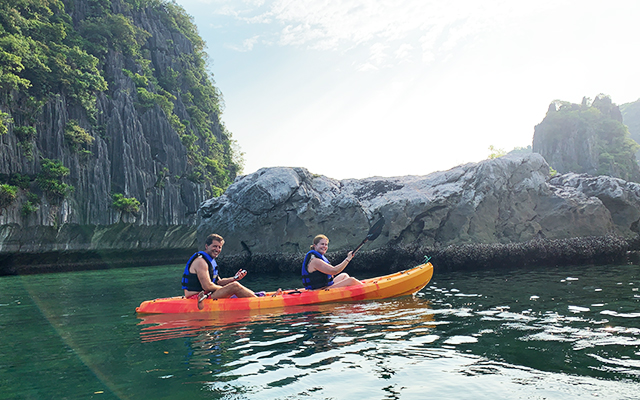
Travel Style
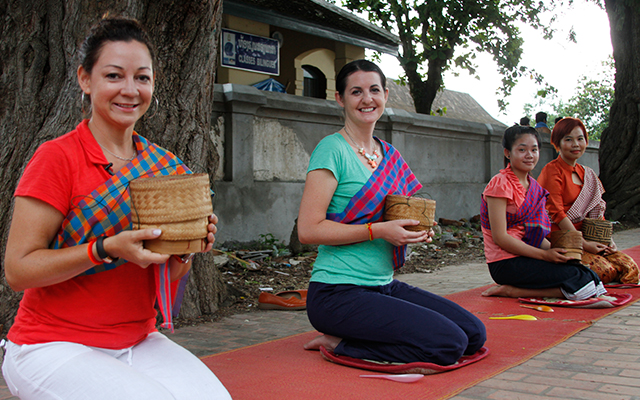
Culture and History

Culinary Tours
Popular destinations.

9 Itinerary Ideas for Traveling in Laos
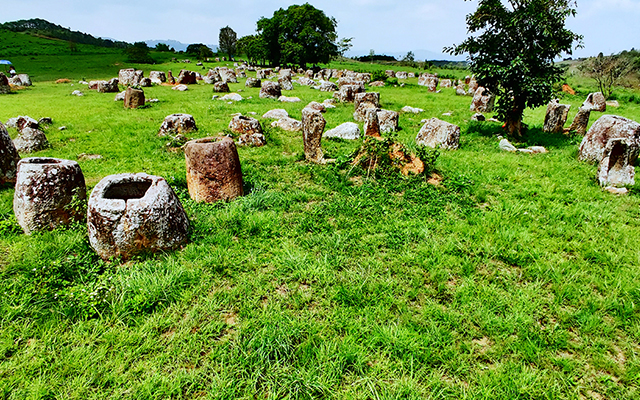
Why book with Us?
Laos Travel is not just a local travel company based in Luang Prabang, but a gateway to discovering the true charm of Laos and other Southeast Asian countries. Our mission is to provide you with an authentic travel experience that connects you intimately with the cultures of Indochina. Our expert local guides will share with you the stories, traditions, and perspectives of the local people, making you feel like a special guest on a unique vacation. We believe that authentic experiences have the power to transform lives, and we want to show you the best of Vietnam, Cambodia, Laos, Myanmar, and Thailand.
Best Selection
- Wide range itineraries of Laos & Indochina.
- Selected services with attention to detail.
- 100% private & guided tour with personal care.
Great Value
- Work directly to local suppliers.
- Always pay the best and lowest price.
- Updated all promotion & discount rate.
Trusted Payments
- Book via our secure payment platform.
- Enjoy flexible payment options.
- Trusted by thousands of satisfied travellers.
Sign up today and receive a customized itinerary based on your own travel style, budget… by our Laos Travel consultants
You have chosen a tour duration longer than 20 days. Please specify the exact number of days you want to travel in the message box below, so that we can have enough information and make a program for you. Thank you for your cooperation.
You have selected a number of travellers greater than 20. Please let us know the exact number of people in your group in the message box below so that we can quote you accurately. Thank you for your cooperation.
You have selected a number of travellers and duration greater than 20. Please let us know the exact number of people in your group and the exact number of days in the message box below so that we can quote you accurately. Thank you for your cooperation.
* To be sure you'll receive our itinerary (email failure case...)
(We'll get back to you within 8 business hours)
Laos Tours & Vacations

Travelers come to Laos to experience the rolling mountains, remote villages, tribal crafts and the magic of the Mekong.
They leave with so much more: irreplaceable memories of smiling locals, saffron-robed monks receiving alms and markets brimming with fresh produce. For those searching for authentic Asia , Laos doesn’t disappoint.
Our Laos trips
Let's create an exclusive trip for your group.
Laos tour reviews
Filter by rating
Real Thailand & Laos
Thailand & Laos Adventure
Articles of Laos
10 ways to get closer to nature with Intrepid
The top 7 destinations for travel in January 2024
Cambodia or Laos? Where to go on your next trip
Love elephants? Here’s why you should visit MandaLao Elephant Conservation
Your ultimate guide to the best food in Laos
Why Luang Prabang is perfect for every kind of traveller
Top 10 things to do in Luang Prabang
6 ridiculously underrated destinations in South East Asia
We also travel to
Laos at a glance, capital city.
7.5 million
(GMT+07:00) Bangkok, Hanoi, Jakarta
CALLING CODE
Electricity.
Type C (European 2-pin) Type A (North American/Japanese 2-pin) Type B (American 3-pin) Type E (French 2-pin, female earth) Type F (German 2-pin, side clip earth)
Learn more about Laos
Best time to visit laos.
Laos is a great place to visit at any time of the year as the weather doesn't vary much – it’s always hot and humid! The coolest time to visit is from November to January. This is also the driest time, and the main festival period, so it’s an interesting time to travel through Laos. The wet season runs from June to October. It rains frequently during this time, temperatures average over 85 degrees Fahrenheit and although some roads may be closed due to flooding, it is a great time for river travel. February to May is drier but hot, with temperatures climbing over 100 degrees Fahrenheit.
Culture and customs
The population of Laos is made up of more than 100 different ethnic groups, with each having their own distinct clothing, language, customs and way of life. The Lao Loum, who reside in the lowlands along the Mekong, make up the largest ethnic group. Smaller ethnic groups include the Hmong and Mien, both highland dwellers, and the Lao Thoeng, who prefer the lower mountains. Many tribes share cultural similarities with tribes from neighbouring countries, so it’s possible to see Chinese , Vietnamese , Khmer and Thai influences within the dress, food and arts of these people.
Generally, Laotians are known for their laidback lifestyle and calm, steady approach to life. With an emphasis on the simple pleasures of family, food and religion, most people from Laos remain closely connected to their family and village for a lifetime. Most Laotians live in villages, rather than the city, where the sense of community is strong and people are connected to their neighbours and friends. Visiting wats (temples) to make offerings and give alms to monks is a common part of daily life for most, with much respect and reverence reserved for monks.
Buddhist holidays and traditional festivals linked to harvest time and holy periods are commonly celebrated throughout the villages of Laos and are timed according to lunar cycles. With different dates each year, it can be hard to predict the exact timing of these local celebrations, but visiting one can provide great insight into the fascinating culture of Laos.
Eating and drinking
Intrepid believes that one of the best ways of experiencing a country is by eating! Whether you're sampling street food, savoring a cheap eat or indulging in a banquet, there are endless options to choose from wherever you are in the world.
Laotian cuisine draws on culinary traditions from its neighbors, so visitors will be able to taste the flavors of China, Thailand and Vietnam in the food of Laos.
Things to try in Laos
This spicy meat salad is considered the national dish of Lao. The delicious combination of minced beef, chicken or pork seasoned with chili, lime and mint, served with vegetables and sticky rice is a firm favorite with locals and travelers.
2. Khao Poon
This popular soup of meat, rice noodles, lime leaves, chili, garlic and fish sauce has a few variations. The version made with coconut milk makes the dish similar to a laksa, while the version without coconut milk is a lighter option.
3. Fresh fruit
The markets of Laos have a cornucopia of delicious fruits on offer, either fresh or whipped up in a juice. Pineapple, orange, watermelon, guava and banana are plentiful but why not try more exotic fruits like lychee, longan, rambutan or jackfruit?
The answer to Laos’ heat and humidity is a bottle of locally brewed Beerlao, best served cold at the end of a long day of exploring.
Geography and environment
Landlocked Laos is located in South-East Asia, bordered by China, Thailand , Vietnam, Cambodia and Myanmar . The topography of Laos is very mountainous, with much of the land being covered in forest and unsuitable for farming. Due to the mountainous terrain, Laos lacks a developed road network, with most locals living in small villages in the highlands, lowlands and along the Mekong River. Visiting Laos is like going back in time to when highways, traffic jams, mass transit systems and skyscrapers didn't exist. Visitors will be awed by the lush landscapes and stunning scenery, which is unlike anywhere else on earth.
History and government
Early history.
It's thought that Laos has been inhabited by people for thousands of years, although written evidence reveals that societies existed in the 9th century. Early society was based on agriculture and prior to the advent of Buddhism in the 16th century, people largely subscribed to animist beliefs and Shiva-worship, with archaeological evidence of this remaining today.
Like its neighboring countries, Laos was ruled by a series of kingdoms and was subject to invasion from surrounding forces from nearby domains. Europeans first arrived in the area in the 1600s, with the Dutch being the first to arrive. Despite this, the French have had the most European influence in the region. After enduring years of invasion and control from neighboring countries, Laos also had French rule to contend with in the late 1800s, when it became a French colony.
Recent history
Laos was controlled by Japanese forces during World War II, was declared an independent state in 1950 and gained full independence as a constitutional monarchy in 1954. The 1960s proved to be a devastating time for the people of Laos, with their nation gaining the dubious honor of being the most bombed country in the world. The United States bombed Laos extensively in an attempt to eradicate North Vietnamese sanctuaries, and sadly contemporary Laos is still dealing with huge amounts of unexploded ordnance (UXO) that is littered throughout the countryside.
A coalition government was set up in 1962, but in 1975 Laos became a Communist state when the king gave up his throne in favor of a president and prime minister being instated. During the late 1970s, many people of Laos fled to neighboring countries as refugees, as trade embargoes from foreign nations led to widespread poverty and disadvantage. By the 1990s, Laos had become a full member of ASEAN and foreign nations had lifted their trade embargoes, which allowed free enterprise to grow.
Top 10 outdoor experiences in Laos
1. waterfall wander.
Walking around peaceful Kuang Si Falls is a must-do for anyone traveling through the Luang Prabang area. Gentle cascades of water flow into turquoise pools creating a heavenly atmosphere that draws in both tourists and locals keen on some respite from the heat.
2. Play petanque
The French game of petanque is a lot like bowls and quite popular with the people of Laos. If you’re lucky enough to come across a group of kids playing this game in the streets, try to join in – it’s fun and simple to play, and free.
3. Beautiful biking
Hiring a bike and cycling past quiet villages, small farms and rice paddies is a great way to spend an afternoon in Laos, as you can take in stunning scenery, meet locals and get fit all at once.
4. Have a kick
Get amongst the action by watching and playing a bit of Sepak Takwar with locals in the parking lots, streets and parks of Laos. This game (which could be described as a hybrid between football and volleyball) is commonly played throughout South-East Asia, and the locals of Laos are no exception.
5. Power to the paddle
Paddling a kayak down the Nam Song River is an interesting and energetic way to get active and see the sights of Vang Vieng.
6. Get back to nature in Nam Ha
Home to a wide range of rare plant and animal species, this protected area is a hidden gem for nature enthusiasts, bird watchers and animal lovers. The challenging hike through forested terrain provides many rewards in the form of animal spotting and breathtaking scenic vistas.
7. Refreshing river swim
Taking a dip in one of Laos’ many rivers is the perfect way to escape the heat on a hot summer’s day.
8. Spiritual stroll
Taking a leisurely walk around Vientiane’s quirky Buddha Park (also known as Xieng Khuan) is akin to taking an active history, religion and art lesson. Full of Hindu and Buddhist sculptures that depict myths, legends and stories – the giant reclining Buddha is a highlight for most. Surrounding trees, gardens and flowers add to the serenity.
9. Cruise along an icon
Taking a riverboat journey down the Mekong is an iconic journey to savor. Sit on deck, catch the breeze and take photos of the surrounding landscapes as villages, people and mountains glide by.
10. Tough trek
Test your fitness against some of Laos’ mountains on a challenging trek. With so much mountainous terrain, there are many different options and places to hike all around Laos – bring your best hiking boots and a sense of adventure.
Apart from being a great place to pick up handmade wares, buy fresh produce and mingle with locals, the many markets of Laos are one of the most interesting places to take photos also.
It's a good idea to check with your local customs officials to ensure that you are able to bring certain items back into your home country. Australia and New Zealand generally have strict quarantine laws.
Things to buy in Laos
1. Textiles
Laotian weavers are responsible for crafting an impressive range of top-quality fabric wonders. Silk and cotton are the most common and with everything from handmade bags, scarves, cushion covers, placemats and linen on offer, it won’t be hard to go over your luggage limit here.
2. Saa paper
Saa paper (also known as Mulberry paper) is made from the leftover bi-products of the silk industry. You’ll be able to find Saa paper notebooks and stationery, cards and even gorgeous hanging stars in some of Laos’ markets and boutiques.
3. Hmong handicrafts
The Hmong people are famous for creating colorful handicrafts, which can be found in most markets around Laos. Hand-embroidered bedspreads, vibrant clothing and cotton dolls make meaningful global gifts for friends back home.
Festivals and events
Bun pi mai (lao new year).
One day just isn’t enough for Laotians to celebrate New Year - they need a whole three days! The festive period is characterized by water fights, street parties, feasts, laughing and smiles, as the past year’s troubles are washed away to welcome a new year of luck and prosperity.
Vientiane Boat Racing Festival
Entrants from all over Laos travel to Vientiane to compete in this big boat racing festival held at the end of Buddhist Lent. Food stalls and sideshows line the streets to entertain the thousands of people who gather on the river to watch the races.
Further reading
Laos travel faqs, do i need a covid-19 vaccine to join an intrepid trip.
Trips from 1 January 2023 onwards
From 1 January 2023, Intrepid will no longer require travelers to provide proof of vaccination against COVID-19 (excluding all Polar trips and select adventure cruises).
However, we continue to strongly recommend that all Intrepid travelers and leaders get vaccinated to protect themselves and others.
Specific proof of testing or vaccination may still be required by your destination or airline. Please ensure you check travel and entry requirements carefully.
Do I need a visa to travel to Laos?
You can get your visa in advance, but a visa can easily be obtained on arrival at most airports from around 35-50 USD (dependant on nationality). Please check with the consulate in your country for more details before you travel. If you are planning to get your visa at the airport we recommend bringing two passport-size photos.
Is tipping customary in Laos?
Tipping isn't mandatory or customary in Laos, but a tip of spare change or another small amount would be appreciated by restaurants, drivers and other service workers, especially if the service has been particularly good.
What is the internet access like in Laos?
Internet access is available easily in tourist areas like Vang Vieng, Luang Prabang and Vientiane, but is far less likely to be found in rural and remote areas.
Can I use my cell phone while in Laos?
You'll be able to use your cell phone in most urban areas of Laos, although rural and remote areas may not have network coverage. Ensure you have global roaming activated with your phone carrier before you leave home if you wish to use your phone while in Laos.
What are the toilets like in Laos?
You'll have to adjust to different standards of hygiene and sanitation whilst in Laos. The standard toilet is of the squat variety and this may take some getting used to, although western-style toilets can be found in large hotels and some tourist areas.
What will it cost for a...?
- Market snack = 7,000 LAK
- Large bottle of beer = 9,000 LAK
- Budget restaurant meal = 23,000 LAK
- High-end restaurant meal = 55,000 LAK
Can I drink the water in Laos?
Drinking tap water isn't recommended in Laos. For environmental reasons, try to avoid buying bottled water. Fill a reusable water bottle or canteen with filtered water. Ask your leader where filtered water can be found; some hotels we stay in may have drinking water available. It's also advisable to avoid ice in drinks and peel fruit and vegetables before eating.
Are credit cards accepted widely in Laos?
Major credit cards are generally accepted by large shops, hotels and restaurants in the city and tourist areas in the cities. However, they may not be accepted by smaller vendors such as small family restaurants, market stalls or in remote towns and rural areas. Make sure you carry enough cash for purchases, since credit cards aren't always an option everywhere in Laos.
What is ATM access like in Laos?
ATMs can be found in the cities of Laos, so withdrawing cash shouldn't be problematic. Smaller villages and rural areas may not have ATM access, so prepare for this before venturing too far from a city or major town.
What public holidays are celebrated in Laos?
View a current list of public holidays in Laos .
Do I need to purchase travel insurance before traveling?
Absolutely. All passengers traveling with Intrepid are required to purchase travel insurance before the start of their trip. Your travel insurance details will be recorded by your leader on the first day of the trip. Due to the varying nature, availability and cost of health care around the world, travel insurance is very much an essential and necessary part of every journey.
For more information on insurance, please go to: Travel Insurance
How do I stay safe and healthy while traveling?
From Australia?
Go to: Smart Traveller
From Canada?
Go to: Canada Travel Information
From the UK?
Go to: UK Foreign Travel Advice
From New Zealand?
Go to: Safe Travel
From the US?
Go to: US Department of State
The World Health Organisation also provides useful health information.
Does my trip to Laos support The Intrepid Foundation?
Yes, all Intrepid trips support the Intrepid Foundation. In fact, we make a donation on behalf of every traveler. Trips to Laos directly support our foundation partner, MandaLao Elephant Conservation .
MandaLao Elephant Conservation
MandaLao Elephant Conservation was the first non-riding elephant sanctuary in Luang Prabang, and they actively promote ethical elephant care and create jobs in communities in Laos. Donations from our trips help them care for rescued elephants at their sanctuary (including food and veterinary costs) while providing employment opportunities within the local community.
Intrepid will double the impact by dollar-matching all post-trip donations made to The Intrepid Foundation.

1 (855)-274-2274
Use our trip planner

phone number
PRIVATE TRAVEL
East Africa
North africa, southern africa.
South Africa
Through its extraordinary wildlife safaris, environmental majesty and ancient traditions, Africa is an epic storybook adventure. Experience unparalleled luxury via rainforest, coastline, dessert and mountain.
Southeast Asia
Intoxicatingly beautiful and rooted in custom, Asia reveals a heightened mysticism and generosity of spirit throughout each celebrated region. Discover centuries of culture and engaging hospitality with every step.
Cayman Islands
Dominican Republic
Puerto Rico
Saint Barthelemy
Turks & Caicos
Choose from an ever-increasing portfolio of luxury resorts and private islands along the azure waters of the Caribbean. Marine adventure, culinary perfection and complete seclusion all have a spot on the day’s agenda.
Central America
Soothing vistas and diverse eco-adventure await in Central America. See the sun rise over the rim of a volcano, roam the ruins of the Mayans, ride through nature conservatories and paddle through jungle mangroves.
Czech Republic
Mediterranean
Netherlands
Switzerland
United Kingdom
A multitude of environs– coast, country and city – make for a feast of diversity in Europe. The unique histories, gastronomic extravagance and cultural riches bring a deluxe profusion of Old World elegance.
United Arab Emirates
Middle East
Ancient cultures and modern pleasures coalesce in the fascinating nations of the eastern Mediterranean and those ringing the Persian Gulf. Encounter pockets of immense historical significance, refined opulence and breathtaking beauty.
North America
For enjoying a stateside sojourn, drinking in Canada’s natural wonders or exploring the magnitude of Mexico, this continent offers spectacular diversion. Find flavours to arouse every taste bud and an array of cultures to match.
French Polynesia
New Zealand
South Pacific
A world of exotic wonder awaits in Australia, New Zealand and the South Pacific islands. Drift through romantic nights and endless days of natural splendour, aquatic adventure, decadent resorts and epicurean delights.
Galapagos Islands
South America
From the beaches of northern Brazil to the southern tracts of Patagonia, this continent is the sum of a thousand parts. Experience ancient cities and heritage haciendas, volcanic hot springs and vibrant café cultures.
Explore a world of luxury
View all destinations
World Cruises
Expedition Cruises
River Cruises
Honeymoon Cruises
Family Cruises
Solo Cruises
Bridge Cruises
Alaskan Cruises
Antarctica Cruises
Asia Cruises
Bahamas Cruises
Caribbean Cruises
Danube River Cruises
European Cruises
Galapagos Cruises
Greece Cruises
Hawaiian Cruises
Iceland Cruises
Mediterranean Cruises
Mekong River Cruises
New Zealand Cruises
River Nile Cruises
South Pacific Cruises
World Cruise
Cruise Destinations
Whether you dream of island-hopping your way down Caribbean island chains, connecting the ocean waters with a Panama Canal cruise, or sailing into an exotic Mediterranean port at cocktail hour, our expert Travel Designers can curate the luxury cruise vacation of a lifetime.
Explore a world of luxury cruising
Search all cruise types
What to Expect on a Safari
Best Time for a Safari
Travel With a Purpose
Safari Blog
Press & Media
Testimonials
Safari destinations.
What can you expect from a Tully Luxury Travel safari? In a word: magic. You will witness extraordinary wildlife amid untamed beauty and unparalleled luxury. You will take a thousand pictures – and make a thousand more memories.
Luxury Safaris
View all luxury safaris
Private Island Resorts
Beach Vacations
Family Vacations
Luxury African Safaris
Luxury Cruises
Luxury Train Travel
Group Travel
Adventure Travel
Wellness Travel
Wine Travel
Food & Gourmet Travel
Vacation Types
View all vacation types
Tully Videos
Bespoke Magazines
The Art of Whispered Luxury with Barbara Muckermann
The Ocean State of Mind with Chris Austin
Exploring the Wilderness with Steve Smotrys
Luxury Defined by You: Designing the Most Exclusive Travel Experiences in the World
Luxury travel’s most inspiring stories told by its most celebrated icons. From wildlife experts, fashion designers and artists, to historians, chefs and more, this inspiring podcast series is designed to show you the world’s most exclusive travel experiences through the eyes of the people that know them best.
Explore our media
View all media
Why Travel With Us?
Conservation & Giving Back
River Cruise
Small Group
View all Preferred Partners
Our Partners
What is the Tully Difference? The most satisfying travel experiences are the ones that captivate and transform you as a person and that deepen your connection to the world around you. It is that belief that fuels our desire to create rewarding travel experiences for people who are passionate about discovering the essence and heart of a destination.
The Tully Difference
Home > Laos
Luxury Trips & Vacations to Laos
Ancient mysteries, incredible nature and an authentic culture consolidate fully into the living heritage that is Laos.
Slow and relaxing, Laos is a place to focus on the moment, tune into wellness, visit a spa or take in a yoga class.
In the heart of the Indochinese Peninsula of Southeast Asia lie the rolling hills, ancient temples, dense jungles and legendary landmarks of Laos, a land of unspoiled treasures. Nature enthusiasts, foodies, history buffs, outdoor enthusiasts – there is indeed something for everyone here. Central Laos and the capital city of Vientiane on the banks of the Mekong is a trove of Buddhist shrines and broad boulevards, where French colonial flair mixes with traditional Laos culture. The 3rd-century Buddhist temple of Pha That Luang in the middle of the city is a rare joy, completely clad in gold. In the well-preserved northern town of Luang Prabang, more than 30 palaces await your exploration, and in the south, 5th-century Hindu temple complex Vat Phou is a marvel to behold – both are UNESCO World Heritage sites. Laos is topographically diverse in the extreme, offering forests and mountains, underground caves, and rolling tea fields. This diverse landscape presents a marvellous opportunity for eco-touristic pleasures, as visitors hike the protected areas and traverse the hillsides. The diversity continues with the country’s dozens of different ethnic groupings and hill-tribe settlements – a crossroad of Asian cultures – with initiatives that help preserve the communities and their environments.
Related Destinations
The Cambodian people are among the world’s friendliest.... Read more
A country of many moods, Vietnam’s remarkable history is never far away: nor is its beauty!... Read more
China is a country of exquisite temple-topped mountains and villages that time forgot.... Read more
Private Travel Partners
The coveted relationships we have with our Global Travel Partners are second to none and allow us to offer you the extraordinary trips that you desire.

Meet our Laos Travel Designers
What is your approach to planning bespoke luxury travel? Listen - get to know who is traveling and what the desires are for this journey. And the advice – where to spend it to minimise travel time, and where to save it to maximise experience and enjoyment.
Gavin Crawford
Senior Travel Designer
What is your approach to planning bespoke luxury travel? Our role can be so important. Whatever we plan will make for lasting memories and can seal or bond families, love and friendly relationships. It is primarily about listening and understanding what a client wants; their needs, moods and family dynamics.
Saloua Rezgui
What is your approach to planning bespoke luxury travel? Every client is looking for something unique. I like to develop a great relationship with our clients so that I am able to customize a trip to their exact preferences. It’s incredibly rewarding to plan and deliver someone's dream trip.
Colleen Shiels
If you’re considering bespoke luxury private travel to Laos, let our expert Travel Designers make your vacation truly customized from start to finish. Having spent the last three decades travelling and experiencing the best luxury offerings first-hand, Tully Luxury Travel has an exceptional understanding of Laos. We have the contacts and the relationships in place to ensure your travel needs are met – milestone celebrations, romantic dinners, private tours, dietary requirements, special room-service requests – all the details curated in step with your every wish. In Laos, our Private Travel Designer have the insider information that will elevate your experience that much more. English-speaking guides lead private tours into the forests and through city streets. Tully can find you the most exciting luxury hotels, including the Belmond hilltop hotel La Residence Phou Vao in Luang Prabang or the Four Seasons Tented Camp in the Golden Triangle – the perfect pre- or post-cruise luxury experience. The time to start planning your next luxury vacation is now. Our private luxury travel service also allows us to secure the best amenities and VIP extras at no additional cost. That’s the Tully Difference. Talk with a Private Travel Designer and start planning your bespoke luxury Laos vacation today.
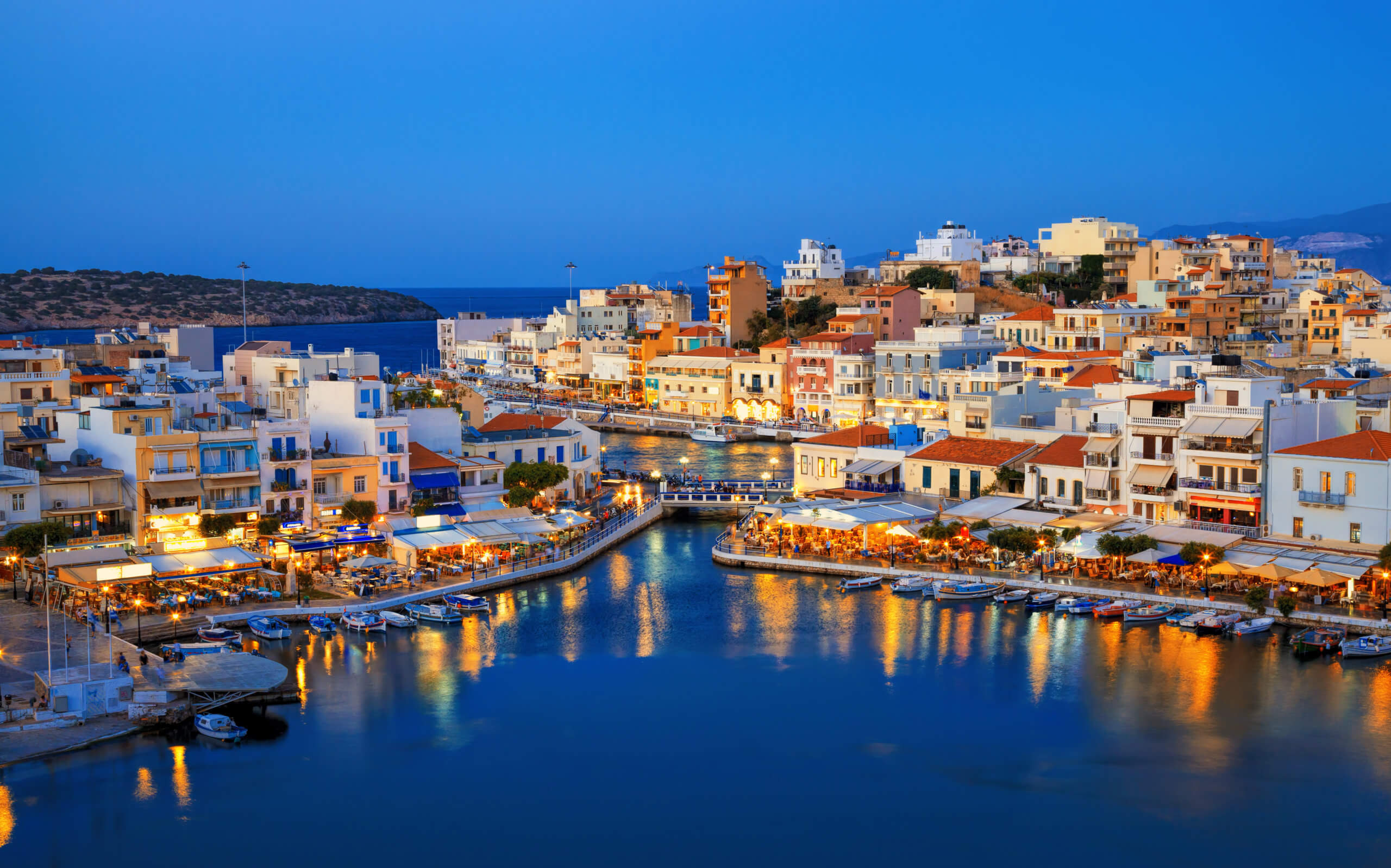
Established
Over 35 years’ experience and industry-recognition in curated luxury travel.
Exceptional Service
Work with our award-winning Travel Designers who have lived and travelled all over the world.
Enjoy exclusive access to the finest amenities and upgrades thanks to our preferred partnerships.
Making travel dreams a reality with our unparalleled customer service, attention to detail and expertise.
Award Winning…
Throughout the years, Tully Luxury Travel has been recognized as a top producing agency by virtually every luxury cruise line and hotel property.

More Laos Inspiration
5 most unique river cruises.
Travel Tips | Cruise
Set sail on one of these river cruises, and you may never want to come back! ...Read more
A Tully Review: Cathay Pacific, Hong Kong, Naka Island (Thailand) & Macao Hotels
Destination | South-East Asia
Take a trip with us through some of China and South-East Asia's best hotels. ...Read more
Get to know Laos
Destination | Laos
...Read more
Why choose us? We believe our award-winning service, more than three decades of experience, and first-hand knowledge of luxury travel in every part of the world shines through in the wonderful testimonials that we receive every day from our valued clients who return year after year.
Average Cutomer Rating:
'They know how to bring your dream vacation to life!!'
I have been working with Tully Luxury Travel for years and love their attention to detail. They seem to know exactly what their clients needs are.
'Exceptional travel company'
I have been with Tully luxury travel almost 20 years and Diana Wehrle has been my advisor all along. I find them very professional, efficient and willing to go the extra mile.
Tully Luxury Travel | Inquiry Form
Make an inquiry.
- 1 (855)-265-0890
- First name * The first name of the user.
- Last name * The last name of the user.
- Email * The email of the user
- Phone number * The phone number of the user
- How did you hear about us? * Please select Google Search E-newsletter Newspaper Condé Nast Traveller Architectural Digest Bespoke Experiences Magazine Social Media Referral Other A drop-down selector for the users to select how they heard about Tully Luxury Travel.
- Land Vacation
- Cruise Vacation
- Destination * Please select Argentina Auckland Austria Bahamas Barbados Belgium Belize Bhutan Blue Mountains Botswana Brazil Cairns Cambodia Canada Chile China Christchurch Colombia Costa Rica Czech Republic Denmark Ecuador England Ethiopia Egypt Far East Finland France Germany Greece Guatemala Hawks Bay Iceland India Indonesia Ireland Israel Italy Japan Kaihoura Kangaroo Island Kenya Laos Madagascar Maldives Malta Mauritius Melbourne Mexico Middle East Morocco Myanmar Namibia Nepal Netherlands Norway Peru Portugal Queenstown Russia Rwanda Scotland Seychellesa Singapore South Africa South Asia South East Asia Spain Sri Lanka St. Lucia Sweden Sydney Taiwan Tanzania Tasmania Thailand Turkey Turks and Caicos U.S.A Uluru Region United Arab Emerates Vietnam Whitsundays World Cruise Zambia Zimbabwe A drop-down selector for the users to select a destination.
- Travel dates MM slash DD slash YYYY The check-in date of the user.
- Check-out MM slash DD slash YYYY The check-out date of the user.
- Trip notes Any notes of the user.
- Privacy consent * I agree with the privacy statement *
- Subscription consent Tick if you would like to receive emails with travel inspiration, offers & exclusive event invites
- Email This field is for validation purposes and should be left unchanged.
A Step-By-Step Guide To Applying For A Visa Online For Traveling To Laos
- Last updated May 01, 2024
- Difficulty Intemediate
- Category Travel

Traveling can be an exciting and fulfilling experience, but sometimes the logistics of obtaining a visa can seem daunting. For anyone planning a trip to Laos, a step-by-step guide to applying for a visa online can be a valuable resource. With this guide, navigating the visa application process becomes a breeze, allowing travelers to focus on the adventure that awaits them in this beautiful Southeast Asian country. Whether you're planning a short visit or a longer stay, this guide will provide all the necessary information and instructions to successfully apply for a visa online, ensuring a smooth and hassle-free journey to Laos.
What You'll Learn
Introduction to the online visa application process for laos, step-by-step guide on filling out the online visa application form, required documents and information for applying for a visa online, tips for a smooth online visa application process in laos.

If you're planning a trip to Laos, you may be wondering how to apply for a visa online. Applying for a visa online is a convenient and efficient way to obtain your travel authorization without having to physically visit an embassy or consulate. In this article, we will guide you through the process of applying for a visa online for Laos.
The first step in applying for a visa online is to determine which type of visa you need. Laos offers several types of visas, including tourist visas, business visas, and work visas. You should carefully research the visa requirements and determine which type of visa is applicable to your situation.
Once you have determined the type of visa you need, you can begin the online application process. To apply for a visa online for Laos, you will need to visit the official website of the Lao government or the website of the Lao embassy or consulate in your country. Look for the visa application section on the website and select the online application form for the visa type you require.
When filling out the online application form, you will be required to provide personal information such as your name, nationality, passport details, and contact information. It is important to ensure that all the information you provide is accurate and matches the details on your passport. Any discrepancies may result in delays or even the rejection of your visa application.
After completing the online application form, you will be required to upload certain documents to support your visa application. These documents may include a scanned copy of your passport, a passport-sized photograph, proof of travel insurance, and proof of accommodation in Laos. Make sure that all the uploaded documents meet the specifications provided on the website to avoid any issues with your application.
Once you have completed the online application form and uploaded the necessary documents, you will be required to pay the visa fee. The fee can usually be paid online using a credit or debit card. After the payment is successful, you will receive a confirmation email with a reference number. It is important to keep this reference number safe as you may need it for any future inquiries or to track the status of your visa application.
Processing times for online visa applications can vary, so it is recommended to submit your application well in advance of your travel date. It is also a good idea to check the website for any additional requirements or updates regarding the visa application process.
In conclusion, applying for a visa online for Laos is a convenient and straightforward process. By carefully following the steps outlined in this article, you can successfully apply for your visa and ensure a smooth travel experience. Remember to double-check all the information you provide and submit all the required documents to avoid any delays or complications with your visa application. Happy travels!
Understanding the Visa Requirements for Travelers Coming to the US
You may want to see also
Applying for a visa to Laos has never been easier, thanks to the online visa application system. Instead of going through the traditional route of visiting an embassy or consulate, you can now apply for a visa from the comfort of your own home. In this step-by-step guide, we will walk you through the process of filling out the online visa application form for Laos.
Step 1: Visit the official website
The first step in applying for a visa online is to visit the official website of the Laos Ministry of Foreign Affairs. You can find the website by doing a quick search on any search engine. Make sure to visit the official website to avoid any scams or fraud.
Step 2: Select the appropriate visa type
Once you are on the official website, you will need to select the appropriate visa type. Laos offers various types of visas, including tourist visas, business visas, and transit visas. Choose the visa type that best suits your purpose of travel.
Step 3: Fill out the online application form
After selecting the visa type, you will be directed to the online application form. The form will require you to provide personal information such as your name, date of birth, passport details, and contact information. Make sure to enter the information accurately and double-check for any errors before submitting the form.
Step 4: Upload supporting documents
In addition to the application form, you will also need to upload supporting documents. The required documents may vary depending on the visa type, but generally, you will need a copy of your passport, a recent photograph, and proof of travel or accommodation arrangements. Make sure to have these documents ready in digital format before starting the application process.
Step 5: Pay the visa fee
Once you have filled out the application form and uploaded the supporting documents, you will be redirected to the payment page. The visa fee can be paid online using a credit or debit card. The exact amount will depend on the visa type and duration of stay. Make sure to keep a record of the payment confirmation for your reference.
Step 6: Wait for the visa approval letter
After submitting your application and completing the payment, you will need to wait for the visa approval letter. The processing time may vary, but it is usually within a few business days. The approval letter will be sent to your email address, so make sure to provide a valid and regularly checked email.
Step 7: Print the visa approval letter
Once you receive the visa approval letter via email, you will need to print it out. The approval letter serves as your visa while traveling to Laos. Make sure to have a physical copy of the letter with you at all times during your trip.
Step 8: Present the visa approval letter upon arrival
Upon arrival in Laos, you will need to present your visa approval letter at the immigration checkpoint. The immigration officer will verify the letter and stamp your passport, allowing you entry into the country. Make sure to have your passport and the printed visa approval letter readily available during the immigration process.
Applying for a visa online has made the process much more convenient and efficient. By following this step-by-step guide, you can fill out the online visa application form for Laos with ease. Remember to double-check all the information before submission and keep a record of the visa approval letter for a hassle-free travel experience in Laos.
Traveling to Bulgaria with a Schengen Visa: What You Need to Know
When it comes to traveling to Laos, applying for a visa online is an efficient and convenient option. Not only does it save time and effort, but it also allows you to complete the application process from the comfort of your own home. To successfully apply for a visa online, you will need to gather the following documents and information:
- Passport: Make sure your passport is valid for at least six months beyond your planned date of entry into Laos. You will need to upload a clear and color scan of your passport's bio page during the online application process.
- Photo: Prepare a recent passport-sized photo that meets the required specifications. It should be in color, have a white background, and show a clear view of your face.
- Travel Itinerary: Provide details about your travel plans, including your intended dates of entry and exit from Laos, as well as the cities or regions you plan to visit. Make sure your itinerary is well-planned and organized.
- Purpose of Visit: Clearly state the purpose of your visit to Laos. Whether you are traveling for tourism, business, or any other reason, provide a concise explanation of your intentions.
- Employment and Education Details: Provide information about your current employment and educational background. This includes your job position, company name, address, and contact details, as well as details of your educational qualifications.
- Accommodation Details: You will need to provide the name and address of the place you plan to stay in Laos. It can be a hotel, guesthouse, or the address of your sponsor if applicable. Ensure the information is accurate and up to date.
- Financial Means: Provide information about your financial means to support your stay in Laos. This includes details of your bank account, such as the account number, bank name, and bank statement indicating your financial stability.
- Health and Travel Insurance: Depending on the type of visa you are applying for, you may be required to provide proof of travel and health insurance coverage. Ensure that your insurance policy covers Laos and meets the requirements specified by the embassy or consulate.
- Contact Information: Provide accurate contact details, including your email address and phone number. This information is crucial for receiving updates about your visa application status.
Once you have gathered all the required documents and information, you can proceed to the online visa application portal for Laos. Fill in the necessary sections, upload the scanned copies of your documents, and double-check all the information before submitting your application.
Applying for a visa online has simplified the process for travelers, granting them the convenience of acquiring a visa from anywhere in the world. By following these steps and ensuring the accuracy of your application, you are on your way to obtaining your visa hassle-free and exploring the beautiful country of Laos.
A Step-by-Step Guide to Applying for a Canada Visa with a Refugee Travel Document
Laos is a beautiful country known for its rich culture, stunning landscapes, and friendly people. If you're planning to visit Laos, you will need to apply for a visa in advance. Luckily, Laos offers the convenience of an online visa application process, making it easier for travelers to obtain their visa before arrival. To ensure a smooth application process, here are some helpful tips:
- Gather all the required documents: Before starting the online visa application, make sure you have all the necessary documents ready. Typically, this includes a valid passport with at least six months of validity, a recent passport-sized photograph, and proof of onward travel such as a return flight ticket.
- Visit the official website: To apply for a visa online, visit the official website of the Lao Ministry of Foreign Affairs. Make sure you are on the correct website, as there may be other unauthorized websites that offer visa services.
- Choose the right visa type: Laos offers different types of visas depending on the purpose of your visit. Some common visa types include tourist visas, business visas, and visas for visiting relatives. Select the visa type that is appropriate for your trip.
- Fill out the application form: Once you have selected the correct visa type, you will need to fill out the online application form. Provide accurate and truthful information, as any inconsistencies may lead to delays or even a visa rejection.
- Upload supporting documents: During the application process, you will be prompted to upload the necessary documents. Ensure that the scanned copies are clear and legible. It's a good idea to have electronic copies of your passport and other supporting documents readily available.
- Pay the visa fee: The online visa application process in Laos requires payment of a visa fee. The payment is usually made using a credit or debit card. Double-check the payment details and ensure that you have sufficient funds before proceeding with the payment.
- Review and submit the application: Before submitting the application, carefully review all the information you have provided. Check for any errors or missing information. Once you are satisfied with your application, submit it electronically.
- Wait for visa approval: After submitting your application, you will receive an acknowledgment receipt. The processing time for the visa can vary, so it's important to apply well in advance of your travel date. Check the status of your application periodically on the official website.
- Print your visa: If your visa application is approved, you will receive an e-visa by email. Print a copy of the e-visa and carry it with you during your trip to Laos. It's also a good idea to have a digital copy on your phone or other electronic devices.
- Follow immigration procedures upon arrival: When you arrive at the airport in Laos, follow the immigration procedures as instructed. Present your passport, printed e-visa, and any other required documents to the immigration officer. They will stamp your passport and grant you entry into the country.
By following these tips, you can ensure a smooth and hassle-free online visa application process for your trip to Laos. Remember to prepare all the necessary documents, fill out the application accurately, and stay updated on the status of your application. With your visa in hand, you can relax and enjoy your time exploring the wonders of Laos.
Traveling to Canada with a Schengen Visa: Everything You Need to Know
Frequently asked questions.

- Karli Trujillo Author Editor Reviewer

- Elani Piper Author Editor Reviewer
It is awesome. Thank you for your feedback!
We are sorry. Plesae let us know what went wrong?
We will update our content. Thank you for your feedback!
Leave a comment
Travel photos, related posts.
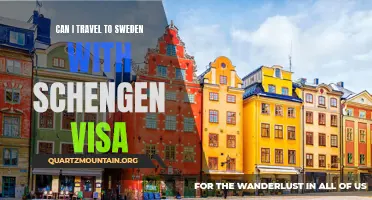
Understanding Travel to Sweden with a Schengen Visa
- Mar 22, 2024
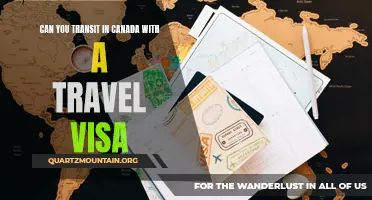
Navigating Travel Visas: Can You Transit in Canada with a Travel Visa?
- Mar 27, 2024
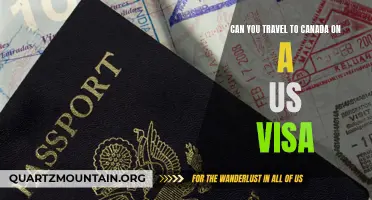
Exploring Canada with a US Visa: A Guide to Cross-Border Travel
- Mar 28, 2024
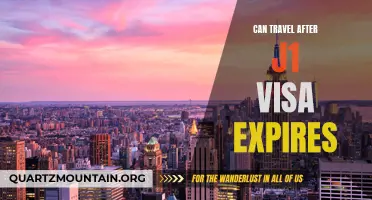
Exploring Travel Options After J1 Visa Expiration
- Mar 25, 2024
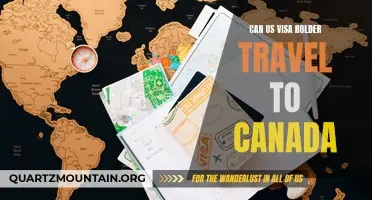
Can US Visa Holders Travel to Canada? Everything You Need to Know
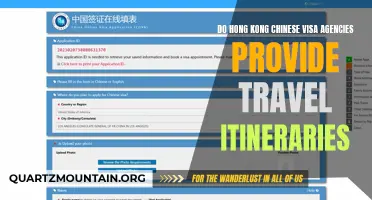
Exploring the Convenience of Travel Itineraries Provided by Hong Kong Chinese Visa Agencies
- Apr 01, 2024

10 Cheapest Countries That You Can Travel To Affordably In Asia
- Asia offers incredibly affordable destinations for budget travelers, where the cost of living and attractions are surprisingly cheap.
- Travelers can enjoy affordable vacations in countries like Vietnam, Indonesia, the Philippines, Thailand, India, Laos, Nepal, Mongolia, Cambodia, and Sri Lanka.
- By visiting during the cheaper times of the year, like September to November in Vietnam or April to October in Cambodia, travelers can save even more money on their Asian adventures.
Asia is an incredible place for budget travel, as even its most popular destinations can be surprisingly cheap. Usually, the most expensive cost travelers will have to deal with when visiting the most affordable countries in Asia is the cost of flight tickets. Once in one of these countries, explorers will most likely never complain about price, especially when visiting during the cheapest times of the year to travel to Asia.
For vacationers on a budget seeking the most affordable destinations in the world, Asia is where it's at - and the continent doesn't fall short on beauty, culture, and incredible experiences for every type of traveler. So, wondering where to travel for cheap in Asia? Look no further; here are the cheapest countries to visit in Asia, where travelers don't have to break the bank to live the dream.
Related: 10 Surprisingly Beautiful But Also Surprisingly Cheap Destinations
Vietnam has long been one of the cheapest destinations in the world for budget travelers. Despite being home to so many incredible spots like the dramatic Ha Long Bay and Ho Chi Minh City, this Asian country promises to be easy on tourist pockets.
While it really depends on individual spending habits, budget travelers can enjoy a fun-filled day in Vietnam from $40 to $50 .
- Cheapest times to visit Vietnam: September to November, April to June
Indonesia is one of the cheapest Asian countries to visit on vacation, and there are even plenty of free things to do, so travelers will have a lot of opportunities to save money while having amazing adventures. Also, many attractions in Indonesia that require payment only set visitors back a few dollars.
Of course, there are expensive attractions in this country, but visiting them and spiking the budget is the choice of the tourist involved. Overall, $20 can cover the cost of accommodation, food, transport, water, and other daily requirements that travelers may need in Indonesia in a day.
- Cheapest time to visit Indonesia: October to April but avoid Christmas and New Year
Philippines
The Philippines is one of the most beautiful yet cheap countries in Asia to visit, and it offers an abundance of things for tourists to see and do - with most being very affordable. Also, the cost of living in the Philippines is low, especially for those armed with foreign currencies like Dollars, Euros, or Pounds. In the Philippines, there are good hotels that cost as little as $10, and some street food can be as cheap as $5.
Transport here is also cheap, as train fares are usually between $1 and $2, although it can be higher depending on the distance. Bus tickets are higher but still cost between $2 and $10. Overall, expect to spend between $40 and $80 a day in the Philippines . Although it can be much less depending on the level of frugality of the traveler involved.
- Tip to visit the Philippines affordable: Avoid traveling in April and May, and late December and early January
In Thailand, visitors can choose how cheap or expensive they want their vacation to be. Thailand can be explored on a budget , and it has plenty of attractions that are quite literally free, and visitors will only spend between $0.50 and $2 on trains in many major cities daily.
In addition, food in Thailand is very affordable, with some costing as little as $1. Plus, the country has many budget hotels, some of which cost $10 or less. What's more, Bangkok is one of the few places in the world where one can get a good hour-long massage for less than $10.
Overall, a great day in Thailand can cost around $75 , although many travelers can still live the dream for less than $30. With such affordability, it’s easier to tip in Thailand, as tourists usually have a lot of spare money in their pockets.
- Cheapest time to visit Thailand: July to September
Related: This Is How Far You Can Get With $100 USD In Thailand
India is so massive that it has budget options for everybody, and for those seeking affordable travel destinations in Asia, this country is a haven. Everything from food to bus fares, tickets to attractions, and accommodation can be ridiculously cheap in India.
Some budget travelers can cut their daily costs in India to as little as $30 a day or less when taking cheaper transport options like trains.
- Cheapest time to visit India: June to September
Laos is the most underrated country in Asia , but that’s not because it does not have anything to offer tourists. It’s just that it is overshadowed by more popular options like Cambodia, Vietnam, and Thailand. But popularity aside, Laos has so many incredible things to offer, from beautiful natural attractions like Kuans Si Caves & Waterfalls to cultural and historic attractions like the ancient temple of Wat Phu.
The country is also super mild on the pocket, and when that is added to a smaller population and lots of things to see and do, Laos becomes one of the best places to visit in Asia on a budget. This country has hotels offering a good night's sleep for as little as $5, and food is very affordable, as it usually costs between $1 and $5. In summary, with careful planning, travelers can enjoy a memorable vacation in Laos with a daily budget of less than $20 .
- Cheapest time to visit Laos: March to June (hottest time of the year in Laos) and July to October (rainy season)
Related: Guide To Laos: What People Wish They Knew Before Visiting
Nepal is one of the most popular Asian destinations on the list, as it is home to Mount Everest and several other towering mountains that attract about a million people yearly. Besides mountaineering, Nepal also offers other thrilling experiences like cave exploration, wildlife watching, and ziplining.
When it comes to cost, Nepal is another one of the cheapest places in Asia to visit, with daily spending hanging around $30 to $40 . However, that is if Mount Everest or one of its summits is out of the budget because it costs a lot of money (and time) to summit a mountain . While the average cost in Nepal is a little bit higher than the other cheap vacation destinations in Asia, it definitely is affordable compared to other parts of the planet with world-famous attractions.
- Tip to visit Nepal Affordably: Avoid the high season (October - November)
Mongolia invites visitors to come enjoy some of the most unique adventures in Asia with little money. This country finds itself among the cheapest vacation destinations in Asia to visit, with modest accommodations ranging from $10 - $20.
By Vietnam or Thailand standards, that’s expensive, but when compared to other countries where the same meal or accommodation can cost several dollars more, Mongolia is affordable. Realistically, budget travelers should expect to spend about $30 to $50 a day in this country, which includes accommodation, food, water, and transport.
- Cheapest time to visit Mongolia: November to March
Cambodia is home to some of the most interesting attractions in the world, one of which is Angkor Wat - a Buddhist temple considered the largest religious structure in the world. But even with so many points of interest spread out across this country, it has remained one of the most affordable countries in the world to visit on vacation.
Whether it's food, transport, or accommodation, most things in Cambodia are fairly cheap, especially for foreigners coming with stronger currencies. Besides the few hundred dollars that one will inevitably spend on flights, visitors only need about $30 to have a good time in Cambodia in a day.
- Cheapest time to visit Cambodia: April to October
Sri Lanka is one place where travelers will never complain about prices but will rather be shocked by how cheap it can be to travel the country.
With less than $40 a day , travelers can live the dream in Sri Lanka, especially when visiting in the off-season (December to April) when things are so budget-friendly that it almost feels like a steal.
- Cheapest time to visit Sri Lanka: December to April

- > Europe
- > Russia
- > Moscow
Is Moscow Tap Water Safe To Drink?
Yes! Generally Safe to Drink*
Table of Contents
Can you drink tap water in moscow.
Yes, tap water is drinkable.
Tap Safe includes data from many publicly available sources, including the WHO (World Health Organization), CDC (Center for Disease Control), and user submitted databases, but unfortunately there's not enough data about Moscow.
To see user submitted ratings of the water quality for Russia, see the "User Submitted Ratings" box on this page.
Moscow Russia, tap water is safe for drinking . Treatment plants use sodium hypochlorite , which is more reliable than chlorine. A regular inspection ensures people who drink it won’t be ill. The water leaves the treatment plant is safe to drink . However, locals tend to boil water before drinking. Nowadays, many Russian drinks filtered water . Their concerns will be the residential pipeline in the place they live or stay.

The Mosvodokanal (Water services company), the state group that monitors the drinking water in Moscow, confirms that water is clean . The company produces high-quality drinking water and a safe sewage system to 14.2 million inhabitants of the Moscow capital. Also, according to specialists, tap water in Moscow meets all the requirements that have been recommended by Russia’s chief state sanitary inspector. They deny many stories created by the various aqua filters. But if you have a sensitive stomach as tourists, we advise that you only consume bottled water.
Source of Water in Moscow, Russia
Tap water from Moscow, Russia , comes from surface water and groundwater. The three primary sources originate from the Moskva river , Volga river , and Vazuzskoye Hydrotechnical System.
The Moskva river supplies up to 60% of the capital needs of water. While the Volga river provides 40% of the water supply in Moscow, the Vazuzskoye serve as a reserve source incase of water crisis or contamination on the two prime surface water source.
Treatment and sanitation start with coagulation . This method includes the addition of compounds that improve the clumping of fines into larger floc so that they can easily separate from the water. Then they exposed water to UV light that known to kill bacteria and now will pass through water filtration of sand a natural way to filter water without chemical compounds.
Moscow Tap Water
The famous Moscow tap water supplied by the authorities contained high levels of pesticides, etc. These levels have been regularly overcharged and sometimes unknowingly overcharged in some areas. You can imagine that when this happens, you could be suffering from long-term health problems. The average life expectancy in Moscow is around eighty or ninety years. These figures do not include the death rate from illnesses, which, unfortunately, almost one-third of the population suffers from Moscow.
Recently some companies have started selling packaged Moscow tap water at various price ranges so that people can easily buy a bottle and take it with them to their home. It seems that the people of Moscow have become much more interested in these bottles, and many believe they are safer than the local bottled water from the supermarket or the vast range of similar brands sold in stores across the globe. Yet they are pretty useless and even more expensive than the ordinary local supermarket brands. Many believe that these brand-name companies are only making money from their consumers by deceiving them. However, it is also worth remembering that the destination Moscow tap water does not come from any such reliable suppliers and is certainly not free of harmful chemicals.
It is essential to realize that not all bottled water from Europe or anywhere else in the world is safe to drink. If you are traveling to Moscow, you should ensure that you have a fully qualified professional inspect the water before you drink. The same applies if you stay at a hotel in the city, as many hotels often have a plumbing problem. If your drinking water is contaminated, you may have absolutely no choice but to leave the hotel and find somewhere else to stay. In the past, I have personally seen people who have lived for months in a small town without any water supply and were forced to use a simple tap water filter to bring some life back into their lives. Moscow’s people indeed face difficult times, but the fact remains that they need our help more than ever to keep their city clean and healthy.
Water in Moscow
Water in Moscow is something that people take for granted, but the fact is that there are no hotel amenities in the city that can be called genuinely luxurious. While there are plenty of posh cafes scattered throughout the city and a plethora of excellent eating and drinking options, you will have to get your drinking water from a faucet at the end of the day, a tap or bottled one. This can be a pain because even if you go on a perfect vacation, you might still not be able to take along your water bottle, so here are some other things that you should make sure to pack before you travel to Russia. Your water supply!
Water is essential when you are visiting any country, let alone one as unique as Russia. As such, you will want to get a hold of bottled water while you are there, and at many of the hotels, you will also find a water filter attached to the tap. This way, you can have clean and safe water without having to worry about getting sick from water that may not necessarily be from a tap that you drink. It is also an excellent idea to have an ice cooler with you, to keep refreshments for yourself and any friends or family you may meet. If you stay in a guest house, try to get a refrigerator, too – cold drinks are a must!
There are also plenty of hotels in Moscow that offer Wi-Fi internet access, so make sure to bring this along with you, too. A hotel water purifier may seem like a small thing to have on hand, but you never know when you might need it, especially in the heat and humidity that the region has to deal with. In addition to taking these precautions, there are other hotel amenities that you can find in many of the more excellent hotels in Moscow and more budget hotels. For example, many cheaper hotels will offer you hot tubs, which are incredibly relaxing and enjoyable after a hard day at work. You can even get a “couple” package so that you can enjoy a romantic evening together after returning home from a long day of work.
Moscow Bottled Water
The Moscow Bottled Water is now one of the leading brands of Russian bottled water. It has its unique name and brand identity due to the strict control of production. Only the best quality minerals, herbs, and plants are used to produce every bottle of this Moscow bottled water. This brand is known all over the world for its quality of water.
The Moscow Italian Wine has also become a famous brand among people across the world. Its unique name was based on two words -” Moscow” and “Italian wine.” It was created by the legendary Russian writer Alexey Pshchinin. Since one day, he put the words “Moscow Italian Wine” in the bottle of his famous Russian brand and started selling it to customers across the world. It is considered one of the finest Russian wines that are available.
Murano Italian Wine is one of the top-selling brands that has a vast number of fans. It has been a part of the Russian retail market since 1960 when it began as a small business. It has expanded its brand name to sell various products such as wine, mineral water, fruits, and confectionery. Due to its huge success, the company now produces different types of Russian wines, chocolates, juices, and Cologne from its vast inventories. Now it is available in almost all parts of the world, even in some parts of the United States.
Moscow Drinking Water
Do you want to know about the quality of Moscow drinking water? Are you worried that you are not getting enough of it? Then you need to know what the quality of Moscow’s drinking water is. It would be best if you also found out what you can do to stop it from happening to you and ensure that your family’s health is not in danger. Here are some tips to help you with this:
The first thing that you should know is that there are different kinds of purification methods used for the purest drinking water. There are many different ones. Even if you live in one of the most developed cities globally, you still have to be aware that you have to deal with the pollution in your city. The water that comes from the tap may be clean, but you have to contend with many impurities when you mix it with municipal water. Therefore, you need to make sure that you purchase a good filtration system that will allow you to drink safe water without worrying about the quality.
Moreover, you need to know that some water purification plants have been known to produce horrible drinking water. There have even been cases when people end up getting ill because they drink contaminated water. In addition to this, you also need to make sure that the government has approved the water filter you buy. Without this, you might end up with a machine that will give you nothing but a few contaminants.
Moscow Water Supply
Moscow is one of the largest cities in Russia and the capital of the Russian Federation. The city was developed as a steam mining center during the Golden Ages of the 17th century. Today, the city is one of the fastest-growing cities in Russia, with over 6 million. The Moscow water supply has long been a problem because of water pipes’ issues in the city. However, it has become much better today as a result of technological advances.
Water is essential to life in the city, and it is also crucial for the health of its inhabitants. Moscow has always had an inadequate water supply record, which has been the case since the Revolution. However, the situation has changed today, and Moscow has one of the world’s best water supply systems. Water is also distributed to all of the apartment complexes and townhouses before being distributed to individual homes. It is also brought in on trucks and trains from the city’s main water supplies.
Water is a valuable commodity, and the city does not want to see any cut in its water supply. Therefore, when a new water line is installed, it is done with great care and attention. When the water supply is affected due to natural calamities like floods and earthquakes, Moscow gets involved more than other cities. However, it does not affect the city’s general population, as the people of Moscow can drink from any tap no matter where they are located. Also, as long as there is sunlight in the city, water in bottles will be available for the general public.
Moscow Water Quality
Moscow has a lot of industrial, commercial, and residential growth going on. Since these areas are populated with people, a lot of waste is being created that needs to be handled. Moscow water quality is improving slowly but surely, and it is expected that it will be better in the future. Water is an essential commodity, and everyone needs it to survive. Moscow is just a small city. The population is still growing, so the need for good water quality will not be quickly replaced as it did in the past. Nevertheless, there are some methods you can use to ensure that you are drinking at least what is considered to be good quality water.
If you have friends or relatives living in a city known for poor water quality, you may want to think about helping them out by donating your share to a charity that gives clean water to residents. Many charities give away free water to people who cannot afford to buy bottled water, although this does little good if the water source is unreliable. You could also try contacting your city to see if they have any programs that allow you to help out. They often need people to run surveys and provide information about their water supply quality, although the government does not usually support these kinds of programs.
You can help improve the quality of the water in your home by installing a kitchen countertop filter that takes out the contaminants. There are many types of filters available, and you may find that the simplest ones will work best in your house. Some of these filters remove just a few particles, leaving the tap water’s essential minerals and vitamins. This may help overcome the mineral deficiencies.
Moscow Water Treatment
Moscow water treatment equipment has become a prevalent method of filtration and purification among the Moscow residents. Many people are starting to use these systems to filter their water and be confident that their water is clean enough for consumption by their families. The systems are becoming more popular as more people realize what they have been doing by allowing city water to pollute their drinking water. This has caused many health problems for many Russian citizens. City water cannot be deemed healthy when it contains such contaminants as pesticides, lead, benzene, bacteria, radioactive isotopes, synthetic drugs, and other harmful chemicals. Even the water from wells used for personal consumption must be filtered or cleaned at the source to be deemed safe for drinking.
The main reason these systems are getting more popular is that they are cost-effective and produce far healthier water than what you can get from your tap. There is a wide range of water treatment equipment available on the market today, ranging from portable units that can be kept in apartments and houses and huge water softening machines that can be installed in water pipes throughout a city. These systems’ prices depend on many factors, such as the size of the system, the kind of filter used, and the number of filter stages that need to be installed in the water purification equipment.
The water quality that comes out of your tap can sometimes depend on whether you have installed the correct type of water treatment equipment. If you suspect that your water supply contains any impurities such as lead, it would be wise to contact a water purifier that can help to remove the traces of this toxic metal. Once you have made your purchase, it would be a good idea to read about the brand and model you are using to make the most of your investment. Water purifiers have become an essential part of our lives, and it is crucial to know precisely what you are purchasing to make sure that you are getting a quality product.
Other links:
- Moscow, Russia Travel Guide by N.G.
- 17 Top Tourist Attractions in Moscow
- https://www.lonelyplanet.com/russia/moscow/health
What do people in Moscow think about the tap water?
While brushing your teeth with it is OK, assume that tap water isn’t safe to drink. Stick to bottled water, boil water for 10 minutes or use water purification tablets or a filter.
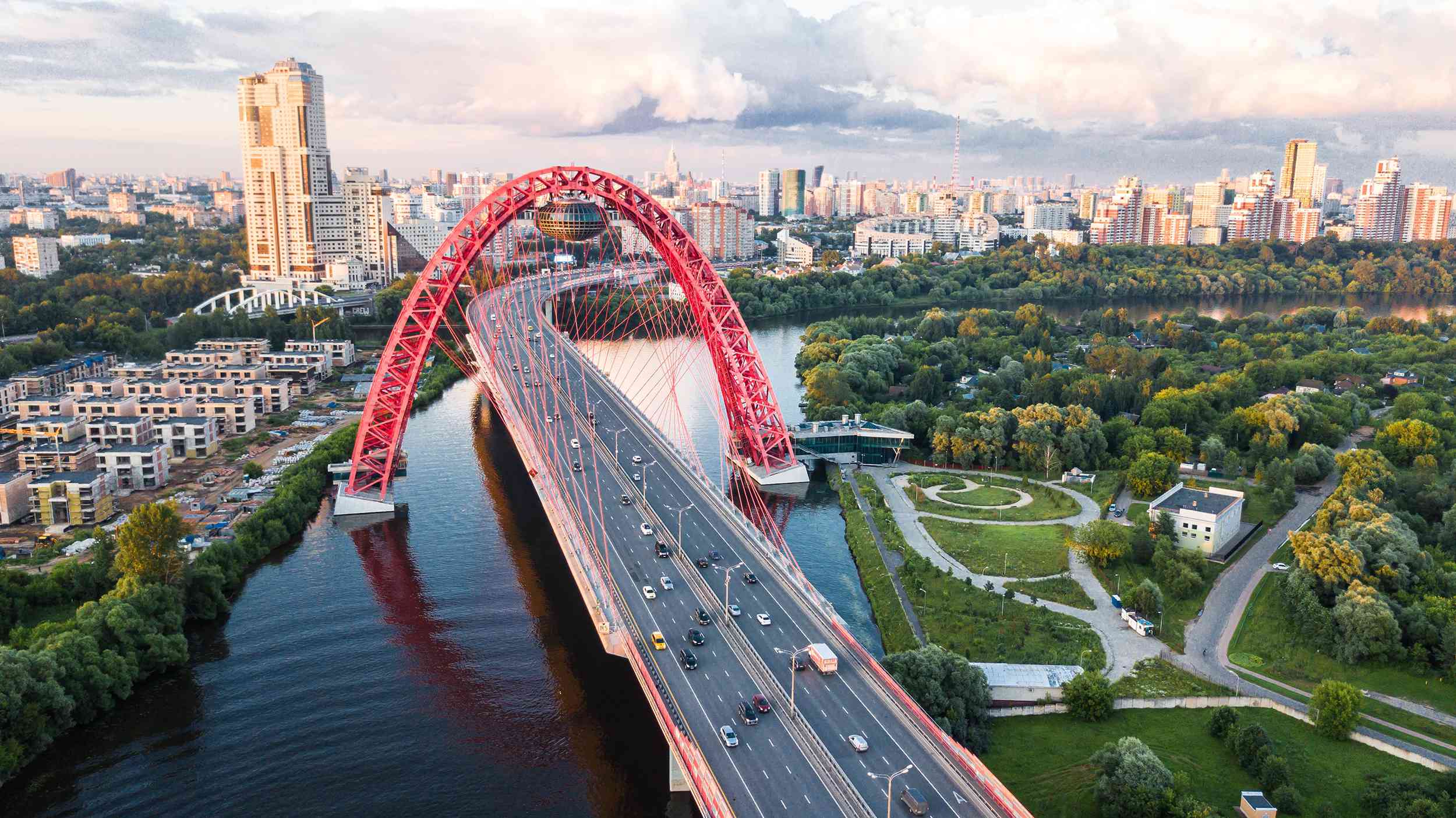
The estimated price of bottled water
$0.56 in USD (1.5-liter)
USER SUBMITTED RATINGS
- Drinking Water Pollution and Inaccessibility 40% Moderate
- Water Pollution 49% Moderate
- Drinking Water Quality and Accessibility 61% High
- Water Quality 50% Moderate
The above data is comprised of subjective, user submitted opinions about the water quality and pollution in Moscow, measured on a scale from 0% (lowest) to 100% (highest).
Related FAQS
- Best Water to Drink
- Lead in Drinking Water
- PFAS in Drinking Water
- Nitrates in Drinking Water
- Bacteria in Drinking Water
- Best Water Dispensers
Always take extra precautions, the water may be safe to drink when it leaves the sewage treatment plant but it may pick up pollutants during its way to your tap. We advise that you ask locals or hotel staff about the water quality. Also, note that different cities have different water mineral contents.
Sources and Resources
Sources cited, additional resources, traveller's notes.
While brushing your teeth with it is OK, assume that tap water isn't safe to drink. Stick to bottled water, boil water for 10 minutes or use water purification tablets or a filter.
Current Weather in Moscow
Some of the convenience stores in moscow.
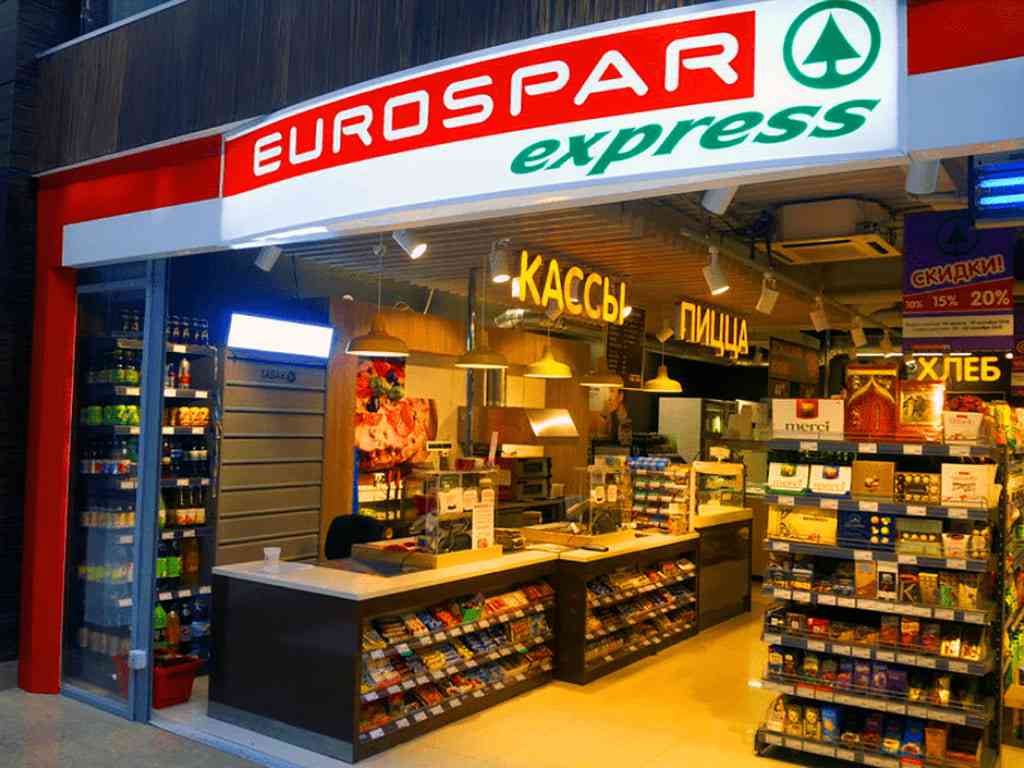
- Eliseyevskiy
- Pyaterochka
- Mini Market
- EUROSPAR Express
- Food Market
- ÐÐ’ Daily
- Planeta Vkusa
- Indiyskiye Spetsii
- Alyye Parusa
- ГаÑтроном â„– 1
- Мой Ðшан
Estimated Price of Bottled Water
Check tap water safety for nearby destinations.
- Dolgoprudnyy
- Krasnogorsk
- Dzerzhinskiy
- Ivanteyevka
- Shchelkovo (Shchyolkovo)
- Staraya Kupavna
- Elektrougli
- Losino-Petrovskiy
- Krasnoznamensk
- Elektrostal'
- Krasnoarmeysk
- Chernogolovka
- Beloozerskiy
- Solnechnogorsk
- Pavlovskiy Posad
- Sergiyev Posad
- Elektrogorsk
- Voskresensk
Check tap water safety for other cities in Russia
- Al'met'yevsk
- Aleksandrov
- Aleksandrovsk
- Aleksandrovsk-Sakhalinskiy
- Alekseyevka
Check tap water safety for other countries in Europe
- Bosnia and Herzegovina
- Czech Republic
- Faroe Islands
- Isle of Man
- Liechtenstein
- Netherlands
- New Caledonia
- North Macedonia
- South Georgia And South Sandwich Islands
- Switzerland
- United Kingdom
- Vatican City
How Do Your Rate the Tap Water in Your City?
How do you find the quality and the accessibility of the drinking water?
Are you concerned with the water pollution in your city?
- Very Concerned
- Somewhat Concerned
- Somewhat Unconcerned
- Not Concerned at all
Laos snags the most tourists from Thailand in Q1
More than 263,160 vietnamese people visited laos in the first three months of this year, becoming the second biggest source of foreign visitors to the country during the period, according to the tourism development department of lao ministry of information, culture, and tourism..
Laos welcomed over 1 million foreign tourists in the reviewed period, it said, adding that visitors from Thailand topped the list with 337,689. China, the Republic of Korea and China ranked third, fourth and fifth, respectively.
According to the ministry, in addition to promoting tourism, the Visit Laos Year 2024 also aims to introduce the country's art, culture and traditions, as well as provide information about its long-standing history and sustainable use of natural resources to tourists.
Recently, many famous travel magazines in the region and the world have rated Laos as one of the attractive destinations or "slow travel" spots. They highlighted its cultural attractions, outdoor experiences and timeless charm.
To achieve the goals set for this year, Laos has built short-term and long-term strategies to develop this key economic sector to compete with other countries in the region, making an important contribution to its economic recovery and development.
The Lao government hopes to host at least 4.6 million international tourists in 2024, generating a revenue of US$1.3 billion.
Viet Nam News
Asia News Network
MOST VIEWED
Bma orders inspection of manholes after man, 50, falls to his death, normal service on yellow line to resume this month after track repairs, canada police charge three with murder of sikh leader nijjar, probe india link, china launches chang'e-6 to retrieve samples from moon's far side, msd thailand partners siriraj hospital, mahidol univ. for clinical site project.
2018 Primetime Emmy & James Beard Award Winner
R&K Insider
Join our newsletter to get exclusives on where our correspondents travel, what they eat, where they stay. Free to sign up.
A History of Moscow in 13 Dishes
Featured city guides.

Labour Day Travel Trends 2024: Where are workers escaping to for a break?
As Labour Day approaches, the global workforce eagerly anticipates a well-deserved respite from the daily grind, seeking solace and excitement in a variety of destinations across the globe. Celebrated as May Day in many regions, this holiday offers a precious opportunity for workers to unwind and explore, with some enjoying an extended break spanning several days.
According to Trip.com Group’s latest data, Asia is the hottest travel destination during this period among travellers worldwide, with cities such as Tokyo, Bangkok, Hong Kong, Seoul and Taipei leading the pack in holiday momentum.
China, one of the biggest travel markets during the Labour Day holiday unfolding from May 1st to 5th, also saw a rise in outbound travel bookings. Chinese travellers set their sights on overseas destinations such as Japan and Korea, fuelled by the photo-worthy cherry blossom season which persists in areas such as Hokkaido in May. China’s domestic tourism also saw a boom with majestic sites such as the “Avatar” mountains of Zhang Jia Jie and Dajue Mountain set to draw crowds.
In Southeast Asia, island paradises like Hon Thom Island in Vietnam, Similan Island in Thailand and Mabul Island in Malaysia beckoned travellers with their pristine beaches and crystal-clear waters. Adventure tourism also saw a rise in bookings. Travellers were keen to explore beautiful ruins and waterfalls in Laos such as the Vat Phou temple and Kuang Si waterfall, or active volcanos in Indonesia like Mount Bromo. Singapore, meanwhile, saw travellers heading for exhilarating experiences such as the amphibious DUKW TM Tours and thrilling Skyline Luge.
Japan was also another key region which saw a remarkable rise in travel bookings, with the early May period coinciding with its Golden Week holiday from April 29th to May 5th.
Golden Week marks one of the nation’s most significant holidays, and globetrotters took advantage of the break to visit destinations such as Korea, Japan and Thailand. Domestic travellers were found making a beeline for Tokyo, Osaka and Fukuoka, with attractions in nature gaining favour: Mother Farm, a charming ranch destination, and Huis Ten Bosch, a Dutch village town with a sea of flowers, were among the top booked attractions.
As for Korea, Seogwipo city and Udo island in Jeju were favourites among travellers, who also visited conventionally popular cities such as Seoul and Busan. They were found enjoying the sunset from beach train rides, or opting for experiential shows such as kitchen performance art and even ladies-only shows.
In Europe, Germany and Italy stood out with a triple-fold increase in travellers compared to the same period in the previous year. Historic castles, palaces and cathedrals were a favourite: Neuschwanst Castle, Nymphenburg Palace, Cathedral of Saint Mary of the Flower and Milan Cathedral were among the top-ranked attractions.
Labour Day holiday: A time for culture, family fun and hidden gems
Labour Day also saw a diverse array of travel trends emerging, reflecting the evolving preferences of holidaymakers worldwide.
Cultural and historical tourism took centre stage as travellers favoured iconic landmarks such as the Winter Palace in Saint Petersberg, the Louvre Museum in Paris, and the Acropolis of Athens, immersing themselves in the rich history, architecture, and heritage of these revered destinations.
For families and thrill-seekers alike, theme parks and entertainment hubs emerged as hotspots for holiday fun, with Universal Studios Singapore, Tokyo DisneySea, and Disneyland Paris captivating visitors with a mix of rides, shows, and immersive experiences.
Unique destinations like Giethoorn, a fairytale village in the Netherlands, and the Chocolate Hills in the Philippines, also rose in popularity, offering travellers off-the-beaten-path experiences and picturesque landscapes that promise to leave a lasting impression.
There’s a collective recognition that after months of hard work, Labour Day presents a well-deserved opportunity for workers to unwind and recharge. And what better way to rejuvenate the mind, body, and soul than through the transformative power of travel?
Since you're here...
...there are many ways you can work with us to advertise your company and connect to your customers. Our team can help you design and create an advertising campaign
We can also organize a real life or digital event for you and find thought leader speakers as well as industry leaders, who could be your potential partners, to join the event. We also run some awards programmes which give you an opportunity to be recognized for your achievements during the year and you can join this as a participant or a sponsor.
Let us help you drive your business forward with a good partnership!
Yes, contact me I want to download the media kit
Comments are closed.
LATEST STORIES

AirAsia Cambodia takes off!

Turkish Airlines, Airbus and Rolls-Royce to strengthen partnership

Go Quest Adventures launches new immersive city trail in Plymouth

Beaches and big cities reign for summer travel as Americans head to bucket-list destinations: Allianz Partners
Welcome, Login to your account.
Sign in with Google
Powered by wp-glogin.com
Recover your password.
A password will be e-mailed to you.
Welcome back, Log in to your account.
SIGN UP FOR FREE
Be part of our community of seasoned travel and hospitality industry professionals from all over the world.
- LOGIN / SIGN UP
- Middle East
- UK & Europe
- USA & Canada
- Hospitality
- HR & Careers
- Luxury Travel
- MICE (Meetings, Incentives, Conferencing, Exhibitions)
- Travel Tech
- Travel Agents
- Airlines / Airports
- Conferences
- Cruising (Ocean)
- Cruising (River)
- Destination Management (DMC)
- Hotels & Resorts
- Hotel Management Company
- Hotel Technology
- HR / Appointments
- Meetings, Incentives, Conferencing, Exhibitions (MICE)
- Travel Agents (all)
- Travel Technology
- Tourism Boards
- Industry appointments
- Travel Bloggers
- Podcasts – Features
- How to join
- RSVP Portal
- Event Photos/Videos
- Competitions
- Search for Jobs
- Destination NaJomtien BanAmphur BangSaray *NEW*
- จุดหมายปลายทาง นาจอมเทียน หาดบ้านอำเภอ บางเสร่ *NEW*
- South Australia Reward Wonders *NEW*
- Ponant Yacht Cruises and Expeditions
- Encore Tickets (Chinese Guide)
- Affordable Luxury in Thailand by Centara Hotels
- Rising Above the Oridinary by Conrad Bangkok
- The Best of Thailand
- Who is IWTA
- Philippines
- Recommend Someone
- Recommend yourself
- IWTA AWARDS
- TRAVEL CLUB

COMMENTS
Costs of Traveling in Laos. Travel on a budget in Laos, from $180 − $270 USD weekly per person, mid-range $300 − $950 USD, and high-end from $930 − $1640 USD. However, costs depend on factors like accommodation, transportation, and activities. We did not include flights. Check flight prices here.
Exercise increased caution to Laos due to civil unrest. Some areas have increased risk. Read the entire Travel Advisory. Reconsider travel to: Xaisomboun Province due to civil unrest. Exercise increased caution in: Remote areas along the border with Burma due to crime. Areas of Savannakhet, Xieng Khouang, Saravane, Khammouane, Sekong ...
Laos reopens and prepares for international tourists with few restrictions. May 12, 2022 • 2 min read. It's one of Southeast Asia's most isolated countries but after more than two years of border closures, Laos has opened up to all international tourists…. in partnership with getyourguide.
Laos is a landlocked country steeped in nature, food, history, and Buddhism. The country is wrapped in a mountainous landscape, making it one of the most beautiful places in all of Southeast Asia. While it lacks the beautiful beaches of neighboring countries, adventure travel is big here. You can go zip-lining, kayaking, hiking, and cave tubing ...
Enroll in the Smart Traveler Enrollment Program (STEP) to receive security messages and make it easier to locate you in an emergency. Call us in Washington, D.C. at 1-888-407-4747 (toll-free in the United States and Canada) or 1-202-501-4444 (from all other countries) from 8:00 a.m. to 8:00 p.m., Eastern Standard Time, Monday through Friday ...
The 30-day tourist visa costs between $30 and $42, depending on where you're from. If you don't have a passport sized photo with you, it will cost you $1-$2 extra. The visa on arrival process is pretty straightforward and usually doesn't take more than 10 minutes. Safety: Overall, Laos is a very safe place to visit.
Day 3-5: Vang Vieng. Vang Vieng is one of the most gorgeous places you'll experience while traveling around Laos in one week, or perhaps in the world. This rural setting is where you'll see limestone mountains, blue lagoons, caves, and plains speckled with rice paddies and tufts of greenery.
Discover Laos. From the rolling mountains of the north to the river islands of the south, ours is a land of untouched wonder and rare beauty. Rich in history, traditions, diverse landscapes and cultures, Laos is sure to captivate your inner explorer.
Read all the advice in this guide as well as support for British nationals abroad which includes: advice on preparing for travel abroad and reducing risks. information for women, LGBT+ and ...
If your travel plans in Laos include outdoor activities, take these steps to stay safe and healthy during your trip. Stay alert to changing weather conditions and adjust your plans if conditions become unsafe. Prepare for activities by wearing the right clothes and packing protective items, such as bug spray, sunscreen, and a basic first aid ...
Before you travel, check with your transportation company about passport requirements. Its rules on passport validity may be more stringent than the country's entry rules. Regular Canadian passport. Your passport must be valid for at least 6 months beyond the date you expect to leave Laos. Passport for official travel. Different entry rules ...
I. Laos travel facts General information. Country name: Lao People's Democratic Republic Government: Unitary Marxist-Leninist one-party socialist republic Head of State: Mr. Bounnhang Vorachith - General Secretary of the Lao People's Revolutionary Party & President of Laos since 2016 Head of Government: Mr. Thongloun Sisoulith - Prime Minister of Laos since 2016
Rough Guides® is a trademark owned by Apa Group with its headquarters at 7 Bell Yard London WC2A 2JR, United Kingdom. Plan your visit to Laos: find out where to go and what to do in Laos with Rough Guides. Read about itineraries, activities, places to stay and travel essentials and get inspiration from the blog in the best guide to Laos.
Costs. Laos is one of the world's poorest nations, and consequently one of the cheapest Asian countries to travel in. Your largest expense is likely to be transport, with journeys usually costing between 60,000 and 120,000K; accommodation and food are very inexpensive.
Laos Travel is not just a local travel company based in Luang Prabang, but a gateway to discovering the true charm of Laos and other Southeast Asian countries. Our mission is to provide you with an authentic travel experience that connects you intimately with the cultures of Indochina. Our expert local guides will share with you the stories, traditions, and perspectives of the local people ...
Laos. Laos Tours & Vacations. Travelers come to Laos to experience the rolling mountains, remote villages, tribal crafts and the magic of the Mekong. They leave with so much more: irreplaceable memories of smiling locals, saffron-robed monks receiving alms and markets brimming with fresh produce. For those searching for authentic Asia, Laos ...
#Laos #bestplacesinlaos #travellaos🔔 Subscribe now with all notifications on for more travelvideos, best traveldestinations, top 10 places to visit and more...
1 (855)-265-0890. Home > Laos. Luxury Trips & Vacations to Laos. Ancient mysteries, incredible nature and an authentic culture consolidate fully into the living heritage that is Laos. Private Travel. Slow and relaxing, Laos is a place to focus on the moment, tune into wellness, visit a spa or take in a yoga class.
Step 1: Visit the official website. The first step in applying for a visa online is to visit the official website of the Laos Ministry of Foreign Affairs. You can find the website by doing a quick search on any search engine. Make sure to visit the official website to avoid any scams or fraud.
Laos' most important landmark is the Pha That Luang, a golden Buddhist stupa in Vientiane, while the capital's other highlights include temples like Wat Si Saket and the old quarter. If you have time, visit the peaceful Song River and the town of Vang Vieng, before exploring the Unesco city of Luang Prabang and surrounding nature, including ...
In summary, with careful planning, travelers can enjoy a memorable vacation in Laos with a daily budget of less than $20. Cheapest time to visit Laos: March to June (hottest time of the year in ...
The Mosvodokanal(Water services company), the state group that monitors the drinking water in Moscow, confirms that water is clean.The company produces high-quality drinking water and a safe sewage system to 14.2 million inhabitants of the Moscow capital. Also, according to specialists, tap water in Moscow meets all the requirements that have been recommended by Russia's chief state sanitary ...
Laos welcomed over 1 million foreign tourists in the reviewed period, it said, adding that visitors from Thailand topped the list with 337,689. China, the Republic of Korea and China ranked third, fourth and fifth, respectively. According to the ministry, in addition to promoting tourism, the Visit Laos Year 2024 also aims to introduce the ...
We are here to help with the two fastest alternatives from Moscow to St. Petersburg: by train or flight with pros and cons of both the ways to travel.
Its vast icy landscape and small population guarantee a peaceful and beautiful experience. 4. Mongolia. Mongolia offers a truly unique adventure. With vast grasslands, nomadic traditions, and a small population, tourists can experience the unspoiled beauty of this travel destination. 5. Uruguay.
1: Off-kilter genius at Delicatessen: Brain pâté with kefir butter and young radishes served mezze-style, and the caviar and tartare pizza. Head for Food City. You might think that calling Food City (Фуд Сити), an agriculture depot on the outskirts of Moscow, a "city" would be some kind of hyperbole. It is not.
Richard and Greg Davies clash with army tanks and head into space in the Russian capital. To watch the full episode click here http://www.channel4.com/progra...
Travellers were keen to explore beautiful ruins and waterfalls in Laos such as the Vat Phou temple and Kuang Si waterfall, or active volcanos in Indonesia like Mount Bromo.